


EDITOR’S NOTE






DAVE WHITE
Dave White is the editor of BoardRoom magazine. If you have comments on this article or suggestions for other topics, please send Dave an email to: dave@boardroommag.com.
Our Spring Equinox, the moment our northern hemisphere winter ended, arrived at 8:33 a.m. MDT, Sunday, March 20th.
It’s that annual time of renewal. Finally, spring has sprung and our optimism bodes well as the world surfaces from one of its most difficult challenges in years...the COVID pandemic.
Yes, variants of omicron have resurfaced in Asia, but hopefully the world won’t be overwhelmed as has happened during the past two years.
We anticipate warmer weather, sunny skies, long spring and summer nights, and of course, finely-manicured golf courses that so often seem to lure us into the false sense of security of a scratch golfer.
What’s not to like about spring and summer. And that’s the way it is with our March/April BoardRoom, another issue jam-packed with oodles of information for and about the private club industry.
We pay homage to our many BoardRoom ‘Excellence in Achievement’ Award recipients, including six people—Frank Vain, Lifetime Achievement; Ray Cronin, Three and Jackie Carpenter, Gary Player Educators of the Year and Jeff McFadden, CEO of The Union League of Philadelphia, John Fornaro Industry Impact Award and Bill Boothe, Dave White Editorial Award —who have received individual awards.
A separate story in this issue also features Boothe. Bill, a technology specialist in the industry for nigh on 30 years, cautions readers about club security.
Recently he related the story of a club that had been attacked by ransomware and the six-figure ransom it cost the club to make the problem go away. And as his story shows, and Bill tells us, cybersecurity is one of the most critical issues facing private clubs today.
“It’s amazing to me how poorly protected clubs are when the consequences of a systems breach can be severe,” Boothe lamented.
So, where does he see the future for technological innovation in the private club industry?
“We’re starting to see predictive business intelligence make its way into the club industry. Clubs have spent decades looking back at historical data to extrapolate what the future might bring. Advanced analytical software is now becoming available that will automate and improve the accuracy of those predictions,” Boothe predicted.
This is our 23rd year of vendors, consultants and specialists in the private club industry with the BoardRoom
Awards, the only award of this kind in the industry. Kudos to all our recipients and may your success continue.
n n n
The Fountaingrove Club in Fountain Grove, a community near Santa Rosa, CA and the Tokyo America Club, in the heart of Tokyo, are featured in our continuing series on BoardRoom Distinguished Clubs
Ron Banaszak, executive vice president of International Business Development, BoardRoom Distinguished Clubs, tells us how the Fountaingrove Club has risen like a Phoenix from the ashes of the 2017 Tubbs fire that ripped through the Santa Rosa area. It’s a remarkable comeback for this club, members and employees who lost so much in the devasting fire that razed the area for over three weeks.
Fountaingrove’s mission has been to create ‘One Club, Once Community’ and that remains the club’s focus and goal today!
The Tokyo Club, with a very diverse membership, is home to more than 4,000 members and their families from 60 countries. In addition, the club’s staff is drawn from more than 40 nations. This spectacular club is a draw as the hub of international exchange in the dynamic and cosmopolitan city of Tokyo.
n n n
Just how much do demographics affect private clubs? That’s the topic of one of Henry DeLozier’s contributions this issue... How Will Gen Zers Influence the Private Club Industry? In this piece, DeLozier tells us there are three important economic characteristics to keep in mind when considering the influence of Gen Zers on your club, and he suggests what clubs should do about it. Indeed, as you’ll read, there are differences from the Baby Boomers, who have had such a strong influence on the private club industry for so many years. Yes, change continues.
n n n
And in this issue, we continue with our stories of BoardRoom’s Top Presidents including Kevin Broderick, President, Mountain Lake, Lake Wales, FL; Rick Callan, President, Fort Collins Country Club, Fort Collins, CO, and Jonathan Corpina, President, Whippoorwill Club, Amonk, NY. BR
Publisher/CEO
John G. Fornaro
Editor
Dave White
Assoc. Editor/VP Creative
Heather Arias de Cordoba
Copy Editor
Chryssoula Filippakopoulos
Innovative Ideas Editor
Heather Arias de Cordoba
APCD Executive Director
Bill Thomas
Editorial & Marketing Director
Dee Kaplan
Business Development
Joshua Nuzzi
Accounting/Subscriptions
Ronni Dana
Contact Information
www.BoardRoomMagazine.com www.apcd.com (949) 376-8889
Featured Columnists
Henry DeLozier
John G. Fornaro
Bonnie J. Knutson
Nancy M. Levenburg
Contributing Writers
Heather Arias de Cordoba
Ronald Banaszak
Bruce Barilla
Nancy Berkley
Bill Boothe
Jarrett Chirico
Ronald F. Cichy
Dave Doherty
Susan Greene
Co-Founder/CEO
Jerry McCoy Phil Newman
Gregg Patterson Whitney Reid Pennell
Tim Hubbard
Dean Kandle
Julia Kelly
MiRan Kim
David W. Lacey
Rick Ladendorf
Melissa Low
Ryan Maione
Chief Information Officer
Jeff Briggs
Executive Director
Bill Thomas
Executive Assistant/ Director of Support
Joshua Nuzzi

Thomas
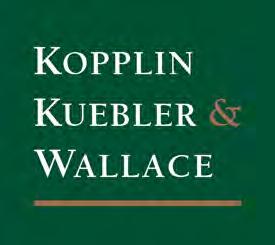
Craig Marshall
Tom Neill
Mike Phelps
Joanne Sieljes
Michelle Tanzer
Till von Ruexleben
Keith Soriano
Strategic Partners and Allied Associations

















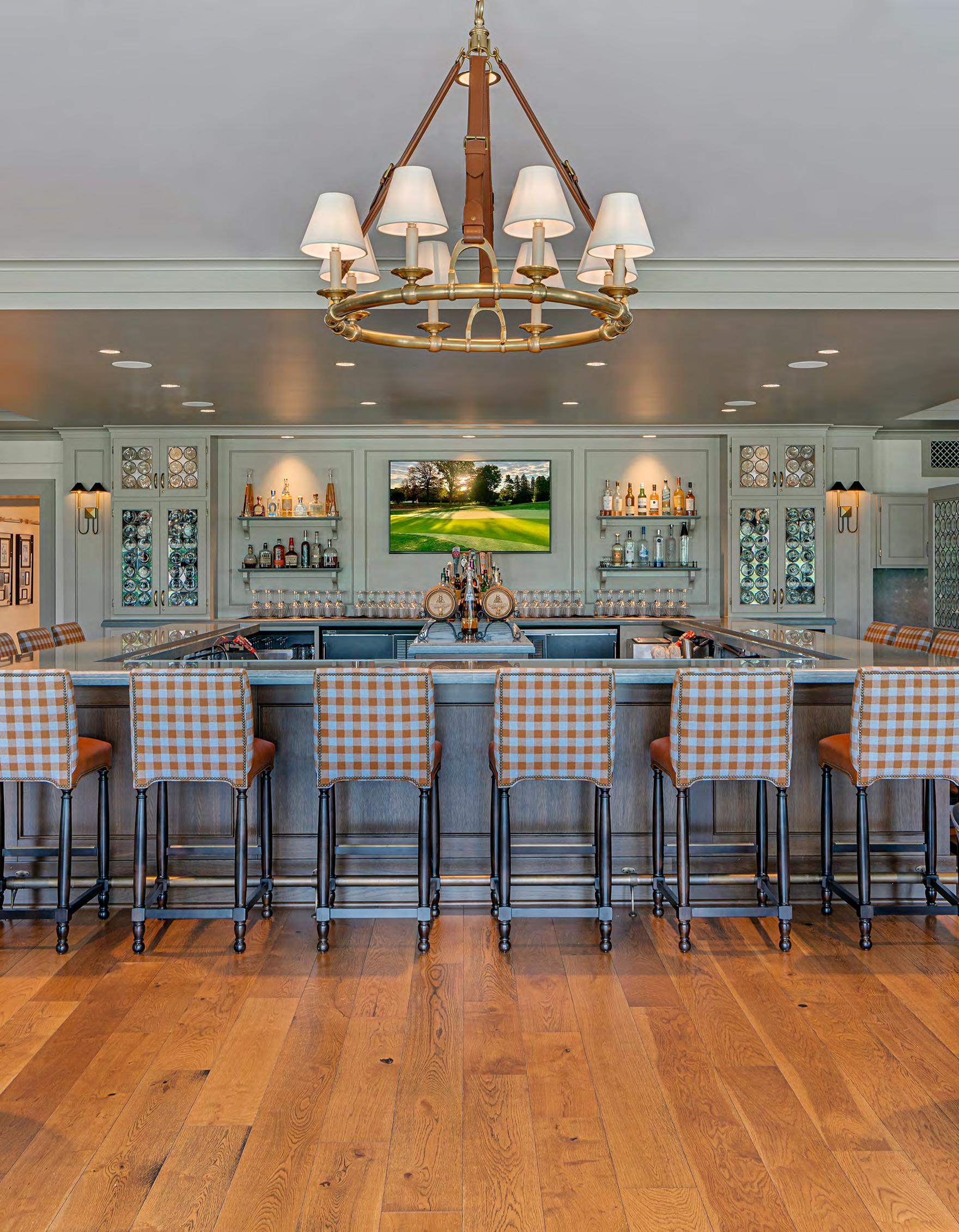



PUBLISHER’S PERSPECTIVE | 10

BY JOHN G. FORNARO
A private club remains a place where people of like-minded interests meet and mingle. For many, it’s a home away from home. So, what makes a great private club or what makes a club successful? Is it the amenities, the members, the staff...the location...or?

BY PHIL NEWMAN
The next generation of club members is engaging in club governance. These members have come of age in a time of blockchain, bitcoin and cashless transactions, so clubs need to consider how they can integrate them into club governance and strategy. Reinvesting in the education of committees is arguably the most impactful way of achieving this.

BY JERRY MCCOY
We made an argument about a year ago that all members are created equally from an operating perspective. We would now like to make the argument that new members are more important from a membership and strategic planning perspective.

HOW WILL GEN ZERS INFLUENCE THE PRIVATE CLUB INDUSTRY?
BY HENRY DELOZIER
Born after 1996, most Gen Z members are just now eligible to vote. It has been COVID-19 that has most influenced Gen Z and their views of private clubs and the economics of such clubs. What are three important economic characteristics to bear in mind when anticipating the influence of Gen Z on your club?

BY WHITNEY REID PENNELL
Skye has been employed by her club for 10 years, promoted frequently by former managers who were also promoted from within. They were “great” in their roles and were recognized with a “step up the ladder” to justify an increase in pay they deserved. With each promotion, the managers didn’t receive additional training. BOARDROOM

BY THOMAS B. WALLACE III
Performance management has never been as important as it is now. If you love your job and you want to keep it, or if you have a great CEO/GM or department head that you want to keep, this article is for you.

OH NO! NOT ANOTHER ONE! HERE COMES GENERATION ALPHA BY
BONNIE J. KNUTSON
As an undergraduate, one of my favorite elective courses was about the geographical history of the Bible. It had nothing to do with religion, but how rivers, mountains, deserts, and arable land affected the thinking and actions of people throughout the ages. I did not fully realize it then, but that class was the beginning of my interest in what came to be known as generational theory.

BY
NANCY M. LEVENBURG
We’ve all seen it … the sign posted on the door of our favorite eatery: “Due to COVID19, we have decided to temporarily close. We hope to open next Wednesday as long as we feel it’s safe to do so. We apologize for any inconvenience.” Or the notice posted on Facebook that a local day care was closed due to COVID-19 and staffing issues. TRIBAL MAGIC |

CERTIFIED DOOR OPENER BY GREGG PATTERSON
You’re the new GM at The High and Mighty Club. You beat out dozens of applicants who wanted the job because The High and Mighty Club is outrageously special — they keep their managers for decades, love ‘em to death and pay ‘em the big bucks. You’re glowing, pumped up, energized. You want to be a big success because you’ve got kids to feed, a mortgage to pay, a spouse to pamper and a Porsche to repair.















John G. Fornaro is the publisher/CEO of BoardRoom magazine, co-founder/CEO of Distinguished Clubs and the CEO of the Association of Private Club Directors (APCD). If you have comments on this article or suggestions for other topics, please contact John Fornaro at (949) 376-8889 or via email: johnf@apcd.com
A private club remains a place where people of like-minded interests meet and mingle. For many, it’s a home away from home.
So, what makes a great private club or what makes a club successful? Is it the amenities, the members, the staff...the location...or?
During the past couple of decades, private clubs faced a significant recession and, more recently, the COVID-19 pandemic, which has severely hampered many private club operations while at the same time inspiring innovative ideas for the benefit of private club members.
“A devoted membership with unwavering loyalty and a determined staff with grit and passion certainly ensure dayto-day success at a private club - that is without question,” expressed Union League’s general manager, Jeff McFadden.
“Nothing would be possible without a team of professionals working in sync to offer the finest amenities and services. Without a supportive membership rooted in tradition and excited for experiences, there would be no need for such offerings.
“While this symbiotic relationship is essential and is likely the ‘best answer’ as to why a club is great, it’s certainly not enough to make it stand apart or be acknowledged as truly special.
I’ve visited clubs with initiation fees worth hundreds of thousands of dollars and others at a fraction of that. And I can honestly say I’ve seen some of the happiest members at clubs that have provided a great member experience equally. However, the membership price alone doesn’t convey the idea that you’re guaranteed a great member experience at that club. All the great clubs have a committed general manager and well-trained management and staff. They also have board members that don’t micromanage but who focus on fiduciary issues and long-range planning while overseeing the strategic plan that the GM executes. The board members are onboarded properly and understand their roles and responsibilities.
Private clubs deal with a power structure that is constantly changing, as new presidents take their turns every year or two, while a board of directors often goes through a complete rotation every three years or so.
At the same time, a club’s president, board of directors and general manager often must oversee the delicate operation of a golf course, its maintenance program, infrastructure and amenities which draw members to the club.
During tough times, many clubs have found themselves on the ropes because they did nothing more than cut, cut, cut expenses while doing little to attract new members, thus creating memberships of much less value and clubs that offer little, much to the chagrin of members who did remain.
But perhaps one of the most significant factors that makes for a successful club is change…change that appeals to a club’s membership.
The Union League of Philadelphia, a BoardRoom Distinguished Club, founded in 1862, is considered one of the country’s great and highly successful private clubs. And for many reasons.
“For a club to be remarkable, it must be adaptable. To achieve something ‘great’, it must take risks and break the mold. For The Union League of Philadelphia, the tides shifted from an average club to the number one club when the League’s leadership encouraged change.
“Stepping outside of the cultural norm was bold, and it was risky. Those risks paid off in dividends and the impact is still being felt as the League operates six unique locations with a plethora of amenities in a diverse portfolio,” McFadden added.
“Widening the range of physical League locations certainly was not easy. As the League spread into multiple markets with a more diverse membership and fresh staff, it was incredibly important to infuse League culture into each new operation.
“Each experience at each location must feel authentic to the environment but must also include the standards members know and expect. Protecting the League’s brand is perhaps the largest challenge,” he explained.


GLOBAL PERSPECTIVES

HENRY DELOZIER
Henry DeLozier is a partner at GGA Partners. He can be reached via email: henry.delozier@ggapartners.com
Like generations before it, Generation Z has been shaped by events not of its own making.
Born after 1996, most Gen Z members are just now eligible to vote. They were only coming of age during the Great Recession and have inherited – at least for now – a strong economy with record-low unemployment.
It has been COVID-19 that has most influenced Gen Z and their views of private clubs and the economics of such clubs. So, here are three important economic characteristics to bear in mind when anticipating the influence of Gen Z on your club.
• They are more racially and ethnically diverse than the previous generations. According to the Pew Research Center, one-in-four Gen Zers are Hispanic, 14 percent are black, six percent are Asian and five percent are some other race or two or more races. In addition, hardly more than half (52 percent) are non-Hispanic white, down from the 61 percent proportion of Millennials in 2002.
They are children of immigrants as roughly one in five (22 percent) have at least one parent who was an immigrant to the U.S. compared to Millennials (14 percent) one generation earlier. As a result, U.S. Census Bureau projections indicate that this generation is projected to become majority non-white by 2026.
This effect varies by region as only 40 percent of Gen Zers in the West are non-Hispanic white. In the South, 46 percent of Gen Zers are non-Hispanic white. Minority representation is lowest in the Midwest, where more than two-thirds of Gen Zers (68 percent) are non-Hispanic white.
Takeaway - Strategically speaking, club leaders must begin now transitioning their clubs to a more diverse and inclusive culture.
• They are the best educated of generations to date. Gen Zers are also more likely to have a college-educated parent than are previous generations of young people. In 2019, 44 percent of Gen Zers ages 7 to 17 were living with a parent who had a bachelor’s degree or more education, compared with 33 percent of Millennials when they were the same age. These trends reflect the overall trend toward more Americans pursuing higher education.
Advanced educational attainment leads to greater earning power for Gen Z. According to Visual Capitalist, the Silent Generation and Baby Boomers combine for an incredible 70 percent of all household wealth in America. Gen X is well behind them but still way ahead of Millennials.
Gen Z is now poised to break that trend.
“Among all generational groups, Gen Z’s economic power is the fastest rising,” said Andrea Chapman, who analyzes Gen Z’s spending and saving patterns in her position as marketing manager for Nature and Bloom. “As they join the workforce, their income is predicted to rise more than fivefold to $33 trillion by 2030, accounting for more than a quarter of global GDP, and exceeding millennials’ income by 2031.”
The Deloitte Global 2021 Millennial and Gen Z Survey revealed the following facts about Gen Z:
• 52 percent donate to charities
• 49 percent make choices about who they’ll work for based on personal ethics
• 40 percent have been a volunteer or member of a community organization, non-profit or charity
• 40 percent created social media content to bring attention to a social, political, environmental or human rights issue, and
• 30 percent have participated in a rally, march or protest.
Takeaway - Gen Z is financially sophisticated and will arrive at private clubs with greater economic savvy and durability than previous generations.
• They favor proactive and accountable governance and leadership. According to Pew Research findings, they are more likely to favor proactive and activist governance. As well, members of Gen Z are more likely than older generations to look to government to solve problems rather than businesses and individuals. Fully seven-in-10 Gen Z’ers say the government should do more to solve problems, while 29 percent say government is doing too many things better left to businesses and individuals.
A somewhat smaller share of Millennials (64 percent) say government should do more to solve problems. This view is even less prevalent among older generations (53 percent of Gen Xers, 49 percent of Boomers and 39 percent of Silents).
Takeaway – Gen Zers expect a club that has, uses and enforces standards and rules that are transparently applied to all members. BR







Whitney Reid Pennell, president of RCS Hospitality Group, is a celebrated management consultant, educator, and speaker. RCS specializes in strategic planning, operations consulting, food and beverage management, executive recruitment, and training programs. RCS has been recognized 12 times with a BoardRoom Excellence in Achievement Awards. RCS continues to offer innovative solutions through RCSUniversity.com, an online virtual training portal for employees and managers. For more information, phone (623) 322-0773 or visit the RCS website at www.consultingRCS.com.
Skye has been employed by her club for 10 years, promoted frequently by former managers who were also promoted from within.
They were “great” in their roles and were recognized with a “step up the ladder” to justify an increase in pay they deserved.
With each promotion, the managers didn’t receive additional training. Eventually, Skye’s predecessors reached a level of incompetence, becoming frustrated and leaving, or they were terminated because their lack of skills and knowledge negatively impacted the department.
In her first job, Skye was a good busser – organized and hardworking. Skye became a great server – friendly and energetic. The club had a sommelier/beverage manager, so Skye never had to learn much about wine or beverages. When Skye was promoted to supervisor, she began training new team members the way she had been trained, which wasn’t very thorough or engaging. Quality suffered.
When the department director left, Skye was the easiest and next logical replacement. “|She’s a good supervisor; of course, she’ll be a good manager and should be given the opportunity” was heard in the house committee meeting. Skye was quickly promoted to food and beverage director, and she feels a knot in her stomach because she realizes how much she doesn’t truly know.
Skye doesn’t understand how COGS work so she cannot troubleshoot it when questioned. She doesn’t understand the P&L statement but never lets on. She’s picked up a few buzzwords to be able to write an adequate variance report. COGS have increased, revenue has declined.
Skye’s helpful linen and beverage vendors are placing her orders just like the managers before her. Beverage inventory has increased as have linen expenses, but since Skye’s never placed an order, it goes unnoticed.
When Skye’s general manager tells her she needs to better control labor costs, she starts threatening her staff when they reach overtime and schedules herself as a server, putting her behind on other management tasks. Labor increased.
Skye is defensive when new employees point out a better way to program the point-of-sale system, offer more efficient organization for the service station, or suggest impact-
ful ways to schedule staff from their previous restaurant. New employees don’t last long because Skye tends to micromanage and belittle them without realizing it is because of her insecurities. Turnover increased.
Skye’s interview questions don’t identify past behavior, member service skills, or if cultural values match. Because Skye hasn’t been taught how to interview, there have been many bad hires.
Skye trains staff on the shortcuts learned over the years from her predecessors, often forgetting safety and sanitation standards. She hasn’t been trained how to train staff or increased her knowledge of sanitation/safety practices. Work accidents have increased.
Skye lets her key staff do the schedule so the team will be happy with their hours, keeping conflict low, because Skye is uncomfortable with conflict. Member service suffers because Skye doesn’t know how to hold employees accountable.
Sadly, Skye has clung to previous tasks because she’s comfortable with them but struggles with her new management duties. Skye is stressed out. She works 70-plus hours a week trying to keep up yet feels like she is drowning. She’s curt with staff, passive-aggressive with members, has no time to eat, and vents to her once co-workers about things she shouldn’t, without realizing the damage being done. She is busy, but not productive or effective in her role and she knows it. Her family is suffering as is Skye’s health.
It is an unfortunate, yet frequent story of promotions from within. Soon, another great employee will leave, but not before further damage is done to the finances, the employees, the club’s culture, or the membership. When I’m asked about improving retention – this is the key. Train managers who have touch points with the employees and members the most.
Now is the time to give managers the training, tools, and resources needed to be successful. At a minimum, we must teach new managers how to interview and train, and manage finances, schedules, safety, and conflict resolution – to name a few.
Yes, Skye is the limit to the success of your club. BR

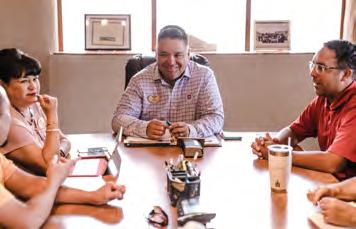

Start your search with the only team you’ll need! Let us connect you with the most talented and qualified industry professionals.




Philip G. Newman, CPA, CIA, CGFM is a partner with RSM US LLP. He can be reached via email: philip.newman@rsmus.com
The next generation of club members is engaging in club governance. These members have come of age in a time of blockchain, bitcoin and cashless transactions, so clubs need to consider how they can integrate them into club governance and strategy.
Reinvesting in the education of committees is arguably the most impactful way of achieving this.
Much club literature exists discussing the importance of orientations and retreats for club boards. Being able to align board and management lines of sight is a proven best practice in club governance and management. Yet it appears that too few private clubs also apply the same best practice to their key committees, particularly the finance committee. Perhaps the finance committee is assumed to know what it should be doing as it is typically composed of individuals with many years of business and financial acumen, but how many understand the number one financial commandment for any truly successful private club? We budget for the mission. We don’t change the mission to suit the budget.
A finance committee orientation should encompass many of the elements of traditional board orientation, albeit with, of course, a greater focus on the mechanics of private club finance and accounting – both from an industry and from a club-specific perspective.
Consider this sample agenda:
• Financial controls. The club controller or chief financial officer should deliver an overview of key controls in place, particularly over the purchasing and expenditure cycle. This can go a long way to diffusing any concerns or pre-emptively answering questions about how management controls spending. Millennials will ask how the club uses technology to streamline financial processes – from online purchase order systems to paperless accounts payable systems and virtual payment options. Proactively addressing this topic is key to earning the confidence of this generation of club members.
• Cybersecurity. A major fallout of a cybersecurity breach is often financial and so a discussion of the club’s approach to this risk should be included in any finance committee orientation. Next-generation members are already asking more questions in this regard than previous generations.
• Budgeting. Department heads should be willing and able to explain their budget process and rationale and how it supports the annual business plan for their department. Committee members should visit each club area so department heads can bring to life the numbers in their budgets. The club general manager/chief operating officer and the chief financial officer can then lead an overarching discussion of how the overall club operating and capital budgets align with the club’s mission and strategic plan. This would be the time to drive home that the most important number in a club’s financial statements sits at the bottom of the balance sheet: members’ equity. Everything else simply pales in importance.
• Industry perspective. External financial consultants are often the critical element in educating members about the realities of industry economics, including the financial history and position of their own club. Benchmarking is a useful tool to accomplish this. If the club has an industry experienced CPA firm providing audit and tax services, the lead partner can discuss industry practices, key tax issues, financial norms and challenges. Alternatively, many clubs have sought to bring in experts from around the country to ensure committee members understand that their club is both unique … and not unique … in a financial sense. Adding a legal element to the conversation by reviewing the financial fallout of regulatory and legislative issues is also impactful.
As club chief operating officer, if you’re unsure of how much time to invest with your finance committee, consider this closing comment from venerable industry commentator Kurt Kuebler: “If you want to be in charge, you need to be able to convey how the business is functioning and share the trends that it is following. The problem for many is that they’ve been conditioned to think that that isn’t their role, or they simply don’t have the confidence to do so!”
Current and previous generations of members have expected this from their chief operating officer; future generations will, too – just quicker, slicker and more often. BR

BOARDROOM BASICS AND BEYOND

Thomas B. Wallace III, CCM, CCE, ECM, is a partner of Kopplin Kuebler and Wallace, a consulting firm providing executive search, strategic planning and data analysis services to the private club and hospitality industries.
Tom can be contacted at (412) 670-2021 and at: tom@kkandw.com
an Ongoing Process
Performance management has never been as important as it is now. If you love your job and you want to keep it, or if you have a great CEO/GM or department head that you want to keep, this article is for you.
I’m astounded at how many managers of great clubs haven’t had a review from their board in five years (or more!). I’m shocked when managers are let go and say they had no idea it was coming. I’m always floored when department heads share that they haven’t had any feedback from their supervisor(s) for months on end.
Feedback is the breakfast of champions. It should not be feared; it should be thought of as fuel and here’s why …
I came up in the industry with few reviews and little feedback from my supervisors. In my first year as GM/CEO of The Club at Mediterra, my board initiated my first 360-degree review. Fifty people, including board members, committee members, department heads and line-level employees, shared what they thought were my strengths and areas of growth opportunities.
I vividly remember receiving the report from my club president … all 99 pages of it. At first, I was defensive, but after sitting with the comments for a bit, I was grateful. I was appreciative of the board members, many of whom were successful high-level CEOs, for their insight on my leadership, and I was grateful to my teammates for their honesty.
I grew exponentially from that experience. My confidence was boosted by the positive things people said about me, and I took the initiative to work on and improve what they said were my areas of growth.
I’m often shocked by the lack of reviews and performance-based conversations because they are crucial to a person’s success. If you aren’t giving and receiving feedback regularly, you aren’t doing yourself any favors. You are doing a disservice to yourself, your team and your club by avoiding a tremendous growth opportunity.
If you aren’t giving your direct reports feedback, you aren’t raising their bar or pushing them to grow. If your board and team aren’t giving you feedback, they aren’t helping you develop.
Feedback is about alignment and evolution; without it, you will never be at your best. It’s the reason top-performing clubs are constantly analyzing their approach and providing feedback to continually evolve and improve their performance.
Shirlene Industrious (pictured right), my former HR director at The Club at Mediterra, says, “It’s healthy for you to know where you stand and it’s healthy for you to share your insight with your team. It may be uncomfortable for some of your direct reports to receive your feedback but they need it; some even crave it.
“It’s up to you to show them where their growth opportunities are and assist them in creating roadmaps to achieving their goals. Collaborating with them on defining the necessary benchmarks fosters a healthy, proactive working environment. Create an atmosphere of self-awareness because feedback is critical to everyone throughout the entire chain of your club.”
I get it, reviews are time-consuming and they may be intimidating. If you’re overwhelmed by a 360-degree review, start with an employee satisfaction survey. Like a mem-

ber survey, it’s important to know where your people stand and what they think of working at the club.
An employee survey pinpoints the gap between what leaders believe and reality. It’s a great way to get a read on the leadership team, culture of the club and the overall happiness of employees. When you receive the scores of the employee survey, you can identify areas of improvement or concern.
“If you have key staff that you can’t imagine operating the club without, then don’t take them for granted,” Industrious says. “It’s not just the complainers you need to pay attention and focus your efforts towards. You have to constantly water ‘the tree’ because it may be green one day and brown the next. Employee engagement can fade at times; continuous feedback is essential for the people you want to keep around.”

BoardRoom’s “Excellence in Achievement” Awards for 2021 mark the 23rd year, BoardRoom magazine honors and recognizes the private clubs’ business partners and the achievements of exceptional individuals in the industry.
BoardRoom magazine’s industry peers review and select these outstanding suppliers and consultants representing various aspects of the golf course and club operations. Winners, each year, are selected for overall excellence in their respective fields, achievements, innovation, vision for future growth and continued impact on private club operations.
“Every year, we see increasing innovation, achievement, vision and dedication from BoardRoom Award recipients. It’s never-ending,” expressed John Fornaro, publisher of BoardRoom magazine
“Of course, private clubs are the beneficiary of outstanding work of the industry’s vendors. Every one of them is the leader in their respective field and we’re delighted to recognize their contributions each year.”
In addition to awards for vendors, there also are individual awards recognizing the innovation, achievements, vision and dedication of others for their contributions.
This year BoardRoom magazine recognizes Frank Vain, president of the McMahon Group, with BoardRoom’s Lifetime Achievement Award–2021 for his many contributions to the industry over the years.
As well, the McMahon Group is the first company in which two people –Bill McMahon and Frank Vain – have been selected BoardRoom Lifetime Achievement Award recipients.
“Frank has contributed to our industry through his leadership, research, education and organizational skills and achievements. In addition, he stands out from others for his kindness, generosity, keen intelligence and valuable contributions to those he serves,” Fornaro added.
Recipients of the BoardRoom Lifetime Achievement Award have made sustained contributions of leadership excellence with exceptionally farreaching impact on the club industry.
These industry leaders share how they lead and inspire people to achieve high-level performances while becoming trailblazers and mentors for excellence throughout the club industry.
Jeff McFadden, chief executive officer of The Union League of Philadelphia, is being honored with the John Fornaro Industry Impact Award –2021 for his accomplishments with the club that’s home to more than 4,000 men and women and ranked as the number one city club in the country.
“Jeff’s incredible vision has had a huge impact on the Union League,” commented Fornaro. “The club has been undergoing an astonishing expansion that offers members exceptional amenities. Clubs around the country can learn much from what Jeff McFadden has done at The Union League of Philadelphia.”
The Union League, founded in 1862 as a patriotic society to support the union and policies of Abraham Lincoln, is a jewel in the city of Philadelphia. It offers members a wide range of amenities including the Union League of Philadelphia; The Bungalow, a private member’s only dining room; The Union League Golf Club at Torresdale, an 18-hole Donald Ross course offering golf, dining, in addition to a pool, tennis courts and trap facilities; The Union League Guard House, a private members’ only dining room, dating back to 1790, located in Gladwyne, PA; Union League National, a 27-hole course located in Swainton, NJ; the Union League Liberty Hall with the Gary Player championship course in Lafayette Hill, PA, and the Lodge, which offers 120 hotel rooms and more than 50,000 square feet of meeting and event space.
Three people share The Gary Player Educator of the Year Award for 2021. They are Jackie and Three Carpenter and Club Benchmarking’s founder, Ray Cronin
Cronin founded Club Benchmarking in 2009 to provide a business intelligence platform for the private club industry by aggregating data from clubs across the country for analysis and identification of relevant benchmarks. It’s a process clubs have embraced as they rely on data to gain control over their outcomes and build financial health for their clubs.
Jackie and Three Carpenter: Energy and content, caring for their industry and the individuals they touch are the hallmarks of Three and Jackie Carpenter. From their early development of top-notch intern programming to the release of the book People First, the Carpenters have continually sought to identify staff leadership opportunities and drive “team” development into every club situation.
Through their educational programs and mentoring, they have touched and elevated the lives of countless new young stars and some of the more seasoned veterans. With their infectious enthusiasm for life and sharing, they have become the private club industry’s modern-day evangelists for positive interaction and work-life balance.
Their workshops, seminars and appearances at industry association venues have been widely acclaimed as informative, insightful and something that the entire club team should participate in together.
Bill Boothe, one of the industry’s leading technological consultants, is the recipient of the Dave White Editorial Award for the more than 90 technology stories that he has written for BoardRoom magazine over the past 20 years. Bill Boothe’s contributions over the years have added to the wealth of technical information for private clubs, not only as a writer for BoardRoom but as a private consultant to hundreds of private clubs over the years.

Boothe’s achievements are featured in a separate story in this issue of BoardRoom. Stories about Frank Vain, Three and Jackie Carpenter, and Jeff McFadden will follow in later issues. Ray Cronin was featured in BoardRoom’s September/October 2021 issue.
BoardRoom magazine is the only private club industry publication designed to educate the board of directors, presidents, owners, general

managers and department heads of private golf, city, yacht, tennis and country clubs about all aspects of the club, golf course management and operations. BoardRoom is distributed through paid subscriptions to clubs, organizations and businesses throughout the United States, Canada, Europe, Australia and Asia. BR




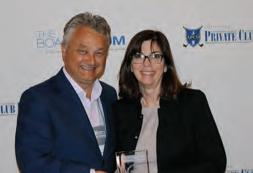





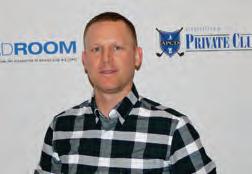
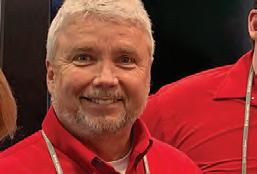
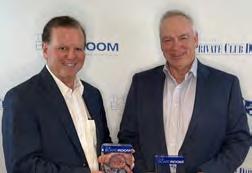










































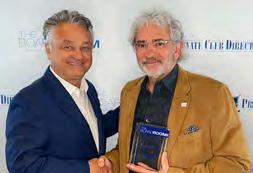





18. CLUB ENTERTAINMENT The Members Only Show Michael Gutenplan





19. CLUB FITNESS PROGRAMS FITNESS EQUIPMENT Technogym
20. CLUB MANAGEMENT SOFTWARE NorthStar Club Management Software
21. CLUB PHOTOGRAPHY EA Photography
22. CLUB SIGNAGE Signera
23. CLUBHOUSE ARCHITECTURAL DESIGN INTERIOR – ENTERTAINMENT ROOM NEW CLUBHOUSE OUTDOOR - TERRACE AND DINING* WINE CELLAR DESIGN Marsh & Associates | MAI
24. CLUB SUPPORT MOST INNOVATIVE CLUB MANAGEMENT SOFTWARE RESORT AND HOTEL MANAGEMENT SOFTWARE Jonas Club Software
25. CLUBHOUSE RENOVATION* INTERIOR – GUEST SUITES RENOVATIONS C2 Limited Design Associates
26. CLUBHOUSE RENOVATION* ClubDesign Associates
27. CONSULTING COMPANY Club Benchmarking
28. CUSTOM DESIGN HOSPITALITY UNIFORM Ambassador Uniform
29. CUSTOM DESIGN OUTDOOR FURNITURE PURCHASING COMPANY
XHIBTZ Contract Furnishings
30. CYBERSECURITY COMPANY Pulsar Security
31. DATA PRIVACY SOLUTIONS CSR Privacy Solutions



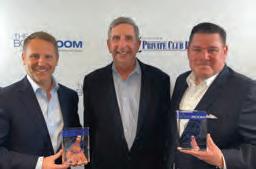
32. ELECTION MANAGEMENT SYSTEM Survey & Ballot Systems
33. ENVIRONMENTAL COMPANY Vivid Leaf
34. EXECUTIVE SEARCH FIRM Kopplin Kuebler & Wallace
35. FOOD & BEVERAGE PRODUCT Emersa WaterBox
36. FOOD & BEVERAGE TECHNOLOGY PRODUCT System Concepts, Inc. / FOOD-TRAK
37. FURNITURE MANUFACTURER Gasser Chair Company
38. GOLF COURSE MAINTENANCE FIRM BrightView
39. HISTORIC CLUB RENOVATION STRATEGIC PLANNING Chambers
40. HOSPITALITY UNIFORMS High-End Uniforms
41. HUMAN RESOURCES Gecko Hospitality
42. INSURANCE S&K Insurance
43. INTERIOR - CLUBHOUSE* INTERIOR - FITNESS OUTDOOR - TERRACE AND DINING* Castor Design Associates, Inc.
44. INTERIOR - CLUBHOUSE* HINT | Harris Interiors
45. INTERIOR – GENTLEMAN’S LOUNGE INTERIOR – LOCKER ROOM WINE ROOM DESIGN Peacock + Lewis – Architects and Planners
46. LAW FIRM Addison Law
47. LIGHTING
SUSTAINABILITY PRODUCT SES Lighting




48. LOCKER COMPANY Salsbury Industries
49. MANAGEMENT COMPANY Troon
50. MASTER PLANNING* MEMBERSHIP SURVEY McMahon Group
51. MASTER PLANNING* Studio JBD and Jefferson Group Architecture
52. MEMBERSHIP MARKETING Creative Golf Marketing
53. NEW TECHNOLOGY PRODUCT MemberText
54. OUTDOOR - BAR DESIGN CLUBHOUSE RENOVATION PHX Architecture
55. ONBOARDING SOFTWARE SOCIAL MEDIA Pipeline Marketing
56. PAYROLL PROGRAM ClubPay
57. REAL ESTATE SERVICE
Hilda W. Allen Real Estate
58. STAFF TRAINING COMPANY RCS Hospitality Group
59. TAX CONSULTANT* TAX, AUDIT & ACCOUNTING PBMares
60. TAX CONSULTANT* Brock and Company CPAs
61. TENNIS COURT BUILDER Welch Tennis
62. UMBRELLAS Telescope Casual Furniture
63. WEBSITE COMPANY MembersFirst



In previous issues of BoardRoom (March/April 2018 and May/June 2018), we reported our research on who and what are the iGens (aka post-Millennials, the Selfie Generation, and GenZ).
We also defined a new research area in curiosity intelligence (September/October 2020 and March/April 2021). In this article, we combine the two topics and report our latest research into iGens and curiosity intelligence.
iGens are 72 million people born between 1997 and 2012. As a club executive, it is your responsibility to get to know these 20-somethings, their values, and how they view life in general and work in particular. It also benefits club membership to know iGens who are, or are not, joining private clubs.
Our latest study of iGens is focused on their curiosity, what we have identified as curiosity intelligence. We asked iGens in our undergraduate class at Michigan State University to complete a curiosity intelligence assessment.
Here are some of our findings.
Passion: Of the 19 responses on our CI assessment, the top based on mean was “I am passionate and driven to succeed.” They indicated that they are passionate about the world around them and that they have many different passions inside work and outside of work.
Continuous improvement: The second-highest mean was “I am constantly acting to improve.” The iGens pointed to always wondering how something can be made better, not just at work but also how to better themselves. They pointed to being curious about how to improve their lives, as well the people around them. They enjoy taking what is already there and making it the best it can be.
Strength: The third highest was “I gain strength by knowing.” iGens are interested in growing their perspective through knowledge. They constantly ask questions until they get answers.
Different aspects: The fourth most often cited curiosity element was “I am interested in many different aspects of life.” They ask: How curious are you to find a way to beat a mental challenge? They also noted that they have many interests outside of school that they are actively learning about (e.g., hobbies). They are open to understanding how others find the truth about anything and everything. They like learning about the world.
People act: Number five is “I am interested in why people act as they do.” They care about other people. They are very observant when learning. They are interested in why others are better than they are in certain fields and in understanding why others act differently in the same situations.
Other curiosity aspects: iGens noted that they are always asking questions. They like to wonder and think. They are interested in finding out why things are the way they are. They find interest in what will happen tomorrow. They know how and what they can become in a better way.
So what?
iGens in your club, whether they are members or talent, may be curious in the ways identified by our study. Curiosity elements may vary from individual to individual; however, the fundamentals remain.
As a private club leader, never stop trying to engage the curiosity of others. Take an interest in what stimulates the iGens and provide it. Engage with them so they can engage with members and talent in the club.
Show a genuine interest in the iGens. Help them see ways that they can flex their own curiosity intelligence. Recognize their contributions to building a curiosity culture in the club. Celebrate their efforts and encourage all to be more curious.
Model the way by using your own curiosity to show others what curiosity is and how you utilize your curiosity intelligence. You will discover a new world, based on curiosity. You will experience a shift in thinking and actions.
Your club will become a beacon that attracts both curious members and talent, not just iGens but across generations. Be curious about the outcomes. Use them to build a curiosity culture in your club. BR
Dr Ronald F. Cichy, O.M. is professor emeritus, Michigan State University.
Dr. MiRan Kim is associate professor, The School of Hospitality Business, Michigan State University.


MIKE PHELPS
Mike Phelps is co-founder of Pipeline Agency, a specialized brand marketing agency for private clubs and communities. More information about Pipeline can be found online at www.pipelineagency.com.
Peloton: two or more cyclists riding in sufficiently close proximity –whereby the rider in front reduces headwinds for the riders behind.
In 2020, Peloton could not get its products out the door fast enough. Alongside companies such as Zoom and Clorox, Peloton thrived. Sales surged 250 percent, and in January 2021, the company was valued at an all-time high.
Today, Peloton is valued at 20 percent of what it was one year ago. The stock price has declined 81 percent, and the company is set to be kicked out of the Nasdaq 100 index just one year after its inclusion.
As the club industry enjoyed a similar surge in business amid the COVID-19 pandemic, could we be in for a similar decline? As pandemic restrictions subside, the return to the old normal is affecting every sector of the economy and showing many businesses that they cannot afford to stand still.
Peloton’s strong demand in 2020 ultimately caught up to supply chain disruptions, which extended its delivery times even further and limited the company’s ability to meet the high influx of orders.
A similar dynamic may now face private clubs, as waitlists are at an all-time high.
A recent study conducted by Golf Life Navigators and Club Benchmarking estimated that the number of clubs with waitlists has increased 10 to 20 percent, with 44 percent of the 400 clubs surveyed now having a waitlist to join. Interestingly, the study also revealed that 71 percent of high-end clubs that cost $90,000-plus to join are unable to meet demand.
Peloton has caught up on the supply side and finally has bikes and treadmills readily available. But unfortunately, the demand it has been trying to catch up to is no longer there. Most gyms have reopened, and many gym-goers have returned. Planet Fitness — an in-person gym — announced that it has recaptured 97 percent of its preCOVID memberships.
Worse, the customers who own Peloton products are using them less, with the average number of workouts per month dropping to 16.6, compared to 20.7 last year, fueling a membership churn rate (i.e., attrition) that has nearly tripled in the past year.
Peloton’s problems were compounded when, in what seemed like an admission of defeat, the company lowered the prices of its bikes. Unfortunately, even the price drop has failed to halt Peloton’s decline.
It’s not difficult to imagine a similar dynamic for clubs. In today’s environment, clubs with an active waitlist should not only be asking themselves how long the demand will last, but how long people will be willing to wait for membership positions to become available.
Clubs should do everything possible to keep their waitlisted members engaged and interested. Effective new member onboarding should include programs with waitlisted members in mind – providing limited golf and social experiences and creative programs to keep them engaged.
In addition to misreading the demand surge that took place because of the pandemic, the root cause of Peloton’s decline has been the company’s struggle to remain relevant as home workouts quickly become a thing of the not-so-distant past. They became “a little undisciplined” in their decision making, according to former Peloton CEO John Foley.
For clubs, relevance has always been part of our vernacular – a fundamental component of our long-term success. But what we should learn from Peloton is that it not only requires strategic investment in the club’s physical plant as part of a cohesive long-term plan, but it also requires maintaining a keen focus on the intangible aspects of membership.
Continuing to innovate and evolve various member programs and services to meet the changing – and often unexpressed – needs of a dynamic market is as essential as ever for clubs today.
And just as clubs shouldn’t take a project-by-project approach to capital planning, there are significant benefits to embracing a longer-term view of branding and communications, both from a member and an employer perspective.
SEE EXECUTIVE COMMITTEE |

























JOANNE SIELJES
Joanne Sieljes is a 24-year-old MSc in global hospitality business student from EHL, HMSM and Conrad N. Hilton College. She is a food and beverage enthusiast. While obtaining her bachelor’s degree at the HMS Maastricht, she gained experience in F&B at the Ritz-Carlton in Dubai, luxury event catering at a ski resort in Austria and multiple restaurants in the Netherlands, as well as an internship in revenue management. She hopes to continue her career in F&B management.
Editor’s note: HFTP supports graduate students as future hospitality leaders by sharing their research through the HFTP/ MS Global Hospitality Business Graduate Student Blog Competition. An insightful exploration of how blockchain can be used to track authentic, high-quality wines was selected as a winning blog post for the fall 2021 competition.
During the last decade, wine has become increasingly popular in the United States. Online wine retailers have made drinking wine more accessible and affordable regardless of where consumers reside, and winemakers in the United States have started to produce more domestically.
Old-world wine still has a great reputation as having a quality that consistently generates high demand around the world. But what if those desired wines are not as good as people believe?
It all depends on whether wine can be considered a luxury good. It is about the perception of price quality, and the willingness to pay for a socalled “higher quality” product.
It is a similar discussion to whether it is worth paying humongous premiums for fashion designer items, of which the quality and the origin of the fabrics may not live up to expectations.
Would people rather have a good price-to-value wine or show up at a dinner party with a limited-edition Burgundy chardonnay? The key difference between a glass of wine and a designer bag is the method of consumption.
According to an article on Merehead, tens of thousands of deaths annually are caused when people drink low-quality counterfeit products. Moreover, people are becoming increasingly more health-conscious. Blockchain technology can digitally eliminate fraud, which could in the future avoid such disasters.
Even though wine is often sold at a premium due to its origin or exclusivity, research states 70 percent of consumers are willing to pay extra money for a wine of which the right quality can be ensured — this means bottles that contain exactly what the label claims.

These technological developments can geolocate when and where wines are being enjoyed, and the status and condition of the bottle during transportation (which is often where quality is affected).
The birth of the wine is registered, and the wine is grown, harvested and bottled. Then, when the bottle is opened, a QR code scan can see whether the bottle has been tampered with.
Not only can blockchain prevent manipulation of the process, but it can also ensure the authenticity and integrity of each bottle of wine. In short, wine can reach the customer with the taste the winemaker intended.
Over the years, the interest in wine courses has risen, and there is some degree of status to have a certain level of wine knowledge at a dinner table. Many people use an app such as Vivino, which is merely based on subjective consumer opinions.
Blockchain makes it easier for people to understand the characteristics of a specific wine. Another benefit is that brands can diversify their product better. These days, people are very aware of certain profiles. All chardonnays are round and full, and a gruner veltliner is tart and fresh-tasting.
With accessibility to more knowledge about specific wines, pricing of wines can be set according to characteristics. It brings opportunities for upcoming producers that do not have the fortune to own a vineyard in a prestigious winemaking area, even though their fixed cost might increase from administrative tasks. It will also wake up well-established winemakers to continuously aim for the highest quality.
Blockchain will disturb the wine industry if all stakeholders participate and contribute their part in the product development process, from harvesting to consuming and everything in between. BR


For further information, contact Till von Ruexleben, COO, CISSP, CeH, CSA, CCSK, Vivid Leaf, at (239) 293-6699 or via email: info@vivid-leaf.com www.vivid-leaf.com
While sustainability is known to have a positive financial effect on private clubs, the impact on membership experience isn’t all that well documented.
The definition of sustainability, “people, planet, profit,” indicates that a club focused on becoming more ecological does well financially for its members and the environment.
So, what membership experience benefits can be derived from a sustainable club? Let’s look at financials first: A club that spends less on water, irrigation, energy, fertilizers, pesticides, trash and recycling has more money to spend on membership experiences.
Becoming sustainable is not a matter of size or budget: Venice Golf and Country Club in Venice, FL ( pictured bottom left ), for example, is a small and small-budget club that has saved over $400,000 in electricity alone over the last years ( www.venicegcc. com/about ).
How exactly do members of a sustainable club benefit?
For one, many clubs have discovered that bees are environmental heroes and are providing free honey to their members. Crystal clear lakes, immaculate fairways and greens – even in times of drought, wildlife watching on-premises, touchless and water-saving bathrooms, oxygen-rich air, a mosquito population kept at bay without chemicals, butterfly gardens and healthy, affordable food options are just a few of the immediately visible effects of sustainable club operations.

One of the leaders on our Vivid Leaf Sustainability platform, Broken Sound Club in Boca Raton, FL (pictured bottom right), shines with amazing flower beds fed by food scraps from its various restaurants that are digested through an industrial composter. The resulting, rich soil is a favorite of members for their own plants.
Reducing the club’s dependency on utilities saves money and makes the club operations more resilient against infrastructure problems that could be caused by the ongoing pandemic or extreme weather.
Embracing sustainability (and talking about it on your website, for example) helps attract the next generation of members, and it makes it easier to get local approvals and permits and tax incentives.
Case in point: A private club in Sarasota County applied for a maintenance building extension, which was denied initially; when the club shared its negative CO2 balance with the county commissioner, the building permit was approved on the spot in the office of the club’s general manager. Worldwide, clubs are becoming creative when it comes to addressing environmental improvements while considering membership demands.
For example, a club in Palm Beach County, FL eliminated the preferred styrofoam cups (they are popular because they keep the drinks cold or warm and they do not sweat) and installed inexpensive can cozies (with a single screw) in the cupholders of their carts. With recyclable cups, drinks stay cold/warm, members are happy and the environment benefits.
Sharing sustainability initiatives that work for private clubs, save money and are popular with the membership is the core of Vivid Leaf, our platform that helps the private club industry to succeed in its journey to an ecologic and environmentally aware future. BR

FOOD-TRAK’s implementation and training team has a combined 116 years of experience having implemented thousands of systems across the globe. Our understanding of how to best implement a F&B system is based on your club’s needs and nuances. If you were hiring a surgeon, you would want the best. Experience can be the difference between life and death, or in our case, success and failure. SCI, the developers of FOOD-TRAK, have built successful databases with the same staff for 42 years.

FOOD-TRAK MOBILE APPLICATION

• Cloud-based hosted system provides full access from anywhere while eliminating the need for IT to maintain your servers
• Monitor and react to price fluctuations with preselected reports that are automatically emailed to you
FOOD-TRAK PAD MODULE

FOOD-TRAK MOBILE PARTNER
• Be notified when prices have impacted your recipe margins
• Know exactly how your inventory items are managed and where the opportunities are to reduce spend
“Since we implemented FOOD-TRAK at Cherokee Town & Country Club, the information needed to better manage our food costs has been more accessible not only to the Purchasing Agent but to the Business office. Cherokee has always had an accurate perpetual inventory system of our vast wine, liquor and food, but FOOD-TRAK has made the information more accessible to the Business office and has aided Cherokee in its processes for forecasting. We have more accurate pricing for inventories, transfers, recipe and event costing.”
—
Michael Wheeler, CCM, COO, Cherokee Town & Country Club
Our purpose and passion is and will always be to help clubs get as close to their ideal food and beverage cost as possible. We have remained resilient in delivering a turnkey setup giving your employees the confidence and the training to be successful!

Bill Boothe is president and owner of The Boothe Group, LLC, an independent consulting firm that helps clubs understand computer technology, make good decisions and receive the highest value from their technology investment. During his 30+ years in the club industry, Bill has assisted more than 400 private clubs and communities with the planning, evaluation, selection and implementation of computer technology in all facets of their operations. Bill can be reached at bboothe@boothegroup.com.
For clubs that are located within a residential community, the quandary continues. Do I use separate software solutions to manage the club and the community, or do I try to use just one comprehensive solution for both?
This question has been bandied about for decades, and today, there is still no definitive answer. Let’s review the factors that are involved, starting with the types of software available.
Club management software focuses on the club’s membership, with the member account serving as the pivot point for the database construction. Everything points to the member: demographics, billing, POS, reservations, sales history, communications, etc.
The primary goals of this software are to manage the club’s relationship with the membership, manage the club amenities that serve the members, and handle the financial duties of the club.
Association management software focuses on the association’s real estate inventory (homes, condos, apartments, rentals), with the real estate unit serving as the pivot point for the database construction. Everything points to the unit: demographics, billing, services history, ownership history, etc.
The primary goals of this software are to manage the association’s responsibilities to the unit owners, manage the services provided to the owners, and handle the financial duties of the association.

The feature sets for these two types of software have little in common.
Club management software is loaded with sophisticated functionality to address club-specific factors, such as member-centric POS, a myriad of reservations features (club events and dining, golf tee times, tennis courts, golf/tennis/fitness lessons, spa appointments, lodging), food and beverage minimums, complex dues and services billing arrangements. The list is extensive.
Association management software is loaded with complex features to address association-specific factors, such as the detailed tracking and management of each unit’s resale history, tracking of each owner’s rules violations, management of owner and vendor architectural change requests, scheduling and tracking of inspections, management and scheduling of maintenance duties and much more.
The “holy grail” solution that club/community managers dream of would handle both environments, eliminating the duplication of effort necessitated by the use of two separate software products.
Club management solutions can possibly answer that call if the association management requirements are minimal, primarily focused on billing for association dues and producing financial reporting.
Association management solutions, on the other hand, do not offer the functionality needed to operate a private club and show no inclination to add such functionality.
With each year that passes, we see club management software providers adding functionality that inches them closer to that provided by association management packages. However, the gap that remains is still quite significant.
If you are managing a club that includes one or more community associations (separate from the club) requiring “full bore” association functionality, your current path forward is most likely with two separate solutions.
However, if your association requirements are modest, you may now, or in the near future, be able to deploy a club management solution to manage both entities. BR



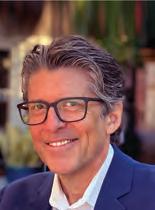
TOM NEILL
Tom Neill is president and creative director of Private Club Historical (www.ClubHistorical.com). His company designs historical exhibits and displays. He may be reached at (949) 497-6543 or via email: tom@privateclubhistorical.com.
Do you have your history on display? Whether your club is 10 years old or 125 years old, having a historical display within your club can have a significant impact on many levels, especially member pride.
Member pride is an incredible, intangible asset that instills a sense of community and belonging while creating a legacy at your club.
Club history tells the story of your club’s origins, mission, defining events and membership. Your members will be filled with pride when they are connected to their club’s building, mission and founders. This results in continued membership usage, retention and recruitment.

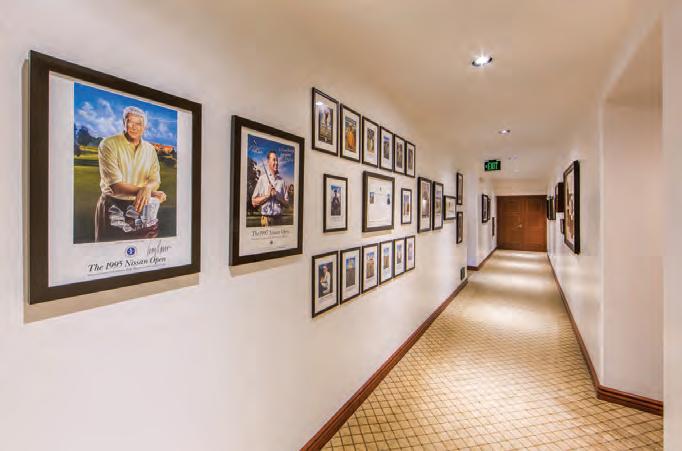
Visiting guests and family can also absorb the significance of your club, especially guests who may not be familiar with the club. And the good news is your Wall of Wonder doesn’t necessarily take much space.
Make sure your Wall of Wonder display area is created with a thoughtful, specific approach for your club and your members – this can be accomplished in one impactful custom installation.
Your display can consist of framed artwork and photos, trophies, awards, panels and even dimensional displays which could contain relics and significant objects from the past and present.
So how do you start this Wall of Wonder?
First, come up with a plan to tell the story, and this plan would include collecting and cataloging all history as far back as it can be obtained. For stories, start with the early beginnings and significant events that led to the relevant elements of your club today.
Focus on people and events. Many clubs like to throw in celebrity status or sports figures who have been or are members. Also consider integrating into the story the local community, their contributions and the relationship with the club over the years.
Consider history as an evolving event, so in other words, history starts today. Many clubs like to leave these story spaces open to accommodate history in the making. So when designing, always consider future events in the space and that can be done not by using more space, but by repurposing the artwork that is currently in place.
This exercise in creating a club’s history and putting it on display can open up a lot of discovery, and many clubs will be surprised to learn about many things of which they were not aware. So you can start today and make that space work for you. BR







BRUCE BARILLA
Bruce Barilla is president of Locker Room Consulting. To view the free “For a Better Locker Room” online guide and PowerPoint show, “Pro Tour Locker Room” checklist and PowerPoint show, “Does Your Locker Room Make the Grade?” test and the “Tip of the Week” collection, go to: www.lrcgolf.com
Some years ago, when I was employed as a golf locker room attendant, I began to do my own secret survey of my coworkers from different departments. The question was simple enough: “Does management ever ask for your input?” Unfortunately, the answer was mostly the same: “No.”
The people I asked were dedicated, caring professionals in their line of work. They did a good job because they wanted to, not because they were supposed to. I found it disheartening and at the same time the reason for low employee morale, failing to be the best in the business (or at least second to none) and a decline in reputation.
What is so hard about asking for input from staff?
It is not a sign of weakness but of self-confidence and strong character when you as a board member or general manager admit you do not always have the answers or know exactly what to do when making decisions. No one does. We can learn and should learn from each other.
Seems simple enough, if, for example, the locker room is to be remodeled, you ask staff with years of service what they need to make their department the best it can be for members and guests and more satisfying and efficient for them. It makes no sense to depend solely upon architects and interior designers who have no locker room attendant training or experience in this profession.
Now that you’ve asked, implement their ideas
Implementing the ideas of staff is as important as asking for ideas. Otherwise, they think they have been ignored and ultimately disrespected. However, I admit that at times certain suggestions might not be possible, feasible or affordable.
Not every shoeshine room has enough space for a walk-in shoe drying closet like the men’s golf locker room at The Greenbrier, but the QuikDry4P shoe drying cabinet by Cres Cor Sport and sold by Duffy’s and Fore Supply is an option. Although a better shower experience is desired, not every club has the required water pressure and volume. Nor can every member have their own private Locker SuiteTM, with
a private shower, whirlpool tub, bathroom and work desk, if there is a lack of space and budget.
Personal experiences of mine and others
Matt Morgan, former general manager at Butler National Golf Club, used to do a daily walk-through of the locker room and ask me, “Do you need anything?” He meant it. This is in contrast to a friend of mine, having years of practical experience and service, becoming the locker room manager but not being allowed to attend management meetings and having a “supervisor” who never worked as a golf locker room attendant making final decisions on types and display of amenities, purchasing and scheduling.
Understanding the locker room manager and staff
If you as a board member or general manager have employees who truly care, work hard, have the expertise, are knowledgeable and provide an outstanding “product” that other clubs wish they had, consider yourself blessed and do all you can to keep these individuals by showing your appreciation. It is more than salary, benefits and perks. The appreciation comes in the form of trust, respect and confidence. It means providing employees the tools they need and delegating them the authority to make decisions without having to constantly get approval. Otherwise, are they really managers?
I have met many locker room managers and staff who want to be the best but are frustrated by not having things as simple as an amenity shelf over the sinks and a soiledtowel cart on wheels inside a towel cabinet. Show an interest in their well-being and the well-being of the club will improve. If you sincerely ask for their input and try together to implement it, you are a wise man or woman. Five-star!

Discover the perfect benches that invite your guests to relax while waiting for their shot at the fairway.
From modern block benches to classic metal seating, we have the perfect products for outdoor spaces and patios. Our durable seating products are available in a variety of finishes, colors and styles and are built to last. Our extensive list of site furnishings and architectural pavers are available in numerous options to provide you with unlimited combinations for your country club or golf course.



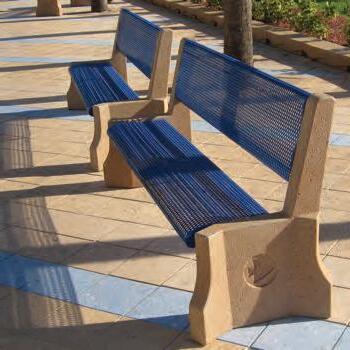







DAVID W. LACEY
David Lacey is a two-term member of the board of governors at the Philadelphia Cricket Club. You can reach David at his email address: dwlacey44@gmail.com
Benjamin Franklin made a pointed statement about professional development summarized below:
Tell me and I forget.
Teach me and I may remember.
Involve me and I learn to do.
Involvement and learning how to do something places a premium in Franklin’s thinking on action, not just words. The rhetoric or words about professional development and investment in it signal a positive intention. But it is the action(s) of club leaders that mean the most to employees.
Actions are visible and the measures by which employees judge the professional development culture at a club. In short, employees decide about the professional development culture by what they see occurring at a club. By professional development actions, an employee can learn about and decide how focused and purposeful professional development is at the club.
Professional development actions should have as their guiding purpose “each employee getting better at their craft.” Professional development tends to thrive at clubs where these actions have been or are being implemented. I have listed a “starter” group of actions that connect directly to professional development. These actions include:
1. Ask your employees what they need. It seems simple and perhaps even obvious, but employees are rarely asked. A recent Society for Human Resource Management study reported that only one-third of employers ask their employees what they need to increase their capabilities or add to their expertise. Asking this question has at least two immediate benefits for the club’s leadership. First, your question is addressed to the employees who will know best and will immediately engage in the professional development process with you. Second, the club does not waste money on development programs that are not connected to employees’ working lives. You can use surveys or focus group discussions to learn what your employees need. Either method engages your employees, and their views will lead to professional development initiatives of greatest value to them and club leaders, too. In effect, you are asking the professional development question of your target audience – your employees.
2. Encourage creative thinking and problem-solving. I am recommending that employees be grouped into their work teams – food and beverage, racquet sports, golf, maintenance and facilities, etc. – and be given club-related problems to address. A department manager may facilitate the discussion, but so could the HR professional at the club. This approach results in all employees stopping and considering the facts: to think through the options for resolving or addressing the issue, and to act by choosing the best available option, considering all resources available – people, financial and technology. I recommend stopthink-act as the preferred methodology for a purposeful discussion that leads to
constructive outcomes. This action contributes to building powerful work teams in each functional area of importance at a club. That fact alone makes “encourage creative thinking and problem-solving” a desirable action to implement.
3. Teach service essentials as the core professional development experience. Every premier club talks about creating a “memorable member experience.” It is worth an investment to pull apart this idea and define the elements of a memorable member experience. For example, what must we do as a hospitality team to create that memorable member experience? I recommend that the hospitality team define seven to 10 visible actions that result in a memorable experience. Once the visible actions are defined, club managers and professional staff can use them to assess progress in creating memorable experiences. Also, those seven to 10 actions could result in a professional development program to reinforce where we excel and to develop skill-building programs where our delivery lags behind a standard of excellence or a best practice in hospitality.
4. Update your compensation and benefits programs. Competitive compensation and benefits programs support the retention of your most important talent. I recommend that you upgrade compensation every year by comparing your practices to peer clubs you admire and upgrade benefits every two to three years. Compensation and benefits programs offer a direct financial reward to employees you are eager to retain because employees are adding to their

In just two short years, the company has tripled in growth from 6 clubs to 20 located in nine states - Virginia, Florida, South Carolina, North Carolina, New York, New Jersey, Illinois, Missouri and Wisconsin.

BASKING RIDGE COUNTRY CLUB Basking Ridge, NJ WINGHAVEN COUNTRY CLUB O’Fallon, MO
STANTON RIDGE GOLF & COUNTRY CLUB Whitehouse Station, NJ 1757 GOLF CLUB Dulles, VA
KNOLLWOOD COUNTRY CLUB Westchester County, NY
SHACKAMAXON COUNTRY CLUB Scotch Plains, NJ
DOMINION CLUB Richmond, VA




BRUNSWICK PLANTATION GOLF CLUB Calabash, NC
HILTON HEAD ISLAND, SC Oyster Reef Golf Club Port Royal Golf & Racquet Club Shipyard Golf Club TPC TAMPA BAY Tampa Bay (Lutz), FL TPC PRESTANCIA Sarasota, FL
VENETIAN GOLF CLUB Nokomis, FL
CLUB AT PELICAN PRESERVE Fort Myers, FL CAPE FEAR NATIONAL Leland, NC


Excellence in governance is key to success for private clubs. BoardRoom magazine is featuring a series of articles written by Henry DeLozier, a partner with GGA Partners, an international consulting firm and trusted advisor to private clubs, golf clubs and residential communities around the world.
This issue features Chartering Board Committees. Many clubs lack the governing cornerstone of board committee charters, the glue that holds together sound private club governance. Effective committees are made of compendious charters. Chartering board committees requires clarity of thought and mission. Clarity arises from specificity within the committee charter. When chartering committees there are two touchstones to reference...Read more on page 42.
Henry also addresses Succession Planning… two words, when they are spoken in the boardroom, that often cause managers to wonder what happened. In fact, every board should commit to proactive succession planning … for the board. Who will be the next leaders of the club? What should they know before taking their seats at the board table? From what sources will this information be transmitted? The future of the club rests on the shoulders of its next generation of leaders. Succession planning is an intentional process for identifying and developing new leaders who can replace old leaders when they leave, retire or die. Read more on page 44.





That's not a slogan. It's a promise.
Country Club -
“Club Benchmarking offered us tools, professional analysis, proven process and education for our members that were essential to getting our plan across the finish line.”
Frank Ford - President
“Throughout the process, advice and counsel from Club Benchmarking gave our Board the confidence and buy-in they needed to bring the project to a vote that was overwhelmingly approved by the membership.”
Eric Allain - General Manager
“Club Benchmarking was there to guide our Board through every step of the process and the result was a master plan that received an 86-percent approval rating from the Club’s proprietary members.”
Brett Draper, CCM - General Manager
“In approximately one year, we went from a very disturbed membership to gaining a clear endorsement for the changes of the future. I can say unequivocally that this would not have happened without the involvement of Club Benchmarking.”
Tom O’Shane - Treasurer

HENRY DELOZIER
Henry DeLozier is a partner at GGA Partners. He can be reached via at henry.delozier@ggapartners.com
Many clubs lack the governing cornerstone of board committee charters, the glue that holds together sound private club governance.
Effective committees are made of compendious charters. Chartering board committees requires clarity of thought and mission. Clarity arises from specificity within the committee charter.
When chartering committees there are two touchstones to reference. First, the club bylaws dictate certain mandatory committees that support effective governance. Second, the club strategic plan establishes a clear direction for the club’s future; bear strategy in mind when chartering the committee that will fulfill the strategic aims of the club.
Committee charters should list who authored the charter. The charter should be approved by the board and signed and dated by the board chair. The keys to chartering committees properly follow:
Mission or purpose. Chartering committees begins with a clearly stated mission. This section should define what the committee should accomplish – its primary goals and objectives – and its responsibilities.
Type of committee. This section states what type of committee it is. Two types of committees are common to private clubs: standing or special committees. Standing committees meet regularly for a specified purpose.
There are two types of standing committees: board and operating committees. Examples of standing board committees are nominating, governance, audit, finance committees. Operating committees, such as house, golf, greens, tennis, and sports (of other types), are distinct from board committees because they report to the chief operating officer or general manager (the senior manager of the club), who is responsible for the operational factors involved with the work of an operating committee.
Special committees are formed to serve for a limited amount of time with a designated purpose or specific task in mind. An example of a special committee is one to review the board handbook or to execute the planning for a special event.
Membership. The size and composition of the committee should be described. Sometimes membership on the committee is specific, as when certain board or man-

agement representatives are required, and the committee membership describes member categories involved – if applicable – and whether the committee is open to rankand-file members of the club.
Committees usually consist of five to seven members who serve the board in an advisory capacity. If the committee members are authorized to “vote” on specific board recommendations, this empowerment should be stated.
Remember that club committees serve as a leadership pipeline for the club.
Chairperson. The authority of the chair and the method of his or her selection must be stated. The committee chair can be voted on by the full board, by the committee, or appointed by the board chair. This authority should be consistent with the club’s bylaws.
The term of the committee chair must be specified; one year is common. The committee should designate a co-chair or vice chair in case the committee chair can’t be present. This is especially important for standing committees that meet throughout the year.
Duties, responsibilities, and activities. The committee charter spells out what the committee needs to do. More importantly, it outlines the committee’s responsibilities. For example, the audit committee works with the club manager and controller to prepare for and respond to the annual audit.
Delegation of authority. Every charter should have a section that details the kinds of decisions the committee can make with and without formal approval from the board.
Standard committee procedures. Every committee will need to know how often it will be expected to meet. Likewise, the charter should state whether time-specific meetings are mandatory or can be canceled if necessary.
The committee charter should state the term of service for the committee. Most terms are for one year and allowance can be made to renew the assignment for a subsequent year. No committees should be permanent.
Committee charters should be specific regarding how or when the committee should make requests to other committees or the full board.
Committee charters establish the groundwork for good committee work. Charters do not take the place of responsible board service. They do, however, serve as the foundation and basic understanding for board committees to understand their duties. BR


Whether your membership is full or not, we understand the stress of being pulled in multiple directions. Having a resource on your team that will help relieve some of the burden is invaluable. With Creative Golf Marketing, you get consultants/advisors, a design team, a communications department, retention strategists, and more! We’re your full service marketing partner to help your club stay on top, or help you get there.



Henry DeLozier is a partner at GGA Partners. He can be reached via at henry.delozier@ggapartners.com
“Succession planning” … two words, when they are spoken in the boardroom, that often cause managers to wonder what happened.
In fact, every board should commit to proactive succession planning … for the board.
Who will be the next leaders of the club? What should they know before taking their seats at the board table? From what sources will this information be transmitted? The future of the club rests on the shoulders of its next generation of leaders.
Succession planning is an intentional process for identifying and developing new leaders who can replace old leaders when they leave, retire or die. Succession planning increases the availability of experienced and capable club leaders who are prepared to assume these roles as they become available.
How does your club fill its leadership pipeline? Here are five steps to begin succession planning:
1. Begin with the strategic plan. Clubs express their mission, vision, and core values within the strategic plan. Primary goals and objectives are important components in the strategic plan. Understanding the strategic plan is “magnetic north” in healthy clubs.
If your club does not have a strategic plan, go about establishing one. Until your long-range strategy, which is typically three to five years in a private club these days, is in place, validate the alignment of the current goals with the club’s mission, vision, and values. Aligning mission, vision, and values is critical.
2. Establish clear-cut selection criteria. Members interested in board service should be guided by the criteria established as baseline qualifications. Critical selection criteria should include (a) proven experience in non-profit governance, (b) successful service to the club in committees, and (c) demonstrated understanding of servant leadership principles.
3. Be proactive in recruiting leaders … servant leaders. Often club members wish to enjoy the club rather than assume a role of servant leadership. Club boards should be alert to identifying prospective leaders who demonstrate attributes aligned with the magnetic north for the club.
This is not a popularity contest. Establish and approve clear-cut board service criteria.
How does club leadership avoid the appearance of an old boys’ club where only insiders are welcome? Keep an open mind and take an inclusive approach. Different opinions are healthy in a boardroom – especially when expressed constructively. Often clubs follow a wrong turn because no one chose
to question the route. By planning ahead, club leaders can ensure a diverse and dynamic club board for the future.
4. Engage prospective leaders. Make the vision of the club known to them and get these prospects into the club’s leadership pipeline. Committee assignments are a great way to observe future leaders. If they demonstrate reliable and constructive participation at the committee level, they may become effective club leaders.
Private clubs benefit from having legal, financial, accounting, and insurance professionals on the board. These professional callings should be balanced with non-professional people who bring balance and diversity into the boardroom. Beware of a boardroom where everyone agrees on every topic.
5. Respect trumps resume. Many clubs identify former titans of industry or successful corporate executives and assume that they will be effective servant leaders. Some fulfill that charter and others fall woefully short by demonstrating inattention, disengagement, and/or bullying leadership styles.
Effective private club leaders blend the capability to get things done with a likeability that engages fellow members. Find potential leaders who treat others with respect and your club’s leadership will be respectable.
6. Emphasize board mentoring and mentorship. See that each new board member has a mentor to guide him or her in the ways of the board. Ensure that new board members know “the rules of the road” within your boardroom.
Likewise, watch for upcoming committee members who are showing themselves to be worthy successors to a board chair. Inform them of the practices and programs used at the club so that they function effectively in your club’s ecosystem.
The future of your club will be what you decide to make it. Careful planning of the club’s leadership pipeline brings forward needed talent, energy, and perspective that can make your club better. BR







A quick Google search of the phrase “labor shortage” yields 126,000,000 results in just over half a second; add the word golf to that search and we still have more than 8,500,000 matches.
To say that finding staff in our new reality is top of mind is a massive understatement. As I work with employers who are searching for effective solutions to the industry-wide problem, I often find myself on the receiving end of the same set of questions:
• What are my competitors offering to attract quality talent?
• What do I need to offer in terms of pay and benefits?
• How are other clubs finding staff?
While a competitive compensation analysis is valid and serves a purpose, I believe employers are making a mistake by only looking at this problem from their point of view. There is a good chance that the competitor down the street doesn’t understand the labor market either.
As industry consultants, the PGA Career Services and PGA ExecuSearch team has spent thousands of hours working with the talent pool as well as employers. The time that we have spent with the professionals you seek has offered an alternative point of view to the labor landscape.
Candidates are looking for far more than logos, salary, and location. They are seeking opportunities that lead to growth, balance, and fulfillment.
In the hospitality industry, we often talk about the importance of anticipating our members’ and guests’ needs. We accomplish that by viewing the operation from their point of view and identifying the value proposition in the relationship and the transaction.
Shouldn’t the same be true for our teams? I suggest you begin to look at the relationship from the point of view of the job seeker and consider the questions they are asking themselves about you and the roles you need to fill.
• Who benefits when I accept this position?
1. Does this opportunity serve those who depend on me?
2. Is this position mutually beneficial for the employer and me, or is it one-sided?
3. Can my community benefit from this position?
KEITH SORIANO
Keith Soriano, PGA, MBA is a PGA of America career consultant serving the Colorado and Utah sections of the PGA of America. He can be reached at (720) 841-1006 or ksoriano@pgahq.com
• What are the things I must receive from this position to fulfill my needs?
1. Is the pay sufficient to maintain or improve my life?
2. Does it allow for the flexibility I need to have balance in my life?
3. Are they invested in my personal and professional growth?
• Where else could I find the same things I find here?
1. Does the value proposition here outweigh the alternatives?
2. Does this employer understand the competition?
3. Is this employer a better fit for my values than another one?
• When does this position fit in my career arc?
1. Is this the right position at the right time in my career?
2. Are there advancement opportunities?
3. Does this get me closer to my goals?
• Why would I want to work for this employer?
1. What does the market say about this employer?
2. What do former employees say about them?
3. Is the workplace environment healthy?
Once you understand how the talent pool is analyzing the many opportunities before them, you can begin to formulate a plan to answer their questions. Developing that plan requires an employer to have a level of self-awareness that hasn’t always been necessary.
The hallmark of true self-awareness for a business is understanding how those outside of the organization perceive it and how people inside the organization honestly describe it.
People and businesses with a keen sense of self-awareness recognize their strengths and their challenges. It will be those strengths and challenges that answer the questions above or reveal opportunities for growth for your organization, and that growth potential is the competitive advantage you need in a difficult labor market.
The labor pool has spoken from the other side of the table. Will you listen? BR
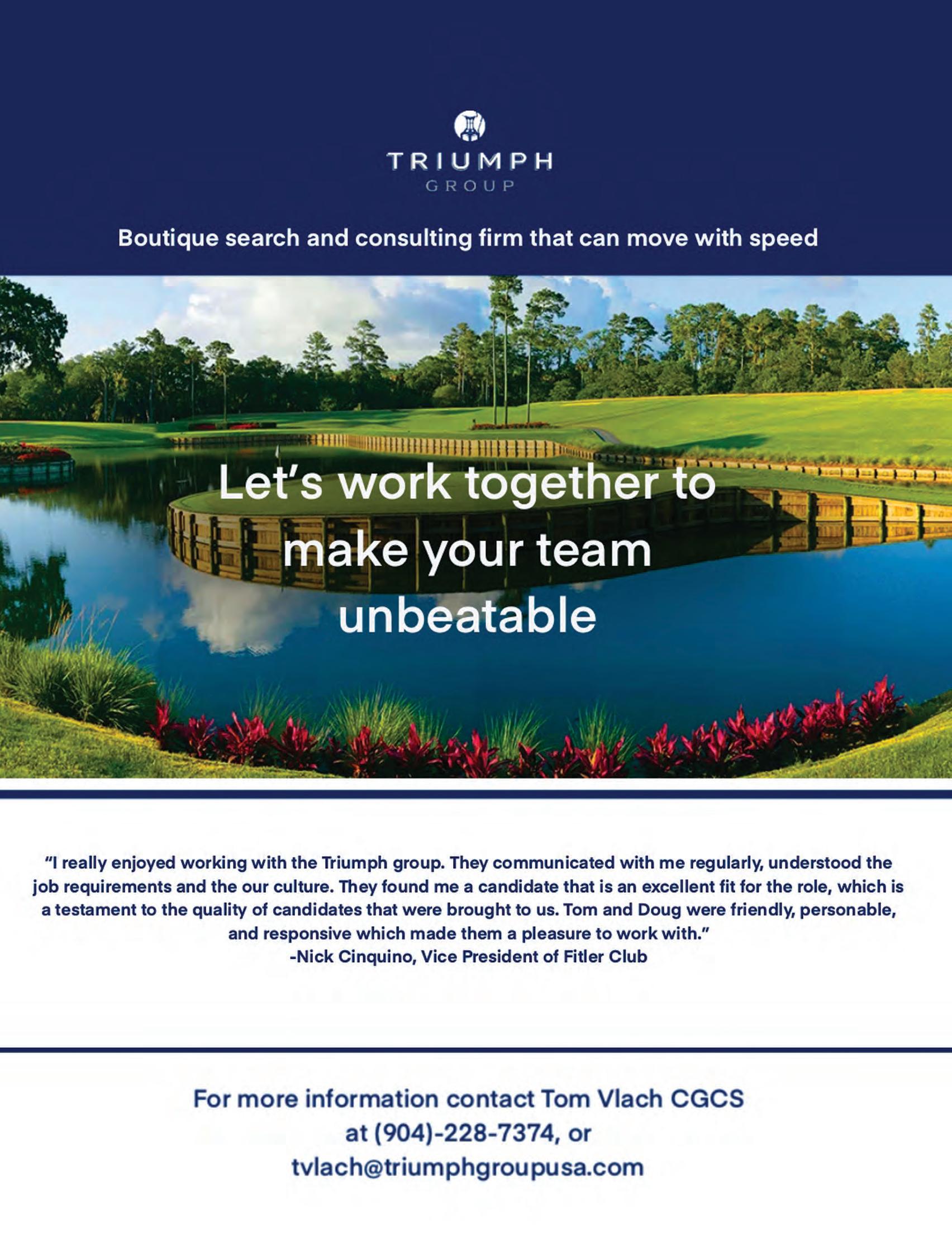

SUSAN
GREENE
Susan Greene is the general manager/chief operating officer of Waterlefe Golf and River Club, Master Property Owners’ Association, Bradenton, FL. She can be reached at gm@waterlefefl.com.
Many things have been written and research has been conducted on the generational division of our prospective members’ needs and what amenities our clubs need to be prepared to offer based on our targeted age demographic.
We have identified the following groups:
• New Silent Generation – 19 and under (49 percent Hispanic)
• Millennials – ages 20-39
• Generation X – ages 40-54
• Baby Boomers – ages 55-73
• Silent Generation – ages 74-94
• G.I. Generation – over 94
Now that we have identified the groups, our charge is to be sure, based on their needs, concerns, and passions, that our club is programming to meet those needs. Face it, most clubs have representation in their prospect pool from each group. Let’s break it down.
Millennials: We know they are socially conscious and have an entrepreneurial spirit. Two hundred and forty-seven percent are more likely to be influenced by blogs, and they love to participate (the reason for all those participation trophies). As the membership committee, work with the house and social committees to offer:
1. Neighborhood projects
2. Benefits to make life easier, like takeout, grab and go, or charging stations
3. Organic menu items
4. Blogs that they can contribute to
5. An Instagram club within the club
6. Adventure-related events.
Generation X: These prospects like schedules and working in teams. They receive all their information via the internet. They appreciate special benefits and want to be praised. As the membership committee, work with fitness, sports, and communications to offer:
1. Electronic membership information
2. Regular weekly sports schedules
3. People’s committees that work on specific board projects and work in teams
4. Personalized email campaigns
5. Member versus nonmember pricing
6. Recognition programs.
Baby Boomers: These prospects value working hard, climbing the corporate ladder to success and working as long as they can. Baby Boomers interact more face to face and still value that mode of communication. As the membership committee, work with your membership director, member relations director, and house committees to offer:
• TED Talks
• Great decision groups
• Wine clubs
• Points programs
• Technology classes
• Physical therapy
• Credit card usage (points programs)
• Tours that emphasize the quality of amenities
• Mailed invitations to join.
Silent Generation: These prospects exhibit strong loyalty to their personal beliefs and possess a strong work ethic. Seniors, born between 1925 and 1945, are often forgotten, but owing to their significance and profound contributions, the silent generation is not so silent. As the membership committee, work with your member relations and events coordinators to offer:
• Book clubs
• Big-band entertainment
• Mentoring programs
• Committee work
• Member bios section in your newsletter
• Charity programs.
A “new silent generation” is emerging for those born during the early 2000s, since like their great-grandparents in the Silent Generation, their childhood is also deemed to be marked by war and economic recession.
G.I. Generation: Although these prospects may be more prevalent in Florida, they seem to have similar values as the Millennials (what’s old is new again, so to speak). As the membership committee, work with your board to offer:
1. Community involvement
2. Thorough explanation of debt
3. Teams
4. Civic endeavors (health, education, equality).
If you work to ensure your prospects are aware of what your club offers, their ultimate pride in belonging will increase and that just makes cents. BR





RYAN MAIONE
Ryan Maione is president, MembersFirst. He can be reached via email: rmaione@membersfirst.com
Over the past few years, the way we live has been altered, giving people time to consider what aspects of their lives are most important to them.
As younger generations enter the next stages of their lives, clubs have a unique ability to provide the environment they desire.
Due to the overlapping values of family time, social activity, and work-life balance between private clubs and the younger generation, clubs have the opportunity to bring the benefits of membership to these prospective younger members.
For generations, clubs have been a home-away-fromhome for their members. With so much of the workforce shifting to at least partially working remotely, more time is saved, and spent, at home.
The reduction in commuting time and greater flexibility in their workday means the younger generations have more time to devote to personal activities and an ever-increasing interest to get out of their homes.
In addition, the cost savings associated with eliminating commutes and relocating to suburban towns means that they will be able to focus on experiences and convenience because they value these elements in their lives.
So, how does this new remote work and lifestyle focus fit into your club? You can provide an alternative space for these elements in one location and offer convenience and enough variety to keep members coming back.
Alternative “work from club” spaces: Understand that younger generations value flexibility and community. They will appreciate workspaces onsite enabling them to jump back and forth between calls and family activities on the same property.
Provide online tools that allow them to plan their entire day at the club: book a workspace, reserve a table for lunch, enroll their kids in swim class, and make a tee time in the afternoon.
Social atmosphere: Capitalize on your club’s open and inviting atmosphere to encourage social interaction for all your members.
Enhance your existing outdoor spaces with TVs, fire pits, lounge chairs, grassy sitting areas, social games (cornhole,
horseshoes, bocce), and keep them all well-lit into the evening. Create the space at your club where all generations come together to enjoy the outdoors as a community.
Forward-thinking digital approach: Reach prospective, young members on social media. Share the current membership’s experiences in photos and short videos. Showcase quiet workspaces as well as casual open environments where members can set up a laptop while eating lunch.
Tour the outdoor social space virtually. Speak to the family events and activities of sports, live music, and camaraderie. Highlight the tournaments and friendly competition that this generation appreciates and is missing.
And make it known that technology is welcome by encouraging members to share content while at the club. Make it easy for your members to do this by drawing attention to symbolic, iconic, and picturesque landmarks around the club and providing them with a consistent hashtag to use on social media.
Knowing the younger demographic is planning their life online, create a focus on your new members’ onboarding experiences using your invested digital footprint. Leverage technology in your new member onboarding process to create consistency, acclimate new members quickly, and meet them where they are online.
This forward-thinking approach focuses on retaining these members while creating promoters of your clubs. If new members have a great onboarding introduction, they will want to share their experience, and prospective younger members will get a glimpse of the benefits of membership right from the source.
Positive change and growth: The flexibility of remote working is creating better work-life balance for younger generations and is a driving force for positive change and growth in the industry.
Younger generations will begin to look to where they want to spend their additional personal time and private clubs have the perfect foundation for this environment. Showcasing the integration of activities, business, and social life that the club provides will be pivotal in your ability to engage and attract younger members. BR


COMFORTABLE AS WELL AS BEAUTIFUL.
I am pleased to recommend Steve Berlin and Xhibtz Contract Furnishing. We have worked with Steve for many years for our outdoor furnishing needs and we could not be more pleased with the results. The service is always exemplary and the product is high quality and comfortable as well as beautiful. Our membership is thrilled with the look as well! Steve Berlin always goes above and beyond to ensure that our needs are met - or exceeded.



CRAIG MARSHALL AND RICK LADENDORF
Craig Marshall and Rick Ladendorf (“The Monk & The Mastermind”) are co-founders of Mindful “U” who develop leaders and teams in the club industry through education, coaching and a mindful professional certification program. Rick can be reached via email: Rick@MindfulU.org or (949) 933-5470.
In our changing world, it seems that almost everything is in transition in the private club world.
For example, golf memberships are at an all-time high, but the “great resignation” is making it more and more challenging to recruit the right staff to serve new and current members.
Private clubs spend a lot of effort, time and money attracting new members, and every brand “touch” is methodically executed to attract the right member, regardless of the targeted demographic. From the website copy to the onsite tour, plus every touch in between, like-minded prospective members are introduced to the club culture as part of the courting process.
Unfortunately, prospective team members (staff) do not receive the same red-carpet treatment during the recruitment process, and yet they are expected to understand what a “member experience” is supposed to mean. This is important to note as the member experience is a direct reflection of the team member experience (their values, happiness and connection to the club). Creating healthy, inspired and committed managers and staff is a basic requirement to connect with members in healthy and meaningful ways.
Plain and simple, people like being around people like themselves. It’s a tribal thing. People feel comfortable around those who reflect their beliefs and values. Fundamentally, members are looking for the same thing: social interaction, a safe environment and fun activities.
At the same time, every club is different. What defines your club? What is your target demographic? If you’re not sure, it may be time to do a little soul searching and research to remain successful and sustainable.
The largest demographic in America has shifted from the Baby Boomers (the club industry’s bread and butter) to Millennials. With the median age for new members becoming younger every year, it may be time to ask: How many of your new members are within 10 years of the average age of your current members? Do they have the disposable income of the retired Baby Boomer? Attracting the younger demographic may depend in part on the workplace demographic. How old are your team members? Do they understand the wants and needs of the younger demographics? Are the amenities aligned with the Millennials and their kids?
Ed Ronan, GM of Bretton Woods Recreation Center in Maryland, said, “When I worked in Denver, the typical old-school member lived downtown and wanted to eat dinner early and go home. Today, the younger generation works late, eats late and wants to play late – and sleep late.”
Ronan continued, “Members are always looking for more and different things. Right now, my club is now offering whiskey tasting, archery, camping, mountain biking, giant slingshots, photography and videography classes, dive-in movies (in the pool) and drive-in movies (on a hillside). It’s pretty wild.”
How in sync are you with a wide-open generation which is tuned to exploration, diversity and challenging old norms? According to stats, tomorrow’s members will want to be involved in the club’s governance (creating a mixed response from older members). They will request a new dress code, different types of music and maybe healthier offerings on the menu.
Some will push the boundaries of what your seniors consider “acceptable.” How will you handle all this? If your club is targeting younger members, it can be valuable to invite some of your younger managers to sit in on membership committee meetings.
ATTRACTING THE NEXT GENERATION OF MEMBERS
No matter your current role, experience, or age, you’re going to be required to learn, unlearn and relearn in order to adapt to the younger generation’s needs. New-school thinking from 21st-century leaders will require three things.
1. Improved collaboration among the different generations of the management team. Input and feedback from team members will help create relevant programs, activities and events that appeal to the next generation of members.
2. Greater investment in employee development, training and education, with a focus on mindfulness, inclusion and emotional intelligence.
3. Open and transparent communication at all levels of the organization. The cardinal rule of communication: It’s not about the message sent, but the message received. Can the younger generation “hear” what you’re trying to say? BR


98% Open Rate on Messages
Keep Members Updated in Minutes
Increase Revenue, Member Retention, and Event Attendance
“I am thrilled with MemberText’s messaging service and our members love it!”
- Lisa M. Martin, GM, Yakima Country Club

Trusted By








JULIA KELLY
Julia Kelly is vice president of sales and marketing with Troon and can be reached at jkelly@troon.com.
“Your neighbor’s vision is as true for him as your own vision is true for you.” Miguel de Unamuno
If you’re a private club seeking brand awareness and qualified leads, you’re likely using proven tactics such as modern website technology, search engine optimization (SEO), search engine marketing (SEM), and a combination of organic and paid social media advertising. This toolbox wouldn’t be complete without a compelling member referral campaign to help ensure that your membership offer is consistently being shared by those who are arguably your best salespeople – the members themselves. By definition, a “community” is a group of people who live in a particular place or region and are linked by common interests. Whether or not your club and community are gated, employing the tactics above means you already know that your club’s target audience extends beyond its property lines, but your chances for success will increase exponentially if your radar includes realtors and new homeowners.
Realtors. Realtor relations supports resale activities as much as it does new home builder marketing. Many private clubs budget a specific number of membership transfers per year, which are linked to real estate closings – something they do not control. Realtor marketing can be especially valuable in this instance, especially within non-bundled and nongated club communities, and there are several approaches available:
• Identify a powerful group of top-performing agents, but remember to keep your list manageable. When considering who to target, think more about length and overall productivity versus who had the highest gross sales revenues the previous year.
• Regularly provide targeted real estate agencies with up-to-date print and digital collateral materials to include in their sales kits – custom branded to the club and featuring a strong call to action and an easy way to reach the membership director. You may even want to drop off packets when properties close to the club are being held for an open house. Consider adding a QR code that, when scanned, takes a prospect to a unique and trackable landing page within the club’s website that’s been designed and built for lead capture.
• Offer to host a regional MLS event or even a monthly caravan meeting, when agents within a particular office gather for a morning of touring recent new listings.
• For an even more thorough level of resourcing, consider adding a realtor page on the club’s website that features everything they need to market your club in their greater efforts. This can include collateral materials and even watermarked images and branded video content for embedding into email blasts. Taking it a step further, you might password protect the page so that an agent must register his/her contact informa-
tion before receiving access, thus helping to build a realtor subscription database to use for ongoing marketing activities.
• Offer to support a realtor’s sales activities by providing the agent and his/her client with lunch at the club – only with appropriate notice and a written request made to the membership director, and only in exchange for the opportunity to provide a tour and marketing collateral.
• Some of the most professional and highest-producing agents regularly send print and digital newsletters and market updates to their own prospect list and therefore might present an opportunity to collaborate on design, content, and distribution.
• The club may also want to establish a preferred realtor network. Prospective members new to the area will invariably ask a membership director for a realtor referral, especially once they’re sure about a decision to join. But because many real estate agents are also members in order to maximize the networking opportunities available at a private club, it can be tricky to select those who will want to compete to be a part of the preferred realtor program. In these cases, a random URL rotator can be implemented within the web page where you promote this resource, which ensures both prospects and participating realtors that no one agent will receive special treatment.
New homeowners. If someone new to your neighborhood doesn’t know about your club’s membership offer already, the best way to ensure they do is to dedicate some marketing activity to new homeowners.
• Mailing list subscriptions are affordable, targeted, and easily available from a variety of sources. For about $50 per month, you could receive a list of new homeowners filtered by your specified zip codes, home prices, buyer age, and more.

By Heather Arias de Cordoba
Now in its 14th year, BoardRoom magazine annually recognizes the world’s top private club presidents, captains and chairs as Private Club Presidents of the Year, for their outstanding work, their understanding of the industry, and role and responsibilities of the club’s board of directors. In this continuing series, BoardRoom introduces three of the top 21 presidents for 2021. The Distinguished Club President was featured in the January/February issue. Private club board presidents play a huge role in professional operations of their clubs as a volunteer working diligently with their board of directors and general managers, striving for well informed, but not emotional decisions. This recognition by BoardRoom magazine has attracted board president nominations from clubs and other nominators around the world.
These outstanding presidents exemplify the focus on the leadership responsibilities, the accountability and the management of the board providing a healthy respect for the club’s macro management. They are cognizant of the importance of working, effectively and efficiently, with their volunteer boards and the dedication required from everyone with whom they work. Key elements of a “good” board include commitment, competence, diversity, collective decision making, openness, transparency, effective communication with the management and the membership, fiscal responsibility, development and establishment of the clubs’ mission, vision and policy direction, especially through establishment of a strategic plan. A successful board president draws upon the expertise of other board members, the club’s institutional memory and stewardship of the club’s resources. As well the board president provides new board members and future board presidents with information they need to perform effectively as board members.
Congratulations to these outstanding private club board presidents. See pages 58 & 59.












“While enduring the global pandemic and prospering because of staycationing, Fort Collins Country Club President Rick Callan and his board also embarked on some new ventures.
Callan led the search for a new general manager, established a full membership - and waitlist, and initiated a maintenance and capital expense planning process that will serve the club well in the future.
In May 2021, with search assistance from Kopplin Kuebler & Wallace, Callan and the staff welcomed Jenny Gwinner as the new general manager of FCCC. After the board’s operational involvement for over
a year, they could confidently step back to setting policy, focusing on strategic planning and capital investment and providing oversight and guidance to the club’s operations.
“Rick’s leadership extended across all aspects of the club,” praised Gwinner. “His support and attendance were felt whole-heartedly among the membership and staff. In addition, he handled any issue that arose with careful thought, professionalism and poise while always staying true to our mission and vision statements, core values and brand promise.”
Not one to take credit, Callan offered, “Past president Jason Barrett laid the foundation at FCCC by championing our club’s vision, mission, brand promise and core values. My goal was to build upon this foundation and focus on the mantra and member experience.”
The park-like golf course has never played better, the sports and wellness facility with indoor tennis courts provides year-round play, and the F&B team serves a celebrated culinary product for all members to enjoy. Besides offering a fully amenitized club that serves the entire family, FCCC has outstanding operational leadership with a staff that strives to deliver an elevated member experience that’s second to none.
A third-generation Denverite, who grew up playing golf in the ‘70s at Paradise Valley Country Club, Callan moved to Fort Collins to attend Colorado State University and fell in love with the Choice City. Callan has worked in business administration, finance, management, and accounting before making real estate and development his profession BR

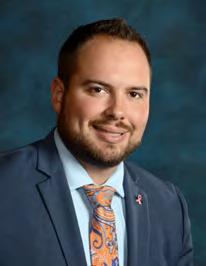
As president of Whippoorwill Club, Jonathan Corpina led the board, COVID-19 committee and club through the pandemic with an updated governance model that placed the board’s focus on long-range, strategic initiatives and away from operation—allowing the GM/COO to manage the club successfully.
“Since my arrival, at the end of January 2021, the club has made major strides in our governance model,” explained Jeremy Melbye, the club’s GM/ COO. “President Corpina has been the driving force behind empowering me as the GM/COO to own the operation. The board and committees have now transitioned into a supporting role versus being hands-on in the operation.”

As well, it was with the support of Corpina, the board and the COVID committee that Melbye and his staff were able to keep the members and staff happy and safe while maintaining a high level of service over the past year.
“This goal was accomplished through continual communication and a readiness to adapt to circumstances,” Melbye added. “We are fortunate to have a multipronged communication approach, which enabled us to communicate quickly and efficiently in the member’s preferred method.”
With effective communication in place, the club has thrived. And both satisfaction and operations increased because the members were engaged and felt comfortable with the measures put in place.
As a club that has historically benchmarked its success by the golf course accolades, Corpina challenged the mindset and encouraged programming across the operation to match the level of excellence of the historic course.
“Jonathan Corpina is a collaborative leader, who brings people together,” explained Melbye. “His passion and energy are infectious! You can’t help but be inspired by this dedication and work ethic. In year one of our partnership, we have seen the biggest growth in our dining operation. From food offerings to service, our dining experience has dramatically elevated. I’m motivated every day to come to the club and match his tenacity and do everything I can to improve myself and our member experience.”
Corpina manages trading and sales on the Meridian NYSE trading desk. An NYSE member since 2001, he is the executive floor governor, president of the Organization of Independent Floor Brokers, and vice president of the Floor Members Emergency Fund. He’s also a member of the Stock Allocation Committee and the Executive Governor Committee. BR

KEVIN P. A. BRODERICK, PRESIDENT


Mountain Lake Corporation’s governance vision is strategic by nature. The board sets policy and the management team is responsible for the corporation’s daily operations, the implementation of the board’s vision, and ultimately accountable for implementing and adhering to the policies that the board sets.
“President Kevin Broderick was elected to office in March of 2021 and was immediately challenged by, and took ownership of the implementation of, and ultimate success of the long-range plan,” explained Eric Dietz, the club’s COO.
“I have worked proudly side-by-side with Kevin, along with the board, committees, membership and the management team to develop and deploy the strategies and tactics needed to move the plan from just a plan to a document responsible for delivering results. At the same time, our golf course master planning process featuring Gil Hanse moved into high gear and with the retention of Chapman Coyle Chapman, whom we are working closely with on a master facility plan.”
Dietz believes Broderick’s leadership style is defined by preparedness, thoughtfulness and honesty. And this leadership style makes Broderick highly effective; he expects and delivers results.
“He is a direct person and honesty comes naturally to Kevin. I’ve always been impressed by his wide-ranging knowledge and ability to analyze problems and offer alternatives and solutions. COVID-19 changed how we view our operations, but Kevin has remained steadfast in the commitment to deliver quality and excellence in our member and guest experience and value. Even when COVID was at its worst, we provided innovative offerings like drive-thru cocktail parties, a robust pantry and grocery ordering system, and designed creative ways to use outdoor and indoor spaces,” Dietz continued.
“He has done a marvelous job of guiding our ship through a very difficult time, exacerbated by COVID-19, a change of presidents and the general conditions within the United States.
Kevin P. A. Broderick retired as a partner in a private equity firm, Meriwether Capital LLC, after several years as a senior financial executive with DaimlerChrysler AG. Before that he was a senior banking officer with one of the largest banks in the Midwest.
He has served as a director of Rockefeller Financial Services and Rockefeller & Company and was also the long-time chair of Rockefeller Philanthropy Advisors. In addition, he was a board member of numerous companies in which Meriwether had an equity interest. Broderick was a member of the board of visitors of the Walsh School of Foreign Service at Georgetown University and the former president of the Detroit Historical Museums and Society. He continues as the public trustee for the City of Grosse Pointe Farms Pension Fund after many years as the Grosse Pointe Farms Foundation president.
Broderick is also a member of the Country Club of Detroit, the Grosse Pointe Club, the Detroit and Chicago Racquet Clubs, the Knickerbocker Club and The Brook in New York City and the Yondotega Club. He is married to Catharine O’Neill. They have four children and six grandchildren. BR

Bonnie J. Knutson, PhD, is a people watcher. A professor in The School of Hospitality Business, Broad College of Business, Michigan State University, Dr. Knutson is a member of the Country Club of Lansing and the Michigan Athletic Club. She can be reached via email: drbonnie@msu.edu
As an undergraduate, one of my favorite elective courses was about the geographical history of the Bible. It had nothing to do with religion, but how rivers, mountains, deserts, and arable land affected the thinking and actions of people throughout the ages.
I did not fully realize it then, but that class was the beginning of my interest in what came to be known as generational theory, popularized by William Strauss and Neil Howe in the early 1990s. These two historians determined that the members of a generation will always be connected because they shared life-defining experiences during their formative years, i.e., world events, natural disasters, economic conditions, politics, technology – and yes, even pandemics.
These common events are called markers because they create bonds that tie consumers of a generation together into cohorts with similar attitudes, values, and life skills that affect everything from how they spend their time and money to whether they decide to join and be active in a club.
I have often written about the impact of the different generations on our clubs, most recently probably about the notable Millennials and tech-savvy Generation Z that follows them.
But now, for the first time in history, we are approaching six generations of members (and soon-to-be employees), each with its own set of characteristics, values, buying patterns, and “hot buttons.” Our memberships already include the Traditionalists, who Tom Brokaw deemed the Greatest Generation; the large Baby Boomers group; Generation X, the smallest cohort; the infamous Millennials or Gen Y, which is the largest; and Generation Z, the first truly digital generation.
Well, move over, because here comes Generation Alpha. Yes, there is another generation that clubs can and must think more about now because it offers long-lasting challenges as well as opportunities to attract, engage, and retain members.
The Alpha moniker is credited to Mark McCrindle, a generational researcher in Australia. It is generally attributed to the demographic cohort that is the first to be born entirely in the 21st century.
Researchers and popular media alike frequently use the early 2010s as its beginning and estimate the end of this cohort to be somewhere in the mid-2020s. Using 2010 as the starting point, the leading edge of this group will turn 12 in 2022, just entering their teen years.
They are also most likely to be the children of Generation Y parents and the younger siblings of Generation Z. Data suggest that a member of Generation Alpha is born every nine seconds in the United States. According to Pew Research Worldwide, that equates to more than 2.5 million Alphas born every week; by 2025, their total number will reach nearly 2.5 billion – making that generation the biggest generation in the history of the world. It is also projected that by 2030, they will make up about 11 percent of the workforce.
So what impact will this generation have on the world? Your nation? Your community? Your club? And why should you care? After all, they are just kids. And, you have real adult members to worry about now.
Well, anyone who has children can attest to the fact that today’s youngsters have their own opinions and know what they like and what they want. I can still remember when our two daughters were in their pre-teen and early teen years. Like typical kids that age, they wanted to spend their free time with their friends, especially during summer vacations.
So, even though we belonged to a country club with a beautiful pool, tennis facility, and a great children’s program, we ended up buying memberships in our city’s community pool and programs. Why? Because that is where their friends belonged and spent their time.
Marketing professor Heather Dretsch found that children are capable of developing brand associations as young as three years old. Just look at Disney and McDonald’s.
“Whatever the parents expose the child to, the more often he or she will come to identify with that brand even from a very young age…Those connections happen very naturally and almost non-consciously.”


Forbes Travel Guide is the authority on hospitality excellence. We work with the best luxury hotel brands globally. Let us help you elevate your service to improve member satisfaction and retention.



Forbes Travel Guide worked with our leadership team to create custom standards and tailored training which have been implemented throughout the club. We value our partnership with Forbes Travel Guide.
Jeffrey P. McFadden Chief Executive Officer/General Manager The


As one marketer put it, “While [the Alphas] are the youngest generation, they have brand influence and purchasing power beyond their years…[these] consumers shape the social media landscape, are the cultural influencers…and by the end of the 2020s will be moving into adulthood, the workforce and household formation, ready or not.” And, oh yes, the end of the 2020s is fewer than eight years from the time you are reading this.
While we do not yet have a clear image of what Generation Alpha will be like as adults, a picture, albeit still blurry, is beginning to develop. Their forebearers were marked by such events as two world wars, the 1969 moon landing, the 1987 stock market crash, Sept. 11, and the global financial crisis of 2007-2009. Alphas’ markers are emerging as Brexit, the insurrection, the pandemic, and, of course, the infiltration of technology in all aspects of life – from artificial intelligence to the Internet of Things.
So what do we know – at least for now – about our younger “members”?
Here are what I call Generation Alpha’s Top Three.
First, they are sometimes called digital natives, being “logged in and linked up” virtually 24/7. This is not surprising if you remember that the iPad was launched in 2010, the same year that Instagram was created, and app was the word of the year. Alexa and Siri are their siblings. Their friends can live next door, across town, across the country or even the world and exist on a little laptop screen. Some have even suggested that Gen Alphas will have multiple online identities or avatars for different reasons, each with its purpose.
For example, one identity for friends, another for family, still a different one for work, and there may even be a separate one for your club. For them, it is all things visual. For them, it is all things immediate. For them, they don’t have to remember it, because they can Google it. So how can your club serve these digital natives?
Second, they will be highly educated and continual learners. According to 2021 Census Bureau figures, almost 94 million Americans over 25 have earned an associate, bachelor, graduate or professional degree. This represents about 42 percent of the population. Alphas are more likely to be surrounded by smart, often entrepreneurial, college-cultivated adults.
They see and understand the value of constantly learning because our bank of knowledge continues to expand exponentially, as predicted by futurist Buckminster Fuller. At the turn of the 20th century, he found that until 1900, human knowledge doubled about every century. By the time World War II ended, the time shrunk to every 75 years.
As this article is being written, the average time for knowledge to double is down to 13 months. And according
to IBM’s prediction, the Internet of Things will shrink it to every 12 hours.
Such exponential growth demands that we continually upgrade what we know (or think we know); it also requires education to be delivered in more ways and more places than the traditional classroom setting. This will enable Alphas to readily pop in and out of a learning setting.
So what opportunities does this open up for your club for employee training and member enrichments?
Third, diversity, equity and inclusion (DEI) is an integral part of Alpha’s core structure. The well-renowned Brookings Institute projects that the nation will become “minority white” in 2045.
During that year, whites will make up 49.7 percent of the population, Hispanics 24.6 percent, Blacks 13.1 percent, Asians 7.9 percent and multiracial populations 3.8 percent. But this new generation sees DEI far beyond race and ethnicity. It extends to incorporate the physically or emotionally challenged, to body image, equitable opportunity, sustainability, well-being, and family structure.
These cultural shifts are already beginning. All we must do is look at how movies, TV shows, commercials, print advertising and even product labels are beginning to embrace diversity, equity and inclusion. Putting your club’s DEI foot forward is not an option for Generation Alpha; it is a requirement. So how credibly will your membership, board, offerings, and messaging reflect DEI? After all, this generation is already woke.
Of course, the reality of who and what Generation Alpha will truly mean for our clubs is still in its infancy. It will develop and become clearer as the Alphas go through their teen years and move into adulthood. While that may seem way into the future, remember, in eight short years, they will comprise 11 percent of the workforce.
This brings to mind the old mantra that says the older you get the faster time seems to go. Or as my godfather used to tell me, getting older is like a roll of bathroom tissue, the more you use it, the faster it goes.
Your bottom line will thank you.
Described by Merriam-Webster as “chiefly US slang,” the dictionary defines woke as: “Aware of and actively attentive to important facts and issues (especially issues of racial and social justice).” Woke nowadays refers to being aware or well informed in a political or cultural sense, especially regarding issues surrounding marginalized communities – it describes someone who has “woken up” to issues of social injustice. BR


It’s vital to identify and select the right firm for your club’s executive search and consulting needs. We encourage you to take the time to discuss any prospective firm’s experience, process, capabilities, and follow-up. Below we highlight critical pre-screening questions you should be asking prior to engaging any firm. Requesting this information will increase the prospect of a successful partnership.
Be sure to ask…
Has the firm completed more than 1200+ projects over the last 20 years for 500+ club and private equity clients?
Let CTP tell you about the assignments that went well and what they’ve learned from the assignments that have not gone as well. Two decades of history.
Does the firm have a team of industry professionals with experience in the club and resort space that collaborates on all projects as a team to help improve productivity and efficiency, constantly thinking outside the box?
The CTP approach is for all the consultants to collaborate on every search. You get all of us all the time, not a single “consultant” who works independently.
Does the firm review the needs of the club from both the board and staff perspective to develop an individualized and fully custom position description and candidate specifications?
CTP organizes a full kickoff day on the club/resort’s property focused on learning the culture, business, team and needs to not simply write a compelling job description, but to be empowered to enlighten candidates on the opportunity.
Does the firm use number-one ranked recruiting ATS and CRM that a dedicated team (not a single person) updates daily with existing candidates, new candidates and details beyond the resume that must always be considered?
Each CTP team member spends hours each week providing color to every applicant that comes through the system.
Does the firm have a thorough client/club tested and proven successful candidate interview system including defined benchmarking of candidates to assist the search committee throughout the selection process?
Based upon 20+ years and over 1,200 assignments, CTP has a best practice, disciplined approach to candidate assessment.
Does your firm have an arsenal of solutions to deliver skill aptitudes testing including using the leading provider of behavior testing software and the global leader in personality assessments?
CTP deploys online personality, logic and skills testing along with several “old school” techniques that are tailored for the club’s specific needs to determine fit, beyond the resume/interview.
Does the firm use a social intelligence platform that pioneered the industry and is now the gold standard for online background screening?
CTP uses several third party, fee-based platforms to help discover a potential candidate’s social media, blogging and online presence.
How does the firm improve the probability of success when the placement is completed?
CTP creates customized onboarding plans and retreats that improve board and management alignment.
Are the search consultants experts in structuring compensation and bonus plans? Do they have industry experience with access to extensive industry trends, data points and local knowledge?
The CTP database contains thousands of compensation datapoints. CTP has constructed some of the most sophisticated comp plans in the industry. Several of the team members are certified in Performance Management form Cornell’s ILR school.
Will the firm create a customized “hands off” policy regarding not recruiting existing employees?
CTP does not recruit talent when the guarantee expires. CTP is clear who the client is.
Can the firm overlay a customized survey to gain perspective to capture quantitative and qualitative data to make truly informed decisions?
Club
Other Firms Thinking Partners
CTP uses the most sophisticated survey platform that will capture insights and analyze data to gain perspective in a systematic and comprehensive manner. 3 ? 3 ? 3 ? 3 ? 3 ? 3 ? 3 ? 3 ? 3 ? 3 ? 3 ?
Whether recruiting a senior level employee, evaluating an aspect of club operations, advising the board on governance, or strengthening your management team’s effectiveness, Denehy Club Thinking Partners is fully dedicated and equipped to be your thinking partner. To learn more, contact CTP today! Connecticut | Wyoming | Florida | California | 203.319.8228 | DenehyCTP.com









The emersa WaterBox spring water carton promotes your company’s commitment to the well-being of our environment while elevating your ESG score.
Helping to hydrate your body and protecting the environment can be accomplished one carton at a time, by simply replacing PET water bottles. WaterBox cartons are constructed using a proprietary process for a predominantly paper-based package. Appealing and affordable, when you choose WaterBox, you help slow the flow of plastic bottles into the environment and help reverse the destructive contamination from plastic waste, whether custom or one of the emersa branded cartons.
WaterBox LLC sources pure, premium U.S. spring water from fresh mountain springs, untouched by human hands. The water has a refreshing clean taste, containing natural trace minerals, unspoiled by additional processing techniques. Spring water flows through underground formations known as aquifers. Aquifers have layers of granite, gold, green jade and gem-infused porous rock that naturally filters water as it passes through small pores, Mother Nature’s filtration system.
The resealable carton is a walking billboard, reinforcing how your company is managing their ecological and social footprint. The emersa WaterBox cartons

can significantly contribute to your company’s sustainable initiatives. The emergence of ESG data, those metrics related to intangible assets within an enterprise, has become a form of social credit score. These sustainable metrics are directly linked to a number of business advantages, including enhanced public image, customer loyalty, and shareholder value. Purchasing decisions have become increasingly tied to how a company addresses environmental and social issues. One such issue that is noticeably prominent is the call for reducing the use of single serve plastic items. Utilizing the WaterBox paperboard cartons instead of plastic bottles is helping these companies convey their commitment to position people and the planet first.
Our design team works with you to create a unique carton with your messaging and imagery at no additional cost to you: from earth-conscious, 100 percent recyclable, paperboard, without BPAs or volatile organic compounds. All of the wood to make the paper carton is from certified sustainable and responsibly forested sources (Forest Stewardship Council) and the cartons are printed using natural inks that are kind to the environment. WaterBox is as healthy for the earth as it is for your body. The total chain of custody is transparent, from the forest through to the finished carton.
The world is facing a plastic pollution crisis with more than 99 percent of plastic created from chemicals sourced from fossil fuels. Single-use plastics, such as PET bottles, are one of the most common and conspicuous types of discarded plastic. Plastic is causing environmental problems at every step of its lifecycle. According to the Plastic Waste-Makers Index, a 30 percent increase in global throwaway plastic production is projected over the next five years resulting in an extra three trillion items of throwaway waste by 2025. Rest assured that with WaterBox, more than 97 percent of the waste produced as a result of our carton production process is recycled or used to recover energy.
As more regions mandate reduced plastic waste and hold corporations responsible for their pollution, WaterBox cartons are a solution, 100 percent recyclable, sustainable and environmentally friendly. WaterBox’s eco profile (based on a 50,000-unit truckload) includes:
• Replacing PET bottle
• Removing over 1,000 pounds of plastic from the manufacturing process
• Saving gallons of oil
• Saving over 100,000 liters of water from industrial contamination
• Saving kilowatt hours of energy
Your brand on a custom carton of U.S. sourced spring water is a statement as to your commitment to make change happen. “Water that reflects who you are.” BR

Warren Buffet once said that the U.S. would be a greater country if we employed women like we do men.
Of course, this was during the 1940s and ‘50s when women were expected to stay home. Times have changed, but unfortunately, we are still not treating women as equals to men in the hospitality and restaurant industry.
In the early 20th century, the Census Bureau categorized that only 20 percent of women were recognized as “gainful workers.” By December 2020, women held roughly 50 percent of American jobs according to the Bureau of Labor Statistic. But while more women are entering the workforce, the subject of equality still remains a serious issue.
According to Women in Hospitality, women made up 55.5 percent of the workforce in hospitality in 2019. But many of those positions make up the rank and file. The Castell Project reveals that women hold only 23 percent of board seats, and 22 percent of C-suite titles in the hospitality and restaurant industry and one out of 31 CEO level positions are held by women.
Like most things that require change in business, the bottom-line matters. Some hospitality leaders won’t make changes to improve equality for women. But if they were to see how it impacts their bottom line, they might move in the right direction.
A study by Repetti (2020) found that gender diversity in the hospitality industry is positively related to EBITDA (earnings before interest, taxes, depreciation, and amortization). A similar study uncovered the significance of the degree of gender diversity among TMT (top management team) members in hotel companies.
This study found that female representation in TMT below 10 percent is detrimental for company’s performance. A hotel can reap the most financial benefit from gender diversity
when female representation is at the 20 percent level. Improving equality improves performance. Companies with gender diversity on their executive teams were 21 percent more likely to have above-average profitability. These companies also had a 27 percent likelihood of outperforming fourth-quartile peers on longer-term value creation. Changes are occurring and many hospitality leaders would like to see more women in leadership roles. The question is how? How do we make the changes we know need to happen?
First, forced quotas have such a negative tone. Forcing a business to hire a particular gender can lead to rushed actions. Hospitality leaders want to hire the best candidate for the job. The issue isn’t if a woman is the best candidate, but if the hiring manager will hire the woman.
Change can happen if companies begin to take action now and it doesn’t require time-consuming or expensive implementations. In a study conducted by Deloitte, organizations can make a real difference on gender equality at work by:
• Creating/maintaining an inclusive culture -This is where non inclusive behaviors are not tolerated - where women are able to raise concerns without fear of career penalty.
• Enabling a work/life balance that goes beyond policies - Putting procedures in place that normalizes flexible work.
• Demonstrating visible leadership commitment - Includes setting targets for gender representation at the senior level.
• Offering learning development opportunities - Implementing interesting projects and assignments that work for women.
• Providing support and resources - Including short-term sabbaticals and mental health resources that enable life outside work.
This is just a sample of changes to consider. Get creative and come up with your own ideas for overcoming inequality for women. Sometimes it is the small steps that can make a world of difference for your workforce. It can also increase your company’s bottom line.
But tradition, biases, and embedded prejudices still prevent some hiring managers from hiring a woman over a man. Thankfully the tide is turning if ever so slowly. A quick glance at Fortune’s 75 Best Large Workplaces for Women reveals Hilton Worldwide, Inc. at the top of the list. Ranked number 10 is Hyatt Hotels. Many other hospitality companies are striving to make a positive impact on equality.
Employment laws are helpful with quotas, monitoring and legal enforcement, but that is only the beginning. Having the gumption to do the right thing and hire based on experience and credentials works just as well. As Buffet states, “We‘ve seen what can be accomplished when we use 50 percent of our human capacity. If you visualize what 100 percent can do, you’ll join me as an unbridled optimist about America’s future.” BR


Finding and hiring the right club professional can be costly. It’s a process that can become an emotional battlefield strewn with unseen issues that can blow up if the wrong person is hired. Let go, and let Gecko help you avoid the pitfalls that come with hiring someone that should’ve been skipped over. We’ve been there. We understand your industry. We know the skills and experience your applicants need to possess.
While some recruitment firms will provide you with a lot of resumes for exorbitant fees, Gecko will provide you with vetted candidates at an industry standard placement fee with no exclusive. To accomplish this, we have a nationwide network of professional recruiters who enjoy what they do and are dedicated to connecting quality people and companies.
Gecko. We’ll reduce the emotion and increase the confidence, knowing you have a trusted, experienced partner helping you through a complex procedure.
Connecting people and changing lives, one career at a time.®
BY DEAN KANDLE, PGA V.P. PROFESSIONAL DEVELOPMENT & EDUCATION
More money, fewer hours, signing bonuses, retention bonuses, referral incentives, we’ll pay for your Netflix and your Spotify subscriptions…many clubs are trying whatever it takes to get employees in the door and then keep them there.
Some facilities are having success, while others are struggling to reach sufficient staffing levels.
In an industry that’s been notoriously behind the curve when it comes to offering incentives, perks, and fair compensation, much of this is a necessary and welcomed change. As we know from the last two years, COVID and its resulting impact on the workforces needs, wants and desires don’t align well with the traditional job requirements in much of the hospitality world.
As the golf and club industry struggles through The Great Resignation like almost every other industry, it’s natural to look to these types of compensation and incentive structures as a default way to retain employees. Club leaders are asking, “If we pay more and offer a better schedule, it’s bound to help us retain our staff…right?”
It’s easy to answer that question with a resounding “Yes!” since so many current hospitality workers will tell you their biggest challenges are pay and schedule requirements. Common sense would indicate that if you improve the conditions that people said were the reasons they were leaving or were planning on leaving for, then the result would obviously be better retention and more people flowing into the industry.
While these improvements are bound to incentivize some workers to stay at their clubs, viewing compensation, benefits, and perks as a silver bullet that solves your retention issues, is going to miss the mark. What’s even more critical in a labor market such as this one, at a time when people have more options and more leverage than ever, is having an effective leader.
“People don’t leave jobs. They leave bosses.” This famous quote has never been more relevant. It highlights the important fact that no increase in pay, addition of perks, or system of incentives can overcome the negative impacts of poor leadership. As clubs look at their ability to retain their employees,
and most importantly their best employees, it’s critical to do an assessment of your department leadership and evaluate how they are impacting your employee retention.
Here are four ways the leaders at your club can boost engagement and increase your retention rates.
1. Follow “The Platinum Rule” - We’re all familiar with The Golden Rule that tells us to treat others as we would want to be treated. In many instances this is a great rule to live by as it reminds us to focus on kindness and respect. However, in leadership when we’re focused on how we want to be treated, it puts the focus on us as opposed to focusing on the needs of our people. The Platinum Rule says “treat people as they want to be treated.” This puts the focus on their needs, which will produce a more engaged and happier employee.
2. Build Deeper Relationships - In order to treat people how they want to be treated, we need to actually know them! This goes well beyond happy hours, lunches off property, or a few rounds of golf together. Sure, those are a great way to start, but if you’re not asking questions about their personal experiences, their motivations, and what gets them excited, it’s impossible to truly know how to lead someone effectively.
3. Build Trust - Relationships are built on trust. When we trust someone, we know they have our best interest in mind. We know they will look out for our well-being, even if it means making things more challenging for the leader. Great leaders constantly build trust through vulnerability, empathy, and integrity. Trust is the glue that will keep an employee coming back year after year.
4. Focus on Development - Clubs that regularly provide opportunities for their staff to grow and develop will always be more attractive places to work than those that do not. Your best team members will always be looking for ways to improve their skills as since those are exactly the types of people you want to retain, give them the means through funding, time off to attend programs, and in-house opportunities to show them how much you care about their development. Golf Business Network’s “GBN University” provides training and development for your golf staff that can’t be found anywhere else.
At Golf Business Network, we understand how valuable a great leader is to your club. Whether it’s your next director of golf or head professional, your next GM, or your superintendent, our team leans on decades of experience and expertise in both the club industry and executive search to find the leader your club needs to retain your best people. BR


Recent Clients Include
Greensboro Country Club
Country Club of Fairfield
Canterbury Golf Club
Belle Haven Country Club
Dedham Country & Polo Club
Barrington Hills Country Club



“It was certainly a great experience and an immense pleasure to work with the team at Golf Business Network to locate top candidates for our Director of Golf position. The GBN team are consummate professionals who were always accessible throughout the search process. My search for a new Director of Golf with GBN was an extremely positive experience, and I strongly recommend them to any club looking for professional assistance with locating talented candidates.”
David Sheppard, General Manager/COO — Atlanta Athletic Club

For more information, please contact Patrick Seither at 919-372-8220
Kopplin Kuebler & Wallace, for over 25 years, methodically continues to add the brightest and most accomplished industry executive talent to the team to better serve clients and industry leaders.
Please welcome Paul K. Levy, PGA as a search and consulting executive. Levy, most recently President and CEO of PKL Golf Management and Club Services in Pinetop, AZ, specializes in operational management and consulting services for the golf and club industry.
“Paul K. Levy represents our continued organic growth as a firm and is a golf-centric hospitality leader in complete alignment with our core values. Paul has had an extraordinary career as a golf professional, general manager, president of club operations and development and chief executive officer. Coupled with his decades-long support and leadership within the PGA of America, culminating in his presidency of the organization from 2016 to 2018 and being inducted to the PGA of America Hall of Fame in November 2021. Paul immediately adds an enormous amount of golf operational and strategic knowledge to an already strong KK&W team.
“His network within the PGA will allow us to continue to place their best and brightest into great golf professional and general manager

roles. We are excited for him to apply his passion for the industry and his hospitality development relationships will add to the success of our clients and the professionals we place,” expressed the KK&W partners.
“Being in the club and hospitality industry for all of my career, I was afforded the opportunity early on to meet Dick Kopplin. I clearly saw his passion for continuing education and advancing the careers of professionals in the industry. His love for helping others achieve success at the top private clubs in the country has been his life’s work. In my early days as a club executive and later as the president of the PGA of America my passion for the same two pillars of the club industry; career advancement for industry professionals and their education, drove many of my decisions. Now being part of the KK&W firm allows me to continue my passion for helping others achieve success. I am thrilled to be part of a team that shares the same values,” Levy responded.
Following a two-year term as the 40th PGA President, Levy was named PGA Honorary President at the 2018 PGA Annual Meeting. Previously, he also served two-year terms each as PGA Vice President and PGA Secretary.
For more than 18 years Levy was president of club operations and development for Sunrise Company, in which time he developed and managed several properties in California, Texas, Nevada and Colorado. Additionally, he was the CEO and GM at Toscana Country Club in Indian Wells, CA. Paul has been an active member of CMAA since 2005 and was also inducted to the Southern California PGA Hall of Fame. Levy earned PGA Membership in 1986, and has served in a leadership capacity at both the section and national levels since 1992. As PGA President, Levy was influential in the decision to relocate the PGA Headquarters to Frisco, Texas, and spearheaded growing the employment consultant arm of PGA of America‘s Career Services and executive search. The $550 million PGA Frisco development will bring 26 PGA of America championships, approximately 150 jobs and a new Northern Texas PGA Section Headquarters.
From 2004-2008, Levy was a member of the PGA board of control. He has served on several national committees dating back to the early 1990s. Levy was president of the Southern Texas PGA Section from 1998-2000 and earned the 2000 Southern Texas PGA Golf Professional of the Year Award. He has also been named as a three-time Section PGA Junior Golf Leader recipient (1992, ‘93, ‘98); the 1999 Section Bill Strausbaugh Award winner; and the 1997 Section Merchandiser of the Year for Public Facilities. Additionally, he chaired every major committee of the section at one time in his tenure as a section leader. From 2007-2012, Levy was elected as an independent director on the Southern California PGA board of directors.
A native of New Orleans, Levy is a 1983 graduate of Louisiana State University, where he was a three-year member of the Tigers golf team. Paul can be contacted at: paul@kkandw.com or (760) 417-9048. BR
To read more about Paul K. Levy joining Kopplin Kuebler & Wallace, please visit kkandw.com/welcoming-paul-k-levy-pga-to-the-team
“Tom, I can’t tell you how happy we are to wrap up this search for our new GM. We couldn’t have come close to this kind of success without the services of your team at KK&W. You and your staff were always prompt, predictable and highly organized in every aspect of this search. We appreciate the way you helped us filter through the prospects with clear information and standards. One of our Search Committee members commented that hiring KK&W is like hiring Goldman Sachs for financial work – an unassailable decision.”
Ms. Linda Lanier, Search Chairwoman Atlantic Beach Country Club, Atlantic Beach, FL















Serving The Industry Since 1996







JERRY MCCOY
Jerry N. McCoy, MCM, is the president of Clubwise, LLC, a consulting firm specializing in strategic planning, master planning, operational audits and governance issues. Clubwise is the 2017, 2018, 2019 Strategic Planning, Capital Funding and Facility Enhancement Company of the Year. Jerry received the Lifetime Achievement Award for BoardRoom Magazine in 2018. He can be reached at www.clubwiseconsulting.com or CMAAMCM@msn.com
We made an argument about a year ago that all members are created equally from an operating perspective.
We would now like to make the argument that new members are more important from a membership and strategic planning perspective. These reasons include:
• They represent your current market.
• They are more likely to sponsor another member. Older members’ social circles are probably already club members.
• If you meet their expectations, you are more likely to get more members like them.
• This group is more likely pro-progress for capital and service improvements.
• They are more likely to be willing to pay for capital. They want a great club for their future.
So, it is important to track those members who have joined in the past year, the past two years and the past three to five years. Ask these questions:
• Are the members over the past five years about the same or have they changed in the past year or two? If they have changed, why and how? It is critical to understand your market of potential members and how you can target more of that group.
• You must be meeting the needs of this group. If you are not, you will have a hard time getting more similar members.
The problem is that new members represent the potential market for membership. Members who have been in the club for a long time most likely have social circles made up mostly of club members. They most likely don’t have groups of friends who are not already members.
I know you hear the comments. “These new people do not understand our culture and we should not allow them to come and try to change everything. Listen to the older, tenured members.”
New members may know some club members but are more likely to have large circles of friends who are not club members. If you provide new members high value and sat-
isfaction by meeting their needs, they will likely invite their friends who are not club members to join.
Therefore, if you want to grow or maintain membership levels, who is more likely to help in that process? The new member.
There is an old saying in the club industry that states, “If you want to know what the club should look like in five years, ask everybody who has joined in the past two years.” Their expectations are normally different from those of older, more tenured members.
Older members are more set in their ways. They have settled into their comfort zone. New members do not know the club, so they come in with new expectations, some of which have not been priorities for the club in the past.
New members are more likely to have children and are looking for more family-friendly opportunities. They may be looking for child care associated with tennis and fitness. They are looking for more technology for reservations and the quality of the club website and more.
Since they are new, they are more forgiving. It is normal on surveys that they rate items higher than do the older members. But not for long. Within two years, they can become disgruntled about things they are expecting their club to provide.
It is normal that they are more pro-progress because they want a better club for themselves and their families. They are more open-minded. They are normally willing to pay more. Even when their disposable income is taking a hit from the cost of housing, cost of children and future costs, such as college.
You need to concentrate on tracking new members in their first year. Remember, this is your present market. If you want to continue drawing from that market, you need to meet the expectations of that market. Therefore, you need to focus on a new member maintenance program.



NANCY BERKLEY
Nancy Berkley is an expert on women’s golf and junior girls golf in the US. Nancy is a member of the World Golf Foundation Women’s Committee and the National Golf Foundation. She shares news about women’s golf — along with her opinions — on www.nancyberkleygolf.com. Nancy has served on the governing boards of two golf clubs and is on the green and marketing committees at Frenchman’s Creek Beach & Country Club. She is a contributing writer for LPGA publications.
The game of golf began hundreds of years ago when sticks were used to hit stones over sand dunes.
It was considered a form of exercise. Today’s golfers also hit balls over sand and many still consider the sport exercise.
In fact, playing golf is more popular than ever, especially with Millennials, who were born between 1981 and 1996. Millennials, however, want more than traditional golf. They want golf to be more social and more fun.
An excellent analysis about Millennials and golf was published in 2020 by GGA Partners, a division of KPMG Consulting, an international accounting firm. KPMG recognized that a large number of female executives were not only future golfers and future clients but also Millennials.
KPMG put the three interests together and introduced and sponsored the annual KPMG Women’s PGA Championship, a major tournament on the LPGA Tour. KPMG added a conference for corporate women on Saturday afternoon that
offered the social experience Millennials enjoy. The 2022 KPMG Women’s PGA Championship is June 23-26 at the Congressional Country Club in Bethesda, MD.
I am not a Millennial nor do I recall any golf professional ever announcing, “Go out on the course and have some fun.” Times change. A golf tournament is now an opportunity to offer fun and socialization to your clients and employees. Below is a list of my favorite formats that offer both.
Gimmee-circle tournament. My favorite version of the “gimmee” tournament is to ask your superintendent to use a diluted-turf-die formula in a drip bottle to draw a circle with a 12-inch radius around the flag stick. Any ball on the line or within that circle is a “gimmee” and considered in the cup.
The dye will wash away in one day. It’s fun when a golfer earns a gimmee with a great approach shot to the pin. Onethird of Millennials report that they do not play more golf because it takes too much time. The gimmee-circle fixes that problem.

Beach Day tournament (also called “The Fling”). Hitting out of a sand bunker is not fun and then there’s the raking. It takes so much time. Make the game more appealing to Millennials. Put a beach chair in one or more bunkers that guard a green. If a ball lands in the bunker, the golfer may toss the ball or “fling” it onto the green for the same one stroke with no penalty.
Millennials will not need hours of lessons to learn how to fling a golf ball. That is important because Millennials report that golf takes too long. The Fling really speeds up the game and is great for corporate golf events.
Fantasy golf – Play with an LPGA or PGA Tour partner. Select the top 10 (or more) players currently on the LPGA Tour or PGA Tour that will be in an upcoming televised tournament played and televised after your club’s tournament. Put the names of the professional players in a box.
Before your club tournament, invite each member to pick a pro partner from the box. (It is okay to have several of the same pros in the selection.) The winner of your tournament will be your member with the lowest combined net score of your member with the gross score of the professional partner.
Skins. I will never forget my first corporate golf experience playing golf with three colleagues – all men – from the law department of the corporation where I worked. As we approached the first tee, one of my colleagues asked, “Should we play skins?” I was lucky because although women club golfers seldom play the skins format, I had
watched skins tournaments on television and knew the format, including the carry-overs wins from previous holes.
Then one of the men asked, “Should we play presses?“ That was a new term for me. I quickly learned about it. I advise clubs to offer a skins tournament format and explain and allow carry-overs and presses. To make the tournament even more fun, offer every player 18 play dollar bills. Pay off teammates at the end of each hole. The winner is the player with the most money, which is great to use in the pro shop. Skins is both social and fun.
Sixsome-scramble. This is a format for three men and three women. It can be a short nine-hole tournament or an 18-hole event. The instructions: Men tee off from men’s tee on odd-numbered holes and women tee-off from women’s tees on even-numbered holes. The team selects the best ball for the next shot, continuing to alternate women and men threesomes until a ball drops in the cup for the team to score on that hole.
The best handicap formula for each sixsome is the total of 20 percent of the handicaps of the top two golfers, 10 percent of the handicaps of the middle two golfers and five percent of the handicaps of the lowest two golfers. The format moves quickly and it’s fun. Your Millennials will like it. This tournament works well in the afternoon when all members come in to check the scoreboard, have a cocktail, socialize and claim their prizes. BR


By Dave White, editor

I first met Bill Boothe about 20 years ago over a cup of coffee at a conference in San Diego. We were having a chat about BoardRoom magazine not long after he had written the article, “PilotTestingyourClub’sNew Software.”
“That article, published in 2001, happened to be my first in BoardRoom and today, 20 years later, I’m still writing stories, and the principles of pilot testing have endured and are used today as part of our software implementation methodology,” Boothe recalled recently.
Bill, at that time, offered an all-encompassing insight into the technical world of private clubs and why so many private clubs really lagged behind in not only their technical knowledge but also the fact that few really wanted to do anything about it.
Many clubs (board and general managers) seemed content with the technical abilities they did have, even if it did seem like they were still living in a technical world of DOS from years earlier.
Bill Boothe’s contributions over the years have added to the wealth of technical information for private clubs, not only as a writer for BoardRoom
but as a private consultant to hundreds of private clubs over the years.
Many years later Bill remains a mainstay in BoardRoom’s stable of writers, who have contributed so much to the information flow to BoardRoom’s subscribers and readers in the private club industry. So, what attracted Boothe to this IT area?
“I started my tech career with Tandy/Radio Shack in 1980 selling PCs to school districts and colleges in South Florida. Two years later an IBM dealer recruited me away from Tandy, encouraging me to shift my focus more to software training and support,” Boothe said.
“In 1985 RSM (formerly McGladrey) enticed me to join their consulting department (which consisted of me) and I fell into the club industry in 1989 when they merged in the Florida PKF club accounting practice. I moved up through the ranks to partner in 1992 and created the club technology consulting practice,” where he provided a variety of technical consulting services to private clubs and resorts for more than 20 years.
Bill stayed with RSM until 2010 when he left to form his own consulting firm, focusing exclusively on software-related consulting for private clubs and resorts. His firm specializes in planning, evaluation, selection and implementation of computer technology and he’s worked with more than 400 country, golf, yacht, city and athletic clubs, as well as many communities and destination resorts to plan their technological future and appropriate implementation.
He’s also been a frequent speaker at national, regional, and local conferences for HFTP, CMAA and NCA and has authored more than 90 articles for publications including BoardRoom magazine.
Boothe’s also a founding member of the NCA-HFTP Club technology Task Force and has been an active member of HFTP since 1992.
“That’s given me the opportunity to serve the club industry, and I’m now in my 33rd year,” he added.
“Bill Boothe has been a pillar of the club industry for as long as I have known him,” expressed Frank Wolfe, CEO of HFTP.
“In my early days at the association, there were not very many astute people who had a keen understanding of technology. Bill was always patient with me because of my ignorance and took the time to explain to cure my curiosity.
“I remember sharing a car with him one time from an HFTP event to the airport around Y2K and asking Bill why club technology was so far behind the curve. His explanation opened my eyes and from that point on, I always tried to find other similar industry solutions

that could solve some of our problems. In my opinion, Bill pushed club technology a long way from what it was to what and where it is today.
“Bill has presented several seminars for HFTP and participated in one of our very first club technology sessions back in the day. He can hold an audience and participate in spirited discussion because he is such a well-read guide,” Wolfe added.
“I was fortunate enough to work and collaborate with Bill for a number of years after I joined RSM in 2006,” said Phil Newman, partner, national industry leader – club services at RSM US, said recently.
“Collaborative and innovative are arguably the two words that come to mind when I think of how Bill operates. He was instrumental in keeping the various departments of our national club services team all pulling in the same direction. We are still reaping the benefits of a number of the projects Bill began while with RSM.
“He remains THE NAME when it comes to IT consulting in the club industry, even though he has so many more strings to his bow. Bill was a great mentor in many ways during my early years with RSM and I’m so glad he remains an ally and friend today,” Newman offered.
But what is it, when providing technical services and stories, that’s most important for clubs, boards and members to understand?
“Boards and club managers generally do a good job of creating a forward-looking operations strategy and running the day-to-day functions of the club. But they often leave the technology strategy and operations to IT folks, who tend to focus on the mechanics of technology rather than its purpose,” Boothe explained.
“Boards and managers need to understand the key technology concepts so they can make educated decisions about which technologies offer the best fit for their club. For example, club leaders don’t need to know how to configure a firewall, but they do need to know what one is, what it does, and how to determine if it’s working properly,” he added.
“I’ve known and worked with Bill for more than 30 years – virtually my entire club career – and at three different clubs. For most of that time, Bill was the best and virtually the only club-specific technology consultant, thinker and strategist serving our industry,” exclaimed Phil Kiester, general manager of the Country Club of Virginia in Richmond, Virginia.
“In the early 90s, the state of technology for clubs was 5-10 years behind the rest of the hospitality industry, and so it was both a challenge and a battle to apply technology to commonplace situations in clubs. Bill was the rare technical consultant who understood the technical aspects of his expertise, the mechanics of the industry he served and the clients he served.
“As clubs have evolved and technology evolved to serve them, Bill evolved too. This was, in part, owing to a foundation of relationships and connections that he developed and maintained over the years. He was attuned to the needs of his clients and he worked to remain current with the strengths and weaknesses of the technology they were considering,” Kiester added.
What does Boothe consider the most interesting story he’s written for BoardRoom over the years?
“In the March/April 2021 edition, I shared a real-life story of a club that had been attacked by ransomware,“ Bill explained.
“The details, while fascinating, were also a little creepy as I was quoting the communications between the threat actor and the club’s negotiators. The club ended up paying a ransom in the low six figures (fortunately covered by cyber insurance) and got their systems back online in a few weeks. I’m hoping that story brought home to clubs the real and present danger of ransomware,” Boothe cautioned.
And what’s the most important issue facing private clubs today?
“Without a doubt, cyber security! Or more accurately, an extreme lack of cyber security. It’s amazing to me how poorly protected clubs are when the consequences of a systems breach can be severe,” Boothe lamented.


While we can all learn from our peer clubs and leaders in our industry, this series of articles in The BoardRoom Magazine focuses on great ideas from our BoardRoom Distinguished Clubs (yacht, athletic, city and golf/country clubs) and their leadership teams.
These Distinguished Clubs not only excel at the level of their member service/experience, but they are also experts with their governance, the intangible qualities of a club, the quality of their products and the care and replacement of their facilities.
The BoardRoom Distinguished Clubs program is the only merit-based award for private clubs. This esteemed designation is determined by an impartial formulaic assessment and an onsite tour and interviews, rather than a mere peer-based vote of industry insiders. In this issue, we’re featuring The Fountaingrove Club of Santa Rosa, CA and the Tokyo American Club in Tokyo, Japan.
Ronald Banaszak, CCM, CCE, currently General Manager of thehouse, Newport Beach, CA, and BoardRoom Distinguished Club Executive Vice President of International Business Development, is writing these articles for BoardRoom magazine. Ron has more than 25 years of experience as a GM in private clubs, and 35 years’ experience in the hospitality industry. Ron may be contacted at (415) 420-5183 or ronbanaszak@gmail.com.






Bringing members together with spaces that foster community and camaraderie.









Assets include:
• Significant client list in over 30 states and overseas
• Extensive library of publications and articles
• Work product examples in all areas







Follow @chambers1899





20-Year-Old Company wishes to sell or be absorbed. This is an ideal opportunity for individual considering consulting, small companies who wish to expand their portfolios or larger groups who want to the add to their services.
• Optimized website with several Key words on top of Google searches
• Several Excellence in Achievement Awards from BoardRoom
• Project Templates in the areas of operations, membership, governance, finance and master planning
• Visit www.clubwiseconsulting to view the website, test to optimization. We are on Pages 1 or 2 on almost all key phrases.
• Owner will stay on in transition so new owner will maximize all the assets immediately. Contact Jerry McCoy, MCM Office 770-248-1047 Direct 770-315-4171


The Fountaingrove Club (TFC), a BoardRoom Distinguished Club, is the heart of the Fountain Grove community, a neighborhood atop a hill in Santa Rosa, flush with a vibrant history and in the center of the Sonoma County wine country.
The Fountaingrove area was settled in the 1800s by Thomas Lake Harris, the first of a wave of Utopians to come to Sonoma County. Harris established a commune on the site in 1875 called New Eden of the West, part of his Brotherhood of New Life project. The colony included 1,400 acres of land upon which he constructed several buildings, including lodging, a book press and a winery that produced 70,000 gallons of wine in 1886.
In 2017, the Tubbs Fire ripped through the city of Santa Rosa, taking with it 75 percent of all permanent structures on the club’s property. The fires were active for almost three weeks and destroyed club members’ and employees’ homes and businesses.
The club’s board and management team worked day and night to create a plan to rebuild the club and protect the remaining assets. Even though the club lost the entire golf course maintenance facility and equipment, the restrooms on the golf course and the entire 22,000 square foot clubhouse, the golf course turf was saved by providing water pumped by borrowed generators through fire hoses.
Members were given a sanctuary amid a challenging environment by creating temporary facilities. In addition, the club partnered with The Salvation Army to provide personal toiletries and other supplies, as well as one-on-one counseling support for members, the Fountaingrove residents and employees.
“Luckily, our athletic center remained intact. In the chaos, the board and management team rallied to create a relief station at the center for members and our community as they returned to the area. We worked diligently to create temporary facilities while we designed the new buildings,” said Mark Levitt, president at the time of the fire.
Moving quickly, within a couple of months of the fire, the club contracted BAR Architects (San Francisco, CA) to lead the vision and design process. The management team quickly released a comprehensive satisfaction membership survey and determined areas of improvement.
BAR took this information and participated in several member focus group discussions, encompassing the club’s

RONALD BANASZAK
Ronald Banaszak, CCM, CCE, BoardRoom Distinguished Club Executive Vice President of International Business Development. Ron may be contacted at (415) 420-5183 or ronbanaszak@gmail.com.

many different constituents. Their feedback was used to create the clubhouse design.
“We worked extensively with the board and steering committee to not only take advantage of the wonderful site and course vistas,” explained Jeff Goodwin, BAR Architects principal.
“We also wanted to reimagine how the dining and gathering spaces could provide both intimacy for small groups and foster club culture and camaraderie amongst the diverse membership. All this was done within the context of an accelerated schedule and budget determined by the club’s insurance settlement,” he added.
If one were to ask what makes TFC tick, it is, and will forever be, the members. They have stuck with the club through the changes, the additions, the travesties and now, the club’s “New Beginnings.” Unfortunately, the sad reality is that TFC is known most recently for being devested by the wildfire in 2017.
The club is hopeful soon to be known for something much different, as it strives to be known for creative development, not only via the construction of new spaces but in new memories and being able to create a wanted “third place” for members.
“It took three years to build our new clubhouse and it was well worth the wait. We have expanded our dining areas and enlarged the outdoor space creating an area for our members to feel at home again. The building is our new social hub with beautiful Sonoma County views.”
Mark Levitt, past president – 2016-2018.
With the reopening of the clubhouse in December 2021, the new restaurant Summit Kitchen & Cocktails is doing just that already.
“We have seen so many more members at our new clubhouse restaurant than ever before, enjoying their time on the patio, fine dining in the private dining room or even just hanging out at the bar after a great round of golf,” expressed Leavitt.
As the seasons change, the club cannot wait to create even more memorable moments for members as the sun sticks around for a longer time in the evenings. The club’s goal and aspiration are to be the ultimate destination for members and their families.
“The Fountaingrove Club has always been a fantastic place and social hub. My family has celebrated birthdays, anniversaries, and graduations at the club. It has been a huge part of our life,” Leavitt added.
Located in the heart of Sonoma County wine country, the local activities are thriving, including wine tasting excursions, hiking the nearby trails, visiting the William Shultz Museum, taking an open Jeep ride through Safari West, or floating on a tube/raft on the Russian River.
Santa Rosa was recently dubbed one of “The 30 Most Fun Places to Live in the U.S.” by U.S News & World Report. Coming in 10th place is quite the honor! To be placed on this list, “the publication factored in how the 100 most populous metro areas ranked in nine other categories: visitors, parks and outdoors, restaurants, shopping, attractions, theaters and live music, sports, and bars and nightlife.”
As a BoardRoom Distinguished Club dedicated to the member experience, the TFC is creating memories with long-time members and striving to bring new families and individuals to the club. Upon meeting with potential members, representatives from the membership department are excited to show guests the view from the Summit K&C patio overlooking Fountaingrove Lake, the rolling hills of Santa Rosa and the Ted Robinson Sr. golf course. This layout is kept immaculate by golf course superintendent Andy Lindloff and his team of dedicated greenskeepers. So, if you happen to catch this view during sunset, it will take your breath away.
While events and gatherings remained on a hiatus because of the global pandemic, TFC is fortunate to hold outside golf tournaments and clinics on the golf course and driving range. One of the first things to open during the pandemic was golf and tennis, and the club made sure this became a haven for their members to get out of the house and enjoy.
The club developed a par course on the back nine for the athletic members (membership without golf privileges) to encourage a healthy lifestyle when everyone’s life was forced into a sedentary state. It is imperative to allow all members to utilize their club as they see fit, even if that means enjoying the lakeside landing on a cool Monday morning or walking/running the 5-miles of cart paths. After all, this is their “Third Place” and should be treated as such.
The mission at TFC is to create “One Club, One Community.” That remains the focus and ultimate goal for all the club’s activities and amenities.
The club’s dynamics are currently based on Troon’s values. TFC has been a Troon Golf Management property since January 2019 and the firm has done an outstanding job of supporting the club with consultation and onsite expertise to set up the temporary facilities and the design and interior décor of the new clubhouse.
Members come first, including the current board of directors and committee members, who are involved in most of the club’s strategic decisions, excluding day-to-day operations. A quality governance relationship is based on board and committees feeling they have a voice and are shaping the club’s current state and future.
They are the driving force behind encouraging members to be involved in their club. Without these important positions filled by equity members, the club would not be
• October 8th to October 31, 2017
• 22 deaths
• 36,810 acres burned
• 5,643 structures destroyed
• At the time the largest wildfire in California history, surpassed only by the Camp Fire in 2018 (153,336 acres burned).
• Members are loyal to their clubs during times of crisis
• Proper attire and posture are seen when on stage at the club
• Members appreciate their club being creative to give amenities, especially during difficult times
• When a crisis affects a club, rely on professionals to guide the club through the process






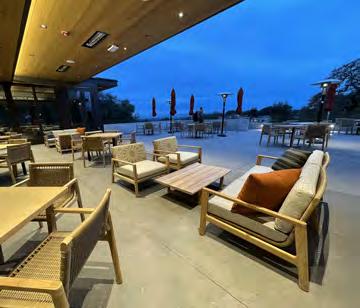



RONALD BANASZAK
Ronald Banaszak, CCM, CCE, BoardRoom Distinguished Club Executive Vice President of International Business Development. Ron may be contacted at (415) 420-5183 or ronbanaszak@gmail.com.
Since its founding by 51 American businessmen in 1928, the Tokyo American Club (TAC), a BoardroomDistinguishedClub, has been a social nexus in Tokyo.
Just as the Japanese capital has developed over the decades, so has the club. It’s now home to more than 4,000 members and their families from over 60 countries. In addition, the club’s staff is drawn from more than 40 nations.
While this club’s members are extremely proud of its world-class facilities, they are even prouder of the thousands of friendships the club has helped to build among members. Without a doubt, it is the hub of international exchange in this incredibly dynamic and cosmopolitan city.

“Tokyo
American Club is a people place. I genuinely don’t believe there is a single, greater value proposition for the club than our employee family. That sums it up.”
Darrin Morrish, general manager

This club is spectacular!
Aside from its storied history in Tokyo’s international community, it has strong links with every area of business and culture in the city – and even Japanese royalty. With such status, TAC’s members demand and deserve the best , which is why they hired world-leading architects Pelli Clarke Pelli to design the current clubhouse (the architects of the Salesforce Towers in Chicago and San Francisco, as well as designers of some of the world’s tallest buildings and other major urban landmarks).
Their home never fails to impress first-time visitors and potential members. When the club unveiled the facility in 2011, the McMahon Group described it as “light years ahead of its U.S. counterparts” and “as quite possibly the finest private club facility in the world.”
The TAC has had a few homes over the decades but has been based in Azabudai, next to the Russian Embassy since the 1950s ... a location very close to some of Tokyo’s must-see places, including the Tokyo Tower, a landmark in the city with panoramic views over Tokyo.
Nearby is Zozo Temple, which was once the family temple of the shogun. Further away are the beautiful Japanese Hamarikyu Gardens (founded in 1946), a landscaped garden with its own teahouse next to a pond. A feudal lord originally owned the land of the club’s current home hundreds of years ago.
This club has the finest dining venues, casual to formal, and private event venue space. In addition, it offers members and guests squash, bowling, golf, gymnasium, guest studios for overnight accommodations, kids athletic programing, a spa, beauty salon, library and an extensive wine cellar.
With its iconic glass-domed roof, the club’s rooftop swimming pool, the Sky Pool, really is a jewel, particularly when lit at night. With its views of nearby Tokyo Tower, one member (and keen swimmer) described it as the best pool he had ever used. On a clear day (winter is particularly good), you can even see the snowcapped peak of Mount Fuji in the distance from the pool. The Winter Garden, a bright, open-plan lounge in the heart of the club, is the other spot that naturally draws people.
The TAC sees its relationship with Tokyo and the Japanese community as crucial. The club is a conduit through which its members forge bonds and the local community. For decades, members have raised funds through sales drives and other events to support local charities, including children’s homes and homeless shelters, counseling services, and women’s support organizations.
Through the challenges of the COVID-19 pandemic, its members have been particularly active in their support of nonprofits, helping those hit hardest by the crisis. Their most recent recipient of funds is an organization that supports canteens for children and families who face serious food challenges.
As an American club, U.S. celebrations are a cornerstone of the club’s culture and are very popular, not just with their American members but with members representing numerous other countries. The TAC has many Japanese members, for example, who have lived in the U.S. and continue to enjoy and experience the customs they experienced while abroad.
Independence Day and Thanksgiving Dinner always draw large crowds, as does the annual “bonenkai” (忘年会), a Japanese year-end party to forget the woes and troubles of the past year, complete with live entertainment, adult libations, and food stations located across the club. It’s a wonderful chance for the TAC community to come together and wrap up the year.
For many decades, the club was often the only place in Tokyo to get authentic American cuisine. While Tokyo is arguably the best city in the world for food, the club’s most popular dishes are American classics such as a Reuben sandwich, meatloaf and prime rib. At the other end of the culinary spectrum, the club’s talented team of chefs and culinary experts regularly craft cuisine to pair with winemaker-hosted dinners.
The TAC is fortunate to have a dedicated management team and volunteer leadership with a strong respect for each other.
Jesse Green, the club’s president (or representative governor) grew up at the club and therefore has a strong loyalty and personal link to the club and community.
He has experienced the good, the bad and, no doubt, the controversial over the years. He’s keen to help the club emerge from the pandemic even stronger and use the opportunity to reinforce a sense of community. The general manager, Darrin Morrish, remains focused on and has successfully established a close working relationship with the president and the board to set key objectives for the year ahead.
Everyone is eager to source and retain quality talent on their teams. At the TAC, employees are allowed discounts at the club’s retail and wine store. The staff also enjoys access to the club library and receives monetary awards as part of a recognition program and for long service.
Staff members also can take part in a club-supported business program and overseas training and development. However, great pay and health insurance just aren’t enough anymore; clubs must become creative and use their resources and membership amenities to give “one of a kind” benefits to the staff without a negative impact on the membership.
More than ever, communication and leadership are what potential employees will look at when considering joining any club or organization.
“There is a lot of talk about the great resignation, but eventually people will need to return to work or perhaps broaden their fields, and if the club has clear directions and goals, I am confident this will put us ahead of our competitors,” explained GM Morrish.
“Retaining great staff members is always said to be easier than finding them. However, looking at societal trends, with more emphasis on personal choice, it’s going to be even more important to listen to people and identify what is working and what is not, then adjust accordingly,” Morrish added.
Being a BoardRoom Distinguished Club is to be recognized for being the best of the best. It is the ultimate merit-based recognition program for private clubs of all types and sizes. There are currently 200 in the U.S. and two internationally.
“Being a Distinguished Club , it is always rewarding to be part of something bigger and being part of this exclusive group of best-in-class clubs is something that I would like to tap into more over the coming year and beyond,” Morrish emphasized.
“The way we all go about our daily lives has been turned upside-down in many cases. However, in general, clubs seem to be doing better than most. This clearly shows the members’ desire for community and engagement in a safe and secure environment,” he concluded. BR









TIM HUBBARD
Tim Hubbard is vice president of irrigation at Houston-based Heritage Links (www.Heritage-Links.com), one of golf’s most active course construction and irrigation contractors.
In my work as an irrigation renovation and installation specialist, I deal with many course superintendents who have spent their professional lives fixing, re-fixing and generally fixating over their old, inevitably leaky, thoroughly unreliable irrigation systems.
This exercise tends to drive them a bit crazy.
However, they typically develop a close and complicated relationship with these systems as well. Over time, they come to know every inch of pipe, every cast-iron gate valve. Part of them is eager to get rid of the old thing because it performs so inefficiently. Another part is afraid to let go.
Well, recent technological advances — namely, the advent of thermoplastic high-density polyethylene (HDPE) pipe and ball valves — have thrown these supers for a loop. In the best possible way.
Bill Hamilton at Lake Wildwood Golf Course in Penn Valley, CA is a great example. He recently commissioned a new, all-HDPE system, opting for an AquaFuse irrigation package supplied by CMF Global. All the underground components feature piping melted and fused together to form a single, monolithic, all-HDPE system. Without joints or thrust blocks anywhere. No joints to leak. Won’t need replacing for 40 to 50 years, maybe longer.
“By then, I’ll be long gone,” Hamilton told me. “My replacement will probably be long gone as well. If you’re asking me about trade-offs, I couldn’t say there has been one: The poly valve is so bulletproof. With the welded pipe,

it’s essentially one pipe through the whole system, where the joints are stronger than the pipe itself.”
It’s a unique situation today: The pace of change in this specific area of course construction and renovation has exceeded the lived experience of decision-makers. At first, supers, course owners and board members don’t quite believe what is being proposed. It doesn’t compute. But this is the new, entirely advantageous reality.
The all-poly ball valves, like the HDPE piping itself, are easy to install/operate. Sometimes they aren’t so readily available, but supply-chain issues have affected so many things these days. It’s my feeling that, of late, HDPE ball valves have been more readily available than the old cast-iron gate valves. Pricing on the poly ball valves is comparable.
There are some things supers and clubs need to learn: Most piping in a golf irrigation system is 6 to 8 inches in diameter. Maybe a handful of 10s and 12s. When initially filling a system, more than 120 PSI can build up behind that ball, in the valve. So there’s a bypass system, which fills up the downstream side and equalizes the pressure before you turn it loose. I tell people to leave them both open — the main valve and bypass — during operation. If you have to shut down, close the main line first, then the smaller bypass valve.
Superintendents must develop a knowledge of these systems, like anything else. They also need to move their minds away from there being a 90-degree turn to enable the most force. They need to back off a bit and not over-torque the smaller valve. Hey, it’s a new technology, but it ain’t rocket science.
















DAVE DOHERTY
Dave Doherty is CEO and founder of the International Sports Turf Research Center, Inc. (ISTRC) and holds three patents regarding the testing of sand- and soil-based greens. He can be reached at (913) 706-6635 or via email: daveistrc@hotmail.com
Editor’s note: In the March/April 2013 edition of BoardRoom magazine, Dave Doherty addressed the importance of balanced physical properties in our greens. The importance of balanced physical properties because of increased rounds of play because of COVID-19 makes this issue even more important today. Greens with balanced physical properties are doing very well while those without balanced physical properties are in most cases struggling.
There’s no question, increased rounds equal increased stress. The National Golf Foundation has reported that the number of golfers has increased each year for the past five years.
One explanation has been the effect of COVID-19, where golfers have been able to socially distance themselves while playing the game on outside courses. People who have been challenged by the restrictions of the pandemic have been able to find some relief on golf courses. So, what has this meant for golf courses?
The most valuable asset of any golf course is the greens. We can have a $100-million clubhouse, a master chef, the finest cutlery and the most trained staff, but if the greens are not in the condition that players have come to expect, we will have a clubhouse catering to luncheons and card playing, and neither of those two by themselves covers the overhead.
Every course with good to excellent greens also has good to excellent physical properties in their greens’ material. The USGA-recommended guidelines are for new construction materials and do not necessarily apply to greens once we seed, sod or sprig as the greens age. The physical prop-
erties of greens must also be compatible with the microclimate in which they reside.
For instance, greens that receive adequate sunlight and have good air movement will normally need/require different physical properties than those that have limited sunlight and limited air movement. The different types of turf (Poa, Bent, and Bermuda) will also in most cases require different physical properties. The number of rounds played, size of greens, and cupable areas will have a tremendous impact on the physical properties as well.
The chemical and biological factors of our golf greens cannot function properly if the physical properties are out of balance.
I am still amazed that only 25 to 30 percent of our North American golf courses do regular physical properties’ testing. If your course is among the 70 to 75 percent that does not do regular testing, I strongly urge you to think seriously about starting a physical properties testing program. Balanced physical properties will in most cases lead to savings on the chemical and water sides of the maintenance budget. BR
from Green Committee | 86
According to Chris Menno, technical service and sales chief at CMF Global, the shift to HDPE is moving fast. “Internationally, the U.S. is behind the curve a little bit,” he says. “The all-poly approach is already prevalent in Europe, and it’s easy to see why. So much less can go wrong. Once we’re 100 percent HDPE, it all comes under the AquaFuse 25-year warranty, which covers every bit of black plastic on the project. At that stage, it’s really down to how it’s installed.”
At BraeBurn Country Club in Houston, TX, the state of the art has been moved forward another notch by joining a new, all-poly irrigation system directly to the pump-station discharge pipe. It transitions from the interior of the pump station — an 8-inch steel pipe, a flat-faced bolted joint, above ground — directly to the rest of the network. All poly, all fused. Not a single mechanical joint restraint, glue or thrust block in the whole system. When you bury something like that in the ground, there’s just a limit as to what can go wrong. BR




❏
❏
❏
❏
❏
❏

Nancy Levenburg, Ph.D., is a recently retired professor of management in the Seidman College of Business at Grand Valley State University in Grand Rapids, MI. She has published numerous articles in business and professional journals, and has assisted over 200 organizations with strategic planning, marketing strategy, and improving operations. She is the president of Edgewater Consulting and a member of Spring Lake Country Club in Spring Lake, MI. For more information, contact her at: levenbun@gvsu.edu or (616) 821-5678.
We’ve all seen it … the sign posted on the door of our favorite eatery: “Due to COVID-19, we have decided to temporarily close. We hope to open next Wednesday as long as we feel it’s safe to do so. We apologize for any inconvenience.”
Or the notice posted on Facebook that a local day care was closed due to COVID-19 and staffing issues. Or, in the town of Trumbull, CT, the Fairchild-Nichols Memorial Library announced that it would be closed on Jan. 15 and close early on Jan. 19 due to COVID-related staffing issues.
As advertisers, marketers and politicians alike have reiterated to us about the pandemic, “We’re all in this together.” Even the members at the private club where I’m a member were impacted when they received an email on Dec. 30 – the day before New Year’s Eve – letting them know that COVID19 had “hit the kitchen staff pretty hard and we are down to just a few available cooks. Therefore, we are making some adjustments to the last few days of service in 2021 in an effort to have some options for our members.”
employees of the other organization? I highly doubt it.
Yet I also can’t help but recall what my son told me about flight cancellations over the 2021 holiday season. He’d heard from one pilot friend and two flight attendants who work for three different airlines that many of the flight cancellations that were attributed to airline personnel claiming they either had contracted or had been exposed to COVID-19 were, in fact, not true.
Instead, COVID-19 provided a convenient and noncontroversial excuse for people who preferred to spend the holidays with family rather than fly the friendly skies. (And knew that if they used COVID-19 as an excuse, they’d get the time off … automatically.)
And this reminded me of what some faculty members I used to work with referred to as the “dead grandmother syndrome,” an ailment that typically afflicted students during final exams week. With no disrespect intended, we used to marvel at the fact that more students’ grandmothers died during final exams week than at any other point during the semester. It was unbelievable.
I’ve noticed that cruise lines (that are aggressively courting passengers to return to the seas) are offering COVID-19 protection programs if you or your booked cruising companions test positive for COVID-19 within 30 days of embarkation … featuring 100 percent return vis-a-vis a future cruise credit of the cancellation fee, fares, taxes, fees, and so on. Are they required to show proof of a positive COVID-19 test to use the program? The answer from Princess: “While not automatically required, we reserve the right to request proof of a positive test result.”
The adjustments included closing the main dining room and changing a spectacular New Year’s Eve menu to a buffet featuring five appetizers, cream of mushroom soup with beef, a composed garden salad, all-you-can-eat pizza, and ice cream sandwiches.
Given the transmission rate of the highly contagious omicron variant, it’s easy to see how an entire cadre of staff people – whether restaurant, day care or library workers – could be knocked out in one fell swoop. At the same time that one restaurant closes due to COVID-19, another across town is bustling with activity – from a bar packed with customers to bartenders, hosting and serving staff, chefs, bussers, and cooks.
Apparently, COVID-19 can strike in one location while bypassing another. Does that mean that employees at the afflicted organization engage in riskier behavior than the
So, what did faculty members do when approached by students asking, “Could I please take a makeup exam? My grandmother just died and the funeral is [coincidentally!] the same day as our final exam.” After expressing our condolences, we typically offered students the ability to take a makeup exam … as long as the student provided some type of proof of the family member’s death (e.g., a copy of the obituary or the funeral program).
I should note here that I typically extended profuse apologies to the student for requesting this information at her/ his time of bereavement, explaining that while I wished all students were honest and trustworthy, I also knew that some would – sadly – claim there had been a death in the family when, in fact, there had been none, simply to avoid/



JARRETT CHIRICO
Jarrett Chirico, PTR, PPR, PPTR, USPTA, PPTA is the director of racquets at Royal Oaks Country Club in Dallas, TX. He can be reached via email: jarrettchirico@gmail.com
I will be the first to tell you what you already know. I bet you have probably heard this many times before and even believe it to be true.
The country club world is changing, but to simply say that it is changing isn’t enough. It is changing faster than ever before and unfortunately, too many clubs are playing catch-up when they should be the ones effecting change.
The average age of membership is dropping substantially and members want more value for the dues they pay. In other words, they want more for their money. No longer are clubs a place where men come to play golf and women bring their children to enjoy the pool.
More often than not it is women who are deciding which clubs to join and why. As a result, clubs are being forced to add new amenities that can give the whole family something to do and reasonably—do at the same time.
That sounds pretty good, right? More people are joining clubs and wanting to spend their time at the club. The best clubs advertise by word of mouth—and rightfully so.

Then why is it a common misconception that country clubs are a thing of the past? I’ve even heard peers comment that the club industry is dying. Why are so many clubs being bought off, sold, or going under?
The simplest answer is most clubs choose not to evolve with the world and time in which we live. Royal Oaks Country Club has been around for over 70 years. I guarantee you that if we were the same club now as we were 70 years ago, we would not exist.
People have more options than ever, and with the freedom of choice, they are going to go where they can get the most for their money. Often this has nothing to do with anything changing at the club; it’s a direct result of nothing changing.
If you pay $10,000 a year, are you going to choose the golf club which offers nothing but a pristine golf course or the family club that not only offers golf but many other amenities as well? It’s truly as simple as that. It’s 2022—and people have options.
If clubs don’t rise to the challenge and provide options to their members and prospective members, they are going to lose membership to clubs that do.
Taking that into consideration, when you see clubs going out of business, it is not because they did anything wrong. They simply didn’t have the vision or ability to grow and expand with society. You can only put a Band-Aid on a problem for so long until the problem grows to a capacity outside of your control.
I have spent my whole career focusing on tennis and now due to pickleball, I have not only bought into but fully believe in the idea of a total racquets program. I speak all over the country about pickleball and people say to me all the time, “If our members play pickleball they won’t play tennis.” Or I hear, “We don’t need pickleball because tennis is busy.”
I always tell them the same thing: If they are going to quit tennis for pickleball, they will quit tennis anyway. I can assure you that if your tennis program is busy now, it won’t be in three years and if you wait until then to do something about it, you will be left with nothing. The truth is I don’t care if people play tennis, paddle, squash, or pickleball. I care that they choose to use my club and enjoy our programming.
By introducing pickleball to your club, you are not only ensuring that your members stay engaged with your program, but you are creating a catalyst for a crossover where families can come together. Inspire your members to not just simply “use” your facilities but engage with your club and programming in a way that they won’t find anywhere else. Make them fall in love with your program, not just the service you provide. If the answer is simply to invest in amenities and look to the future, will that be enough? Absolutely not. I go to conferences where they preach about growth and all the new things clubs can offer that will keep members happy and engaged.
What if I told you success in the hospitality industry and success in any industry is not about amenities or options at all? Instead, success is 100 percent about the staff. Before you stop reading and say that I am crazy, I want you to think of the last time you were at a conference. Think about how many peers you know who were there with you (if you are a golf or racquets professional, this is amplified).
Now think about how many of your peers weren’t there. For the racquets industry, even at a large symposium, I might see 300 pros listening. Everyone there listening knows 10 to 20 other pros who don’t bother to show up—and this is why the industry seems to have stalled when some parts of it are speeding up. If you don’t take the time to invest and learn (or if GMs don’t allow staff to invest and learn), you will never see the future.
Imagine if not one of your staff cared to go to conferences or received the resources to attend. If you don’t care about things that might seem silly today (like pickleball), where will you end up tomorrow?
Why invest in someone who is not invested in the industry? You must remember that everyone we invest in will one day be a leader in the industry. Our industry, the amenities, the options are nothing without the people who create them.
My challenge to you is this: don’t just fill positions but hire with the thought to inspire. If someone is not inspired, they have no business in the hospitality industry, because if they are not inspired and/or have passion for what they do, they will never effect change in the industry and they will never give your members unforgettable, worthwhile experiences.
Who you hire is a reflection of you and a reflection of your club. The disappointing thing is this usually happens from the top. Clubs that have not grown with the times have been run by managers who are stuck in the past. Managers who think they know everything and have no desire to learn or grow.
I promise you the day you stop learning is the day you start failing. Every hire, every member, every interaction is creating an opportunity for you to learn a new skill you will find necessary for growth. When you are no longer inspired, it is time to move on. Every manager, director, and leader has three obligations:
1. An obligation to your staff: You need to allow them to own the opportunity to learn, grow, and effect positive change in their club, their position and, ultimately, their industry.
2. An obligation to your club: You have the responsibility to constantly be seeking ways to move your club forward. More often than not, listening to someone else’s point of view might inspire you to take a new direction needed to succeed.
3. An obligation to your industry: If you are not training and developing for the future, our industry will fail. If you are in a position to lead, don’t just lead for today but understand you are obligated to lead for tomorrow. BR








By Dave White, editor
“I’ve known Jay for about 25 years, but it wasn’t until visiting Boca West that I knew I had met someone really special,” recalled John Fornaro.
“Walking through the club with him, he knew every member, and I mean ‘he really knew every member.’ Remember, Boca West is its own city, with five golf courses and over 3,000 members and a staff of over 800 during the peak season,” related Fornaro, BoardRoom magazine’s publisher, in recalling his many memories of DiPietro.
Friends and family celebrated the life of the long-time general manager of Boca West Country Club in Boca Raton, FL, Jay DiPietro recently.
Jay, a very distinguished gentleman, an influencer in the private club industry and a friend of BoardRoom magazine, transformed Boca West into the gem of the private club industry. He died in early March at his Florida home after a long illness.
Jay spent 32 years of his best years at Boca West.
“Jay understood clearly that his job was to operate and run the club successfully. But, really, it was much more. His members were successful professional people and business owners. They’d spent 35 years or more taking care of their businesses, their spouses, and their children,” Fornaro intoned.
“Jay certainly understood he needed to take care of these members during their retirement or remaining years of their lives. He did this exceptionally well. He gave them purpose through activities and clubs, unique entertainment, the best facilities, and by offering plenty of other things to do. He talked to all of them, knew their names and was there for them, especially in times of grief.
“Empathy is the word I think about the most when I think of Jay,” Fornaro added. “He showed his members empathy, respect and great compassion. Jay made the lives of thousands of members better.”

Growing up in Boston as the oldest of seven first-generation Americans, Jay learned responsibility at the age of 11, earning his first wages at the Hampshire House.
“With humble beginnings turning into successes, I realized how fortunate and lucky I am,” Jay recalled several years ago in an interview with BoardRoom.
“It allowed me to help others succeed and achieve their goals, whether through my mentoring of staff or working to raise funds for charities that help kids. It has always left me feeling fulfilled and energized. The club industry has allowed me to work with people focused on improving the lifestyles of both the members and the staff. That’s really gratifying.
“I’ve made some mistakes, but through persistence and determination, I’ve overcome obstacles to be successful. I’m constantly challenging myself and that’s easy to do because I love what I do,” he related at the time.
DiPietro also served his country during the Korean War before beginning his long career in the hospitality industry.
He began as a manager trainee and later as a manager with the Playboy organization, followed by Holiday Inn Hotels, Restaurant Associates New York and Boston and Longchamps of Florida. He managed and operated five high-end restaurants in Miami/Dade County before becoming the general manager at the Bal Harbour Yacht & Beach Club. This marked his entry into the private club industry.
Jay’s love affair for Boca West Country Club, where he transformed the club into the number one private residential country club in the country, the number one club in Florida and fifth in the world, marked the beginning of his legacy. Boca West remains a BoardRoom Distinguished Club
Boca West is also where Jay’s legendary reputation for ‘giving back’ became his mission. As a result, thousands of special needs and underprivileged children became beneficiaries of his loving and caring nature. In addition, he founded and chaired the Club Managers of America Seminole Region Chapter Charity Golf Tournament and Gala to benefit underprivileged children.
Under his leadership, over $6.7 million was raised for Special Olympics Palm Beach County, SOS Children’s Village Florida, Place of Hope, Florence Fuller Child Development Center, 4Kids, Unicorn Children’s Foundation, the George Snow Foundation, First Tee of Palm Beach Gardens, Achievement Centers for Children in Delray Beach, to name a few.
Jay was revered as an industry leader who received many industry honors. He was the first recipient of the BoardRoom’s Distinguished Clubs Lifetime Achievement Award
He also received the Excellence in Club Management “Top Gun”; Most Valuable Member of the Florida Chapter, which is now named the “Jay DiPietro MVM of the FLCMAA, and past honoree of the Jewish Federation of South Palm Beach County, National Jewish Humanitarian Award.
Jay’s spirit lives on through his devoted and loving wife, Sharon, nine children, 24 grandchildren, eight great-grandchildren, a sister and two brothers.
Emidio Armando (Jay) DiPietro, JD, Mr. D. Dad and his most loved sobriquet, Papa Jay, will also live on at Boca West with his legendary Mr. D’s Restaurant.
Rest easy, my friend! BR



Jay DiPietro was a mentor and father figure to the entire Boca West family. He was so full of life and inspired people to be grateful for what they had but to always strive further to bring out their best. His ability to push people outside of their comfort zone to be their better self yet always remembering the importance of family first was remarkable. He provided guidance, friendship, discipline and tough love when needed. Thank you, Jay, for always being there for us - your family! Rest in Peace.
Matthew Linderman, president, COO/GM Boca West Country Club, Boca Raton, FL.
When we met 25 years ago, I knew Jay was special. Did I think all these years later that he would’ve had the impact on my life that he did? Heck no! Not many people in life get to have mentors and that is sad. But, when a mentor becomes a best friend, it’s magical. I can write a book on the differences JD had and made on so many people’s lives. I am one of the lucky ones and will forever be grateful. I will always love him, and I know he will always be looking down on not only me but everyone he made a difference with. God Bless You My Friend!
Michael McCarthy, CEO/GM Addison Reserve Country Club, Delray Beach, FL
As many people as I’ve had the good fortune to meet in this great industry, I HONESTLY don’t know of anyone who has had a greater impact, a bigger heart and who has left a stronger imprint than Jay. He will be forever missed by all of us, and our mission should be to carry on his incredible legacy!
Kurt Kuebler, CCM, partner, Kopplin Kuebler & Wallace
While Jay was seemingly larger-than-life, he was the embodiment of humility. With a bold vision and generous heart, he lived his personal and professional life in the service of others. The number of lives he impacted along the way is too numerous to count, but I’m profoundly grateful to be one of them.
Tony D’Errico, CCM, CCE, COO, Quail West Foundation, Inc., Naples, FL
Jay was the most kind, generous and loving man I have ever met. He always greeted me with a big smile, a warm hug and a kiss on the cheek and then immediately asked about my wife, Lisa. He was a natural leader, fundraiser, philanthropist and mentor. I am a better man for having him in my life.
Kevin Carroll, CCM, CCE, CAM, ECM, vice president of club consulting, McMahon Group
Jay was the first person to seek me out at the 1992 CMAA conference and offer support as I attended my first conference as a 27-year-old general manager. He encouraged me to ‘Take risks, be creative and stay true to my hospitality principles.’
A few years later, I visited Boca West following a Florida retreat and saw his passion for people and service firsthand – although his style was unique and different – he was effective, respected, admired and most importantly, showed care/love for his team.
Kevin Given, Quail Valley Golf Club, Vero Beach, FL
Jay was demanding to his closest disciples and taught us all through difficult times. He demanded passion, honesty, integrity, and most of all, loyalty. He continued to teach us the value of CMAA and the commitment we needed to make a difference in our own clubs and the industry we chose. We traveled together, played together, laughed together, and grew together. It was an amazing time.
Michael J Gibson, GM, Grand Harbor, Vero Beach, FL
Jay DiPietro was a visionary in hospitality management. He is known as the father of the H2B Visa Program for the country club industry.
Over the past 23 years, more than 25,000 women and men from overseas have had their careers shaped by the training, work experience and international friendships they have been exposed to while working in the country club industry. This year, as the hospitality industry suffered major labor shortages, the country club industry was fully staffed because of Jay’s vision.
William E. Mayville, president, Workaway International, Palm Beach Gardens, FL
Unbelievably sad, I don’t think any of us know where to park this grief. I could write you a novel about Jay. He sponsored me, mentored me, kicked me in the ass whenever I needed it and told me to like it.
Jay was and always will be the very best of us. He was the first person I met in CMAA in Florida. He sponsored me, took me under his wing and never let me falter. There is no greater gift than to have a friend and mentor so selfless. The world will be slightly dimmer now that Jay is gone, but he leaves a legacy of love and compassion that those who knew him and learned from him will carry with us always.
LuAnn G. Giovannelli, CCM, CAM, COO/GM, Bay Colony Community Association, Inc.
Jay will always be remembered as the club industry’s most dynamics innovator and leader. However, he should really be remembered for being one of the most caring and giving human beings you will ever meet. His passion and generosity helped raise millions of dollars to provide a better life for thousands of children in Palm Beach County.
Stephen J. LoGiudice, COO/GM, The Club at Ibis, West Palm Beach, FL
Jay lived the American dream. Many who knew him, know he came from humble beginnings. He recognized that others helped him succeed. He learned from those people and their lessons instilled in him a drive to make the world a better place, one person at a time. Every person whose heart he touched learned the same from him. Like a pebble thrown in the water, Jay’s character and ideas had a ripple effect on the lives of many, including many whom he never met.
W. Gary Collins, CCM, CCE, CAM

MICHELLE TANZER
Michelle Tanzer, Esq. is chair of the Global Club and Branded Residences group at the law firm of Nelson Mullins, serves on the National Club Association board of directors, arbitrates clubrelated disputes for the American Arbitration Association’s (AAA) National Golf Industry Panel and authored “The Club Litigation Book: Keeping Clubs out of Court.” She can be reached at (561) 866-5700 or via email: Michelle.Tanzer@NelsonMullins.com.
According to recent census data, Millennials constitute over 25 percent of the U.S. population. Naturally, clubs who want to grow their membership base recognize that attracting more from this demographic may be a critical element of their strategic planning.
Oftentimes these clubs believe the best approach is to create a membership category geared to this age group (born 1981-1996) and entice them with deeply discounted joining payments and/or reduced dues. However, depending on the state where the club is located, there could be legal implications of offering these age-based membership categories.
Many states, including Connecticut, Florida, Illinois, Maryland, Pennsylvania and South Carolina, have anti-discrimination laws that, in addition to various other protected classes, include age as a protected class.
For example, Florida Statutes Section 760.60 provides (with emphasis added) that “It is unlawful for a person to discriminate against any individual because of race, color, religion, gender, national origin, handicap, age above the age of 21, or marital status in evaluating an application for membership in a club that has more than 400 members, that provides regular meal service, and that regularly receives payment for dues, fees, use of space, facilities, services, meals, or beverages directly or indirectly from nonmembers for business purposes.”
In contrast, Pennsylvania’s statute is much broader in that it creates a potential age discrimination claim by any person whose ability to “obtain all the accommodations, advantages, facilities and privileges of any public accommodation…” is inhibited on the basis of age.
In any of these states, clubs that restrict the availability of a category to only individuals in a certain age group may unknowingly expose the club and the board to illegal age discrimination claims or regulatory compliance actions.
Nevertheless, some board members may ask if age discrimination is really a concern because so many clubs offer “Junior” or “Executive” categories of membership. The answer depends on the particular club’s appetite for risk.
One club in Florida that did not meet the statutory exemptions necessary to be deemed a “truly private club” created and offered a membership category available only to individuals under a certain age.
As a result, the club faced a threat of an age discrimination lawsuit and an enforcement action initiated by the state of Florida. In this case, it was an existing member who complained to the attorney general of Florida about the age-based membership category, and the club was forced to eliminate the category or face fines and other penalties.
It is important to note that while these particular laws may make it illegal for clubs to offer membership based on age as a protected class, they do not neces-
sarily prohibit offering other incentives once the individual is admitted and becomes a member of the club.
Thus, a club within one of these jurisdictions may prefer to implement other potential alternatives to increase the appeal of their memberships to younger members.
Such alternatives could include creating a membership category without full privileges but with privileges that would appeal most to the younger set or establishing variations in qualifications for membership or payment alternatives for certain members once they have been accepted for membership. Other alternatives may also be available depending on the state and type of membership plan involved.
Given the vast number of potential members that are Millennials, it makes sense to find solutions to attract and keep them as club members.
However, when creating new categories of membership or launching any new marketing initiative, the legal parameters should be considered to best protect the club from unnecessary risks, especially when alternatives may exist that will achieve the same or similar results.
As always, consider the applicable laws and the potential for application of the “truly private club” theories and proceed accordingly. BR








Melissa Low, CAE, is the senior director, communications and advocacy, for the Club Management Association of America (CMAA). For the latest information on these and other issues affecting the club industry, please visit CMAA’s Legislative Report blog at www.cmaa.org.
It has been an impactful fall and winter for federal rules and regulations affecting the club industry.
Here’s the latest information on the Occupational Safety and Health Administration (OSHA) COVID-19 Vaccination and Testing Emergency Temporary Standard (ETS) and the availability of H-2B visas.
In early September, the Biden Administration directed OSHA to develop a rule that will require employers with 100 or more employees to ensure their workforce is fully vaccinated or require unvaccinated workers to produce a negative test result on at least a weekly basis before coming to work.
The ETS was officially released on Nov. 4, with portions slated to become effective Dec. 5, and testing requirements to begin Jan. 4. Immediately, litigation was filed against the ETS.
On Nov. 6, the US Circuit of Appeals for the Fifth Circuit temporarily halted the enactment and enforcement of the OSHA ETS. In its ruling, the Court cited “grave statutory and constitutional issues.” More than 30 legal challenges were filed by states and business organizations in opposition to the rule. These challenges were consolidated for consideration by the US Court of Appeals for the Sixth Circuit on Nov. 16.
The Sixth Circuit’s three-judge panel ruled on the case on Dec. 17, ending the Fifth Circuit’s stay and allowing OSHA to move forward with the full implementation with slight changes to the enforcement dates.
OSHA exercised enforcement discretion and announced that it would not issue citations for noncompliance with the ETS requirements before Jan. 10, or the testing requirements before Feb. 9, “if the employer is exercising reasonable, good faith efforts.”
The litigation to challenge the ETS moved to the US Supreme Court and expedited arguments were held on Jan. 7. On Jan. 13, the US Supreme Court blocked enforcement and implementation of the ETS.
The Court’s written opinion cited agency overreach and explained that “Although Congress has indisputably given OSHA the power to regulate occupational dangers, it has not given that agency the power to regulate public health more broadly.”
Department of Labor Secretary Marty Walsh responded to the ruling: “We urge all employers to require workers to get vaccinated or tested weekly to most effectively fight this deadly virus in the workplace.
Employers are responsible for the safety of their workers on the job, and OSHA has comprehensive COVID-19 guidance to help them uphold their obligation. Regardless of the ultimate outcome of these proceedings, OSHA will do every-
thing in its existing authority to hold businesses accountable for protecting workers, including under the COVID-19 National Emphasis Program and General Duty Clause.”
For now, clubs and other large employers will enjoy a reprieve from enforcement of the ETS. It now returns to the Sixth Circuit Court of Appeals for full trial and consideration.
Supply continues to exceed demand for the H-2B program, which helps meet the need for a seasonal workforce in the club industry, among others. As of Sept. 30, US Citizenship and Immigration Services (USCIS) had received enough petitions to exhaust the supply of 33,000 H-2B visas allocated for the first half of the fiscal year 2022. USCIS made the announcement on Oct. 12. Last year, this same allotment of visas was not exhausted until Nov. 16.
In an unexpected move in December, the Department of Homeland Security (DHS) and the Department of Labor (DOL) announced the release of an additional 20,000 H-2B visas for use before March 31. This release marks the first instance of a release of supplemental visas for the first half of the fiscal year.
The 20,000 H-2B visas will be available for employers for workers with start dates on or before March 31. A total of 6,500 visas are earmarked for employees coming from the Northern Triangle countries (Honduras, Guatemala, and
El Salvador) and Haiti. The remaining 13,500 must be used by returning workers who received an H-2B visa, or were otherwise granted H-2B status, during one of the last three fiscal years (2019, 2020, or 2021).
In addition to the release of the supplemental visas, the announcement noted that the DHS and the DOL intend to issue further rulemaking that will modernize and reform the H-2B program, including incorporating program efficiencies and protections against the exploitation of H-2B workers
As of Jan. 4, more than 136,000 visas were requested for the second half of FY2022 (start dates of April 1 or later). The cap limit for this period is 33,000 visas.
According to its announcement, the DOL’s Office of Foreign Labor Certification applied a randomization process to assign and fulfill all petitions.
Meanwhile, employers are still awaiting the release of the additional 20,000 supplemental visas for the first half of the fiscal year.
That release is expected in mid- to late January.
As part of the H-2B Workforce Coalition, the Club Management Association of America continues to work to request expedited cap relief and a permanent legislative solution. HR3897, the H-2B Returning Worker Exception Act, would exempt workers who have been admitted to and worked in the United States on an H-2B visa during one of the past three fiscal years from the annual 66,000 cap and address other program integrity measures.
Passage of this legislation would benefit the club industry and others who rely on this program for their peak seasonal workforce needs. BR



By Ellery Platts
November 5, 2021, marked the first day of the inaugural Black Golfers Week in Bermuda.
Black Golfers Week has been divided between three of the island’s most prestigious golf courses. The Mid Ocean Club Golf Course in St. George’s Parish, the Ocean View Golf Course in Devonshire, and the Hamilton Princess and Beach Club in Hamilton.
The preview event was designed to promote the power of diversity in sports by honoring local and international sports legends. What better way to do this than with Bermuda’s very own Olympian and inspirational speaker, Dr. John Carlos?



Carlos made history back in 1968 through activism on the podium after winning a bronze medal in the 200meter event for team USA. While receiving his medal, Carlos and Tommie Smith raised the Black Power salute.
He joined three-time Olympian Hazel Clark, now the director of business development for the Bermuda Tourism Authority (BTA), for discussions on the power of sports at the week’s opening luncheon.
“The island is steeped in black golf history and is known for its rich golf legacy,” said Clark.
Carlos isn’t the only famous face making an appearance. Troy Mullins, a professional golfer, has also been named an ambassador for the event.
Many events and opportunities allowing participants to get involved filled Black Golfers Week. Some of these events included golf lessons with local golf professionals, and tea on the tee where the Ocean View Golf Course was turned into an outdoor happy hour escape.
The Rafael “Kid” Corbin golf tournament rated as the most highly anticipated main event.
Corbin, a Bermudian, consistently challenged segregation in golf throughout his career. This included being the first black man to play in the Canadian Open back in 1939.
The Black Golfers Week was first created by the BTA, with Clark saying the goal was to amplify the rich history of black golf on the island and to enhance the “accessibility and inclusivity of the sport of golf to members of the black community.”
“One of our key objectives is to attract more black travelers to the island. This event is an ideal platform to accomplish that,” said Clark.
The numerous events can accommodate up to 300 participants throughout the week and after an incredible reception during its inaugural year, organizers anticipate the tournament to continue for years to come.
“Black Golfers Week has allowed us to carve out a very exciting niche and we are gearing up to announce our plans for the 2022 event,” said Clark. “We expect each year to get bigger and better and look forward to you joining us.” BR
HEATHER ARIAS DE CORDOBA
Heather Arias de Cordoba is the Innovative Ideas editor, associate editor and creative director for BoardRoom magazine. She is an award-winning and highly versatile marketing leader, writer and designer with a 25-year career in the private club industry. To submit an idea or story for this section, please email heather@studiodelmar.net
Spring is a season to celebrate! A fresh start. Longer and warmer days. Budding flowers. Spring break and of course, a visit from the Easter bunny.
Many Easter events at clubs were canceled or modified in 2020 and 2021 to accommodate social distancing and quarantine regulations.
However, the team at Champions Run in Omaha, NE, managed to create a magical event for kids of all ages by bringing the Easter party to the members’ homes with their Egg Our Yard Easter eggstravaganza!
“Members were encouraged to visit eggouryard.com to sign up for Easter egg home delivery,” explained Ben Lorenzen, creative director and director of aquatics and fitness at Champions Run. “We asked them how many eggs they would like us to hide, on what night and how hard they wanted the eggs hidden. As a result, the staff hid over 3000 eggs and visited over 60 homes over three days,” Lorenzen continued.
“We added signs in the members’ yards that said the Easter bunny had visited their home and their yard had been egged. We also left gift baskets with a polaroid photo of the Easter bunny in front of their home. It was one of the most magical events we’ve ever done for our members, and the response was phenomenal!”
Lorenzen and his team brainstormed the idea, purchased the URL eggouryard.com created a form asking members how many eggs they want hidden, where they want them hidden and on which day and got to executing the event.
“This was one of the most unique things we did during COVID and it showed us that member engagement was strong, even if our members couldn’t be at the club,” stated Lorenzen. “Our staff visited over 100 homes in one night alone, proving that the team at Champions Run is committed to the member experience and working to find ways to connect with our members.”
Champions Run is a private club in Nebraska featuring an 18-hole golf course, junior Olympic-sized pool, five Har-Tru lighted tennis courts and a fitness center. In addition, the club boasts private dining rooms and offers a unique forum for business meetings, receptions and banquets. BR








COVID sparked a renewed interest in golf and tennis, with many private clubs experiencing a surge in membership. The flipside: a staffing shortage.
The hospitality and private club industries are struggling to find and keep good employees. The labor shortage may be more disruptive than COVID. But Tara Iti Golf Club in Te Arai, New Zealand, is implementing unique ideas like flex scheduling to create a positive and productive employee environment.
“As I get older, I’ve realized that the club and hospitality industry is changing and that we need to pivot and continually adapt ourselves to the current environment,” explained Matt Guzik, Tara Iti’s general manager. “One thing I have learned since moving to New Zealand is the importance of

a better work-life balance. I have learned “work to live” as opposed to “live to work” and have discovered that our most positive and productive employees are those that “work to live” and have found that happy balance.”
In a coastal town like Mangawhai, the summer holiday season between December 24 and January 6 is an important part of kiwi culture, and many people like to spend time with their family and friends. Understanding that quality family/ leisure time contributes to overall employee satisfaction, the superintendent initiated the employee flex scheduling program, which allows the golf course management team to schedule themselves over the two weeks, rather than having management schedule the staff.
“All I wanted for the staff was for them to spend time with their families and take a breather from work. Summer

HEATHER ARIAS DE CORDOBA
Heather Arias de Cordoba is the Innovative Ideas editor, associate editor and creative director for BoardRoom magazine. She is an award-winning and highly versatile marketing leader, writer and designer with a 25-year career in the private club industry.
To submit an idea or story for this section, please email heather@studiodelmar.net
is pretty ruthless in this part of the world, so it is important that everyone gets some time away,” explained Brian Palmer, Tara Iti’s superintendent.
“By scheduling themselves on a whiteboard, the team understood that everyone should work some days between December 24 and January 6, but they can also take some time off,” stated Guzik. “During this time, the golf course was kept in great condition, and upon returning to normality there were no complaints from our wider team or membership.
“The surprising success was that even though this was one of our busiest periods for the club, the employees that were there, wanted to be there. Therefore the overall outcome was a positive one. In addition to this, there was no resentment encountered by staff for taking the leave because others were happy to do the work,” he added.
And after positive feedback, Guzik presented the idea to all managers at the club.
When asked about advice to pass on to other clubs looking to implement something similar, Guzik replied. “Ensure you have your team’s buy-in of the idea and prepare your team
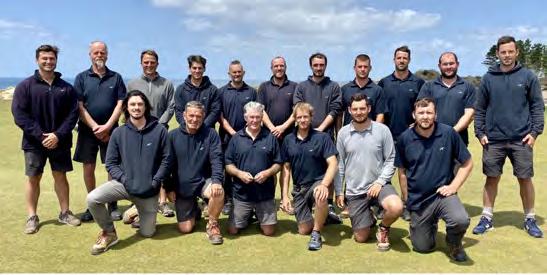


well in advance. Good planning from both management and staff is essential, so is acknowledging this may or may not work in every department, but that doesn’t mean your organization can’t implement the idea for some areas of the club.

“Here at Tara Iti we do our best to encourage employee engagement and ideas. And the management team is encouraged to recognize the importance of employee well-being. More recently in our hiring practices, we have increasingly acknowledged that quality family/leisure time contributes greatly to overall employee satisfaction, directly impacting club culture and creating a better member experience,” Guzik concluded. BR
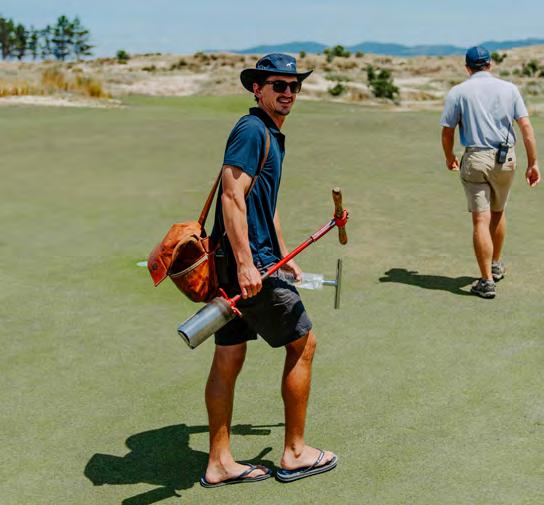


Needing certification
GREGG PATTERSON
Gregg Patterson is founder and president of Tribal Magic. He can be reached via email: GJPAir@aol.com
You’re the new GM at The High and Mighty Club. You beat out dozens of applicants who wanted the job because The High and Mighty Club is outrageously special — they keep their managers for decades, love ‘em to death and pay ‘em the big bucks. You’re glowing, pumped up, energized.
You want to be a big success because you’ve got kids to feed, a mortgage to pay, a spouse to pamper and a Porsche to repair.
You’re hungry, excited, nervous and hopeful. You know next to nothing about “the way they do things here” or what they’d like you to do or what you’d better not do. You’ve gotta locate “ground zero” before you leap up and make changes.
But you’re comfortable and confident knowing that you’re a Certified Door Opener and you wear the badge proudly. You know which doors to open, what keys you need and how you’ll lock away the treasures you’ll uncover.
Want to get certified? Here’s how.
DOOR OPENERS HAVE THE BASICS
Before wanna-be Door Openers can start the certification journey, they need to conduct a basics audit to confirm that they’ve got the foundation needed to open doors and unlock secrets.
Curiosity — hungry to know what, why, how, who, when and willing to ask the questions needed to know what, why, how, who and when.
Systematic — generates checklists of “what should be done and when” before doing it.
People skills — a personality that’s approachable, conversational, likable, interesting and capable of “reading the signals” when speaking to others.
The reach and the knock — confident enough to be a selfstarter and ready, willing and able to reach out to people, paper and place, to “knock on the door,” engage enthusiastically, ask questions, dig into files and explore nooks and crannies.
Research skills — excited about “digging into the innards” and spending the time needed to read files, watch videos, interview people, uncover facts, discover what was said, examine what was done and ponder what all that talking, reading and watching means.
Skepticism — inclined to question everything they see, hear or read knowing what was said, written or seen might not be what actually happened.
Documenting mindset — a love of and a capacity for documenting and inventorying what was seen, head, read and learned.
Door Openers have done the “do I have the basics” audit, have passed the inspection and are primed to open doors, unlock secrets and stockpile insights for future use.
Certified Door Openers need to know which doors need opening. There are two types of doors: active and passive.
Active Doors — that is, the people who need to be interviewed during the exploratory phase of the opening process. The Actives know a lot about something — golf? kitchen operations? fertilizer? — and a little about lots — governance? staff? members?
Among the Active Doors Door Openers should open:
• Opinion leaders — The members and staff who are alpha dog and queen bees.
• The ex-manager — The old one is either going or gone. They’re a library of experiences, insights and opinions that need to be read. Door Openers know “when a manager leaves, a library closes.” Visit the library before the library closes.
• Those in governance — President, board members, committee chairmen.
• Those who were once in governance — Past presidents, board members and committee chairmen
• The longtime, much-loved staffer — Team members who have seen lots, know lots and have an extensive network of members and staff.
• The longtime, always-at-the-club member — Like longtime staffers, these members have seen lots, know lots and have an extensive network of members and staff.
Passive Door Openers — that is, the stuff you look at or listen to that explains what is or was.
Among the Passives are:
• White papers — research reports on specific issues
• Minutes — of board, committee and staff meetings
• Newsletters — sent to the general membership
• Letters to the membership — from the board to the membership or to individual members discussing issues of consequence
• Letters from the membership to the board — heated, supportive, reasoned, impassioned telling the Door Openers about issues current within the membership
• Financials — including variance reports, audit reports, income and expense statements and the balance sheet
• The building — what is the layout and condition of the facility, what goods, services and programs does it address, what are the aesthetics and what behaviors are allowed in each of the spaces
• The grounds — the size, use and condition.
Door Openers identify both the active and the passive doors that need opening.
DOOR OPENERS KNOW THE KEYS
Keys — that is, key questions — are needed to fit the doors that need to be opened. There are macro big-picture keys and micro department-specific keys designed to stimulate discussion and provide “links’’ to other issues. The right questions asked in the right way lead to doors getting opened. There are three basic questions that need to be asked during the interview.
Get ‘em talking questions — Door Openers arm themselves with some personal questions to get the conversation rolling — and to get a feel for whoever you’re interviewing. These are a few of the many:
• What’s your background and why are you working here?
• What’s the one word you’d use to describe the club and why?
• Fill in this sentence: You’ll know you’re at this club because ____ and why.
• What’s the one photo you’d show the world that captures this club and why?
Macro big-picture questions — These questions are open-ended and can be asked of anyone because everyone has an insight into or an opinion of each of the questions. These are some of the macros that could be asked:
• What is the mission of the club and what does it mean?
• How does the club govern and how does it make policy and administrative decisions?
• What are the goods, services and programs the club offers and what’s your opinion of each of them?
• What are the pluses and the minuses of the clubhouse and grounds?
• What are the house rules, what violations have you witnessed and how has the club dealt with the violations?
• How do the board and manager communicate with the members and the staff?
• How would you characterize member-staff, member-member and staff-staff relations?
Micro issue-specific questions — These are open-ended, “down and dirty in the trenches” questions.
Examples might include:
• How much does it cost to maintain a hole of golf?
• What is the food cost of sales and why?
• How many labor hours does it take to maintain the clubhouse?
• How many staff are needed to service the locker room?
• What is the cost of electricity during the summer months?
Knowing the questions, that is, having the keys, will help you unlock the doors.
Door Openers document, categorize and inventory the doors they’ve opened, the keys they’ve used, the treasures they’ve found and the insights they’ve uncovered.
Debrief — after talking, reviewing and researching, discuss and digest and ponder the treasures that were found. Create the idea bank — inventory the insights into readily accessible formats for future use.
Generate the audit report — create a report that documents the highlights from the doors that have been opened.
A new club is a mystery. Doors need to be opened and the innards explored.
Certified Door Openers know the doors, have the keys, create the checklist, do the reach and inventory what’s found.
And while you’re opening the doors, doing the reach and having the look, enjoy the journey. BR

GORDON WELCH
Gordon Welch, president of the Association of Private Club Directors, has over 20 years’ experience in private clubs and 12 years of experience as an association executive and registered lobbyist. For more information or to discuss your orientation, you can reach me at gordon@boardroominstitute.com or (918) 914-9050
The role of the president is important and influential.
As you know, each member of the board of directors has general, primary and specific responsibilities, and the office of president is no different.
As the president, you will be spending more time at the club and be actively involved with the GM or COO. You will preside over all meetings of the board of directors and executive committee, and you will be the guardian of all fiduciary, moral and ethical areas of the club. You will be required to perform extra duties, prescribed by the board of directors as necessary, from time to time.
In addition to presiding over board and executive committee meetings, the president has a variety of responsibilities. As “chief volunteer,” the president works with the COO, board, staff and community to further the organization’s mission. A president influences how the board uses its time, the selection of its board members, and its future leadership. Anyone taking on this role must be fully committed to the organization and understand the scope of energy and time required to effectively do the job.
You report to the club, the board of directors and the membership at large. As president, it’s important to demonstrate leadership skills … the ability to facilitate group consensus … and you must know about committee and board deliberations.
Your presidential duties include:
• Presiding at all meetings of the board and the executive committee
• Acting as a liaison between the board and the GM or COO to help ensure the board’s directives and resolutions are carried out
• Exercising and performing such other powers and duties as may be prescribed from time to time by the board.
More specifically, the president shall:
• Lead the board and executive committee to carry out its governance functions
• Ensure the board has approved policies to help deliver sound and compliant governance and management of the organization
• Partner with the GM or CEO to lead the development and refinement of goals and objectives
• Assess the performance of the board and its committees
• Assure ongoing recruitment, development, and contributions of board members
• Coordinate an annual performance review of the GM or COO
• Set priorities and create agendas for meetings of the board and executive committee
• Serve as an ambassador of the organization and advocate its mission to internal and external stakeholders.
What this job description does not identify are the attributes that make a good president. Certainly, the most important is the ability to lead. But what are the specific attributes of a good leader? They include the ability to:
• Be a good communicator
• Delegate responsibility
• Be courageous and decisive
• Accept responsibility
• Inspire and motivate
• Show empathy
• Be adaptable
• Be positive and optimistic
• Have a sense of humor.
This list certainly sets a high bar. However, the closer one can get to the bar, the more likely that person will exceed in the role of president and leader. When clubs select presidents, it may be a good habit to rate them against the above list.
Committees are a necessary and helpful part of club governance. As president, you must ensure the establishment and coordination of committees according to your club’s needs and governing documents. In some cases, clubs fill committees that are not necessary but are required. As president, don’t fill a committee if it will not play a role in moving the club forward.
As you see, there are many responsibilities, duties and expectations for the president. We’ve gone over them, though this is not an exhaustive description. As I mentioned earlier, the president will also perform other duties as required or assigned by the board.
So lastly, I’d just like to say … welcome to the presidency. I hope your term is as exciting and as fun as it should be. BR
Does it make a difference if you are a manager at a Distinguished Club?
Of course, it does! Both general managers and department heads of clubs who have earned Distinguished Club status are widely recognized by Kopplin Kuebler & Wallace and boards as leaders at providing a great Member Experience. It makes you a very strong candidate for leading clubs searching for top club management.


The only merit-based award program that recognizes private clubs and their management for outstanding delivery of exceptional Member Experience. www.distinguishedclubs.com


Attracting and retaining great employees is a challenge in any industry, but providing guidance and growth opportunities is the way to keep your employees happy. Regular reviews, stay interviews, healthy feedback on performance and insight on your own leadership will help you get people to stay.
It’s the reason I urge club leaders to set a board policy to ensure that reviews of the board, the GM and department heads happen annually at minimum. If it’s not board mandated, there’s no guarantee it will happen.
It’s essential that everyone at the club gives feedback to those they work for and gets feedback from those who work for them. And it should happen no less than once a year. Best-practice clubs are giving and receiving feedback on an ongoing basis and it is evident in their performance.
from Executive Committee | 26
For example, what does the careers page on your club website showcase?
If it consists primarily of a list of current job openings, I’d suggest you’ve been less than strategic about your employer branding. Conversely, if your club’s careers page highlights your club culture, what it’s like to work there, and how your club makes a difference in the lives of members and employees – well you get the point.
As a GM, if you fear receiving feedback, you may need a shift in your perception. There is comfort in knowing where you stand with your board and your team. Feedback provides direction and alignment to areas of focus. Positive annual reviews are an excellent documentation of your past performance for future club presidents and even other job opportunities.
Giving and receiving feedback is essential to your career and your growth as a leader; your development is an evolution, not a revolution. Not seeking feedback from your board and your employees puts you at a disadvantage. If you want to be a great leader who is performing at the height of your game, make giving and receiving feedback part of everything that you do. BR
For all its gotten wrong in the past two years, I am confident Peloton will be able to pull the brakes on its decline. It’s built a strong luxury brand with high-end lifestyle appeal and a strong fan base.
The last few years have been a wild ride for several businesses, and luckily private clubs have also been able to come out largely ahead, so far. But without a disciplined, longterm approach to keeping clubs relevant for future members and employees, I fear that many clubs could soon face an uphill struggle. BR
skills through professional development. These employees are more valuable to a club and have earned competitive compensation and benefits programs for their capabilities.
These four actions define professional development as an ongoing and action-oriented process. Successful individuals (the best at their craft) or organizations continue to make improvements so they are more effective.
from Personal Development | 38 from Membership Committee | 54
• A simple hand-written letter can be compelling, but you could also create a specific direct mail or collateral piece to welcome new homeowners to the neighborhood – either way, any communication should include a strong call to action and clear directions on how to reach the membership director, and the QR code works very well in this tactic as well. Consider adding an incentive if the new homeowner tours and joins within a certain amount of time after closing on their property.
Whether your club is in a well-established neighborhood or a new home builder development, has a bundled man-
A Winston Churchill quote makes this point very elegantly: “Success is not a final act. It is the courage to continue that counts.”
Action-oriented professional development equips hospitality professionals and their leaders to engage in a process of continuous targeted improvement. Professional development at a club means action. The more the better for club employees. BR
datory membership or just a gated boundary, there are plenty of reasons to remember to include marketing to the surrounding realtor and new homeowner community in your sales and marketing activities.
You’ll not only create a “good neighbor vibe,” but it puts the club in charge of its external brand image and helps you to ensure that your neighbor’s vision is as true for them as it is for you. And, when executed compellingly and consistently, these efforts should also enhance qualified leads generated and thereby result in higher sales of upgrades and new memberships. BR
1. An extensive new member orientation which includes meeting key staff and learning how each one can help get new members involved, as well as a membership package.
2. After a couple of months, email new members to ask if they have been well acclimated to club life and what the club can do to help.
3. A possible mentor program for new golfers. The mentor would be assigned based on new members’ skill level and help them get involved in groups.
from Bill Boothe | 79
So, where does Boothe see technological innovation for private clubs going in the future?
“We’re finally starting to see predictive business intelligence make its way into the club industry. Clubs have spent decades looking back at historical data to extrapolate what the future might bring. Advanced analytical software is now becoming available that will automate and improve the accuracy of those predictions,” Boothe envisaged.
It’s been an interesting path for Boothe who earned his B.A. from the University of Virginia and his M.S. from Loyola University.
from Distinguished Clubs | 83
where it is today. The dedication of these members and their role in rebuilding the club to be better than it ever has before was quite a feat, and not one to be ignored but to be celebrated every day.
With the opening of the new clubhouse, they had the task of hiring and training a whole new crew amid a global pandemic. As a result, a decision was made to bring on a recruiter and make this a full-time position dedicated to building up the staff.
from Plights and Insights | 90 from Winning Strategies | 74
delay taking the exam. In a similar manner, I’ve noticed that cruise lines (that are aggressively courting passengers to return to the seas) are offering COVID-19 protection programs if you or your booked cruising companions test positive for COVID-19 within 30 days of embarkation … featuring 100 percent return vis-a-vis a future cruise credit of the cancellation fee, fares, taxes, fees, and so on.
Are they required to show proof of a positive COVID-19 test to use the program? The answer from Princess: “While not automatically required, we reserve the right to request proof of a positive test result.”
4. At the end of the year, host a party for new members (possibly heavy hors d’oeuvres/beer and wines), with a questionnaire regarding their first year of membership. Ask what we could have done better for them in their initial joining period. Find out if they are going to sponsor a new member in the upcoming year and how we can help.
5. An exit interview and survey for all members that leave the club.
So, are you doing the above? If not, why not? BR
“I’ve tried to give back to the industry in appreciation for the wonderful career it has afforded me. That includes more than 100 education sessions at conferences and online webinars and more than 90 articles intended to teach technology concepts, many of them published in BoardRoom magazine.
“Plus, I’ve consulted with more than 400 private clubs for more than 30 years, with the goal to always exceed the customer’s expectations…the same goal clubs have for their members.”
All good reasons why Bill Boothe is the recipient of the Dave White Editorial Award for 2021. BR
Caroline Wilcox, who has been with the club since our athletic center opened in 2004, was put on this important task. Not only did she complete this duty seamlessly, but she also made it look easy!
TFC currently has a sold-out membership and has started a waitlist for members to join. As the homes are rebuilt in the area, there will be an entirely new market of new members for years to come.
TFC is set up for success now and for years to come! BR
Princess Cruise Lines isn’t saying that passengers who’ve booked cruises and need to cancel are dishonest. Nor am I accusing students or restaurant, day care or library workers of being dishonest.
What I am saying is that it’s always a good idea to have policies. Businesses require employees to submit receipts to be reimbursed for their expenses. Proof of citizenship (among other things) is required to obtain a passport. Would it be a good idea to develop a policy similar to that of Princess Cruise Lines that reserves the right of employers to ask employees for proof of a positive COVID-19 test? BR
“The marketing team works tirelessly with each location to safeguard the League’s brand and is always cognizant of the ‘big picture.’ Members enjoy League life to the fullest, but no number of amenities can overshadow the League’s core values. Being traditionally rooted while blazing trails and adapting to changing times and member needs is what will keep the League thriving for generations to come,” McFadden emphasized.
“Excellence is a journey that never ends,” articulated Brett Morris, general manager and COO of The Club at Admirals Cove in Jupiter, Florida.
“Culture matters. Our team comprises talented people who are forward-thinking leaders. We inspire, mentor, and encourage them to attend BMIs and CMAA conferences to continue learning and growing. You want your club to be a desirable workplace where employees feel safe, nurtured, and empowered professionally and personally. Invest in your people because your club is only as good as the people who work for it,” Morris intoned.
“We have strong governance that outlines the roles and responsibilities of the management and board. It serves as a valued guide in times of uncertainty and allows my board and me to have an excellent relationship.
“We constantly challenge ourselves and focus on staying ahead of the trends. Members have chosen to do business with us in advance, so we need to deliver on every touch and make it special to create their desired lifestyle,” he emphasized.
“Creativity is important. My team and I change our food menu items regularly. We scout out the latest trends to offer new choices to keep the members from leaving the club and dining outside the gates. We want them to know that their club is the go-to destination for everything they need.
“Our pro shop is stocked with everything related to golf and racquets. It caters to the luxury lifestyle offering everything from top brands such as Peter Millar and Bugatti to fine wines, cigars, even men’s and women’s shoes. We keep them on the property by anticipating member needs and creating trust, so they want to do business with us.
“Another key to our success,” Morris maintains, “is member feedback. Surveying your membership twice a year gives you clear insight into their wants. It allows you to make decisions based on fact instead of a few member complaints. We put a strong value on brand equity. This is more than just logos on your cups and golf carts. Your branding, if done correctly, can help you attract new members and increase your overall equity. It’s essential to deliver on what you promise and challenge yourself to exceed those expectations daily.”
Frank Vain, president of the St. Louis-based McMahon Group, says, “the essential promise of private club member-
ship is access to a special set of facilities, services, and programs. The essence of which seems to be facilities.
“It’s difficult to imagine a great club forming around mediocre facilities. Of course, on occasion, a great club can allow its facilities to fall into disrepair, and more than a few could be described as shabby chic, but that isn’t how they achieved greatness,” he offered.
“For the most part, soon after their formation, the world’s great clubs took their capital and built something special - a McKim, Mead and White clubhouse in the heart of New York City, or a great golf course on the coast somewhere. Club membership is about community, and it is important to have facilities that bring people together to create such a spirit.”
What do clubs do to make their club successful?
“That’s a different question,” Vain replied. “Once they build what they want and need, the great clubs support them with great people and programs. On the people side, this is both members and staff. These clubs have a member process, and they recruit friends and family that get it, whatever “it” is.
“They cause their members to think like owners, with a sense of pride in the past and a will to preserve it into the future. They create an atmosphere that others want to be part of, and they never chase candidates on price or other tactics,” he added.
In Vain’s opinion, “A distinguishing feature of great clubs is great service. We might think of Ritz-Carlton’s mission when we think of great service in great clubs – ‘ladies and gentlemen serving ladies and gentlemen.’
“There is a duty of care and a desire to comfort people in a great club that is out of the ordinary. For the most part, great service is about anticipation, and the staff at these clubs is ready to perform tasks that the member or guest might not have even known they needed before they arrived. Unexpected events are not out of the norm. The staff is rarely stumped and never says no. The management in these clubs has a keen eye for talent and trains for success,” Vain explained.
“A great club also has a unique set of programs, especially a few ‘can’t miss signature events.’ Perhaps it’s a special holiday brunch or seasonal party, a member-guest event, or even something that gives back to the membership, their sport, or their community.
“Another distinguishing feature of great clubs is their leadership style. They know the difference between governance and operations, and they value continuity. They often have longer cycles for leaders - multiyear terms for president are common - and they keep their managers in place for many years,” he stressed.
“To be successful, great even, a club must work on three levels - the facilities are special, i.e., a great golf course, the monumental architecture of a city club, the staff is ready, willing and able to provide a high level of personalized service, and the membership is comprised of passionate, well-met people.


“Peter Drucker coined the phrase, “Culture eats strategy for breakfast” to recognize how important culture is in organizational success. Great clubs have great cultures - or at least very clear and valued ones. They don’t change on a whim, and they are thoughtful and considerate of it in their actions. Because of this, they regularly invest in their physical plant; they attract members that support the club as it is and attract leaders who want to make it better,” Vain opined.
While a club’s culture is a mainstay, Gordon Welch, president of the Association of Private Club Directors (APCD), suggests personality comes into the equation.
“Member’s needs have changed, labor shortages have seriously affected the club’s ability to provide consistent services and many members are frustrated at the lack of availability for seating, tee times and access to their favorite events and activities,” commented Rick Coyne, CEO of ClubInsights.
“My long-held belief is members will forgive many things, but not inconsistent service, lack of attention to their needs and/or the inability to access the areas they want to use.”
And labor shortages are no less a problem.
“I’m tired of hearing about we can’t find appropriate staff, is one of the more frequent member responses, even responses from board members that we hear about,” Coyne added.
“So, the question is made more complex given the current state of the labor market, cost of goods and perhaps even disparate needs and wants of tenured members versus those that joined during the COVID period. Many recent member surveys suggest older members are eager to get back to normal and the newer members are simply using everything the club offers as frequently as possible.
“Under normal circumstances, top-flight clubs have discovered through strategic planning, the best mix of amenities, activities and member experi-
“Great clubs offer such a compelling member experience the clubs can consistently attract and retain the number of members necessary to fund the club properly. The professional and voluntary leadership in great clubs assure the members are willing to invest as necessary to provide the member experience while also continuously reinvesting in the physical assets necessary to provide the experience. But at the core of a compelling member experience is the staff. Without an engaged, passionate, service-oriented staff, there isn’t a member experience.”
“Even though private clubs are all similar, i.e., golf, tennis, social, pickleball, curling, etc... all clubs have a different ‘personality.’ It’s that personality that services must be directed toward.
“What makes a great club? Achieving and surpassing the members’ expectations. Providing an atmosphere, products, services and amenities that are state of the art should be pleasing to all the members. Like-minded members and a board and management team that “get” and understand where the members of that club want to go remains imperative,” Welch added.
Although clubs have embraced many positives during the COVID-19 pandemic, they have also faced many challenges.
ences not only serving the existing base of members but contemplating the needs of the next generation as well. In addition, these same first-rate clubs have created communication processes that allow member feedback, many utilizing systems that provide member input 24/7,” Coyne explained.
“The best of the best listen intently to members’ wants and needs by demographic. Then, they share the information with staff and act on what members tell them is important. In the process, they improve every day in each and every way.
“COVID has created significant member growth and demands for access and activities. The really smart and strategic-thinking clubs are doing everything possible to make these ‘good times’ into a sustainable new normal.
“Listen, act and improve… that’s what clubs need to do,” Coyne suggested.
Sean Rad, a technological entrepreneur, is known for his statement: Data beats emotion.
That’s a statement that’s likely the impetus for Ray Cronin, who founded Club Benchmarking in 2009. As a technological expert, Cronin witnessed the information vacuum clubs faced and set out to do something about it by developing a software-based solution that gives club boards and managers
easy access to data they need to make informed fact-based decisions.
For Cronin, several factors contribute to ‘great clubs.’
“Great clubs offer such a compelling member experience the clubs can consistently attract and retain the number of members necessary to fund the club properly,” he explained.
“The professional and voluntary leadership in great clubs assure the members are willing to invest as necessary to provide the member experience while also continuously reinvesting in the physical assets necessary to provide the experience.
“At the core of a compelling member experience is the staff,” Cronin emphasized. “Without an engaged, passionate, service-oriented staff, there isn’t a member experience.
“In great clubs, members think like owners, not customers. Members take pride in their club, filled with a desire to prosper. Great clubs constantly evolve their member experience in harmony with an ever-changing society and, as such, are always growing to remain relevant. They don’t stagnate!”
So, what makes a great private club, and what must a club do to be successful, we leave the final words to Tom Wallace, partner with Kopplin Kuebler & Wallace, the private club industry consulting firm.
What makes a great private club?
I believe that great private clubs:
• Have a history that they celebrate
• Have great benefits of membership
• Have relevant and quality amenities
• Have a great team
• Have good governance
• Evolve and embrace change
• Have members dedicated to volunteering their time to the club’s business and are there to be good stewards
• Are philanthropic—they give back and are a respected pillar in their communities
• Have strong financial plans that support decisions on member fees and continuously reinvest in themselves, and
• Understand their brand, how it is perceived and cultivate relevancy within the target market.
As the Club Leadership Alliance: We believe successful clubs have:
Informed leadership includes continuous education of stakeholders, mandatory and comprehensive orientations for stakeholders, a fact-based business model, and strong governance with transparent communication to stakeholders.
Strategic stewardship where strategic and master plans are developed and followed to enhance the value of membership through innovative club experiences.
Empowered management and teams that create and maintain robust talent acquisition, retention and professional development systems while using proven performance man-
agement systems and performing regular employee engagement surveys.
Compelling member experiences where member expectations are matched to the clubs’ primary purpose and value propositions are created that cultivate engaged, loyal and satisfied members who think like owners. Creating a compelling member experience also means members’ needs, preferences and satisfaction are regularly measured. And the club works to present a relevant experience that is attractive to the next generation.
I’ve visited over 500 private clubs over the last 25 years, and our team combined has seen over 1,400 private clubs. These visits have given us excellent insight into the private club industry.
We started the BoardRoom Distinguished Clubs over 12 years ago as the only merit-based award program in the private club industry...the only one that recognizes the club, its management and its staff for outstanding delivery of exceptional member experience.
We ask ourselves constantly what makes a great private club?
The epiphany breakthrough arrived when we realized that the answer was right in front of us: Beauty is in the eye of the beholder.








Or put another way: Whether one private club is ‘better’ than another private club is entirely subjective from the standpoint of each club’s members. In fact, what is valued and important to the members of one club might not be what is valued and important to the members of another club.
In other words, a club is not defined by what we find inside physically, regardless of marble entryways, the luxurious appointments, the best dining chairs, or interior designs.
The members themselves are what truly define a club. What is uniquely valued by that particular group of people; what they like about the club; what they like and want to do at the club; the interpersonal relationships they’ve established, and so on. That’s the intangible quality!
Armed with this insight, we then set out to create a means to extract, distill and measure member experience for comparative purposes across all clubs. To this end, we have broken down the experiences members might have at their club into five distinct ‘qualities’. Given the nature of private clubs versus commercial hospitality venues, we weighted these ‘qualities appropriately. The “intangible quality” is weighted more heavily than the others.
So, based on our findings, these are the qualities that go onto what makes a great club.
• Intangible quality
• Service quality
• Governance quality
• Facility quality
• Product quality.
I’ve visited clubs with initiation fees worth hundreds of thousands of dollars and others at a fraction of that. And I can honestly say I’ve seen some of the happiest members at clubs that have provided a great member experience equally. However, the membership price alone doesn’t convey the idea that you’re guaranteed a great member experience at that club.
What is consistent is this: All the great clubs have a committed general manager and well-trained management and staff. They also have board members that don’t micromanage but who focus on fiduciary issues and long-range planning while overseeing the strategic plan that the GM executes.
The board members are onboarded properly and understand their roles and responsibilities.
The primary reason for enlisting in an exclusive country club is to have a sense of community around like-minded individuals.
You may skew for a younger, more vibrant golfing community perfect for your young family, and you may need to check the club’s s demographics to ensure that you surround yourself with people with whom you are comfortable.
At least, that’s the way I see it. BR
John G. Fornaro, publisher
• Technology Master Planning
• Club Technology Report Cards
• Cost Reduction / Audits
• Hosted IT Solutions
• Surveillance Cameras
• Cyber Security Analysis

www.cctechplan.com | contact: noel@cctechplan.com






If your club accounting and POS software is 7, 10 or even 15 years old, you may be thinking of making a change. So were many of our club clients, who hired us to help them make that decision. Surprise! After a thorough needs assessment, 7 of 10 clubs decided to retain and improve their existing software. Money saved. Business interruption avoided. To learn more, contact us.
400+ CLUB CLIENTS - 30 YEARS OF EXPERIENCE.


(561)281-0459 • bboothe@boothegroup.com www.boothegroup.com
Thinking of replacing your club management software? Think again! (561)281-0459 • bboothe@boothegroup.com www.boothegroup.com


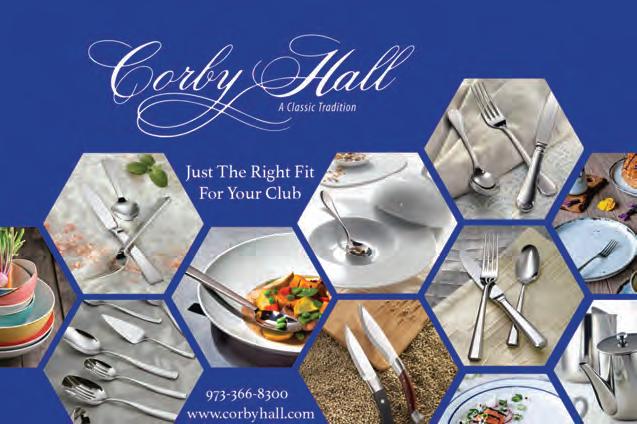


















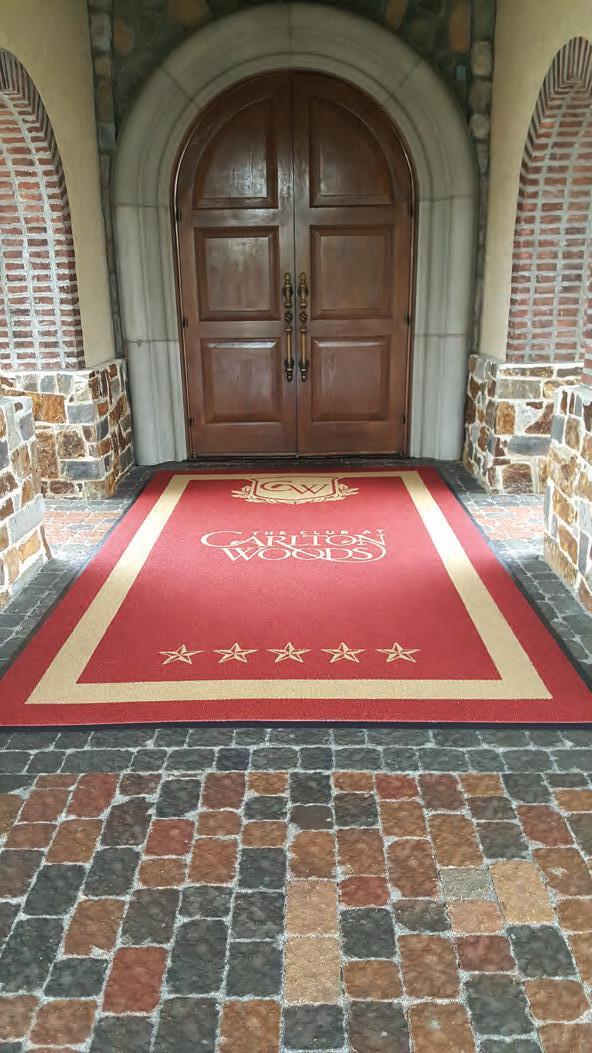












www.verdin.com | 800-543-0488

| wegmandesigngroup.com
BOARDROOM
BraeBurn Country Club, Houston, TX
Hamilton Princess and Beach Club in Hamilton, Bermuda
Ocean View Golf Course in Devonshire, Bermuda
The Mid Ocean Club Golf Course in St. George’s Parish, Bermuda
Nancy Berkley, green committee and marketing committee, Frenchman’s Creek Beach & Country Club, Palm Beach Gardens, FL
Kevin P. A. Broderick, president, Mountain Lake, Lake Wales, FL
Kris Butterfield is director of membership, communications & public relations, Bethesda Country Club and president of PCMA
Rick Callan, president, Fort Collins Country Club, Fort Collins, CO
Jarrett Chirico, USPTA, PTR, PPTA,PPR, director of racquets, Baltimore Country Club, Baltimore, MD
Jonathan Corpina, president, Whippoorwill Club, Armonk, NY
Tony D’Errico, CCM, CCE, COO, Quail West Foundation, Inc., Naples, FL
David A. Devine, first vice president, Detroit Athletic Club, Detroit, MI
Eric Dietz, COO, Mountain Lake, Lake Wales, FL
LuAnn G. Giovannelli, CCM, CAM, COO/GM, Bay Colony Community Association, Inc.
Kevin Given, Quail Valley Golf Club, Vero Beach, FL
Susan Greene, GM/COO, Waterlefe Golf and River Club, Master Property Owners’ Association, Bradenton, FL
Matt Guzik, GM, Tara Iti Golf Club, Te Arai, New Zealand
Jenny Gwinner, GM, Fort Collins Country Club, Fort Collins, CO
Bill Hamilton, Lake Wildwood Golf Course, Penn Valley, CA
Dr. Bonnie Knutson, the Country Club of Lansing and the Michigan Athletic Club
David Lacey, two-term member of the board of governors, Philadelphia Cricket Club, Philadelphia, PA
Nancy Levenburg, member, Spring Lake Country Club, Spring Lake, MI
Matthew Linderman, president, COO/GM Boca West Country Club, Boca Raton, FL
Ben Lorenzen, creative director and director of aquatics and fitness at Champions Run
Michael McCarthy, COO/GM, Addison Reserve Country Club, Delray Beach, FL
Jeremy Melbye, GM/COO, Whippoorwill Club, Armonk, NY
Brian Palmer, superintendent, Tara Iti Golf Club, Te Arai, New Zealand
Pamela Radcliff, SHRM-SCP, CAM, director of human resources, Hideaway Beach Club, Marco Island, FL
Duncan Reno CCM, CCE is the GM/COO at Del Rio Country Club.
Robert Sereci, GM, Medinah Country Club, Medinah, IL













